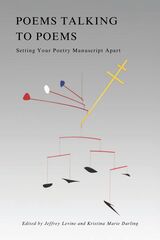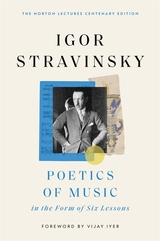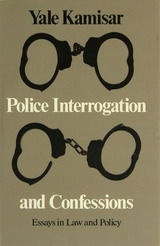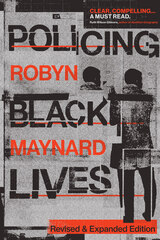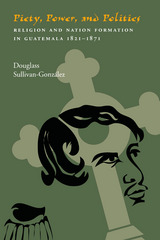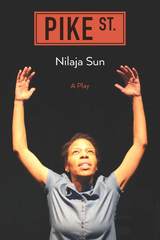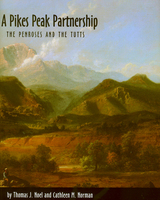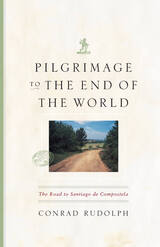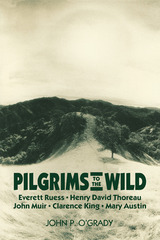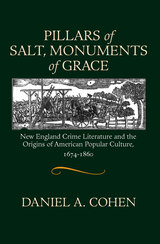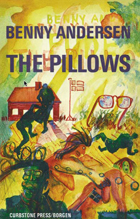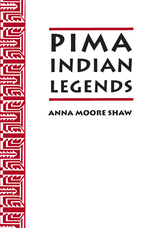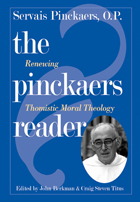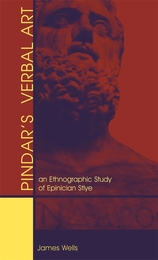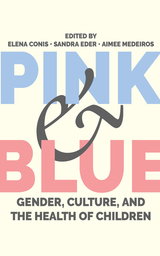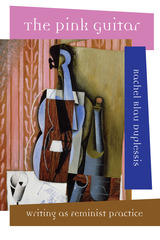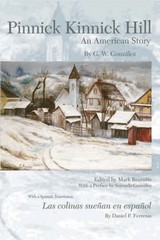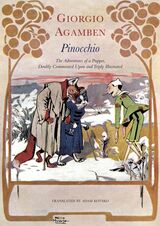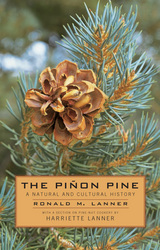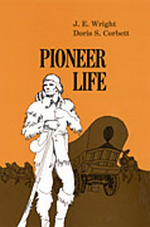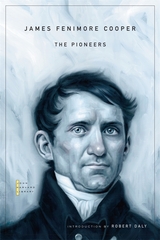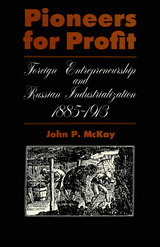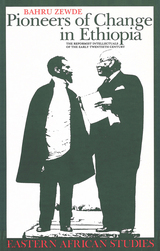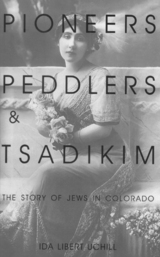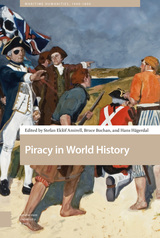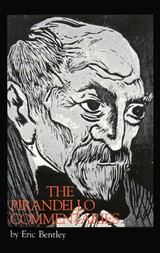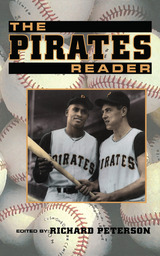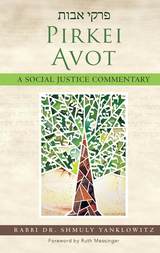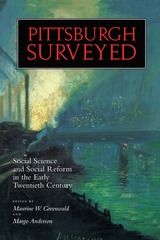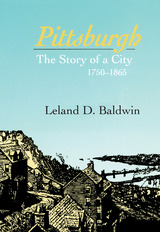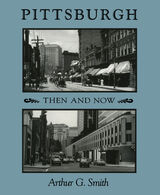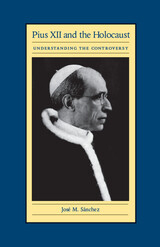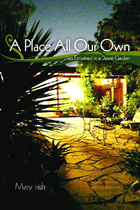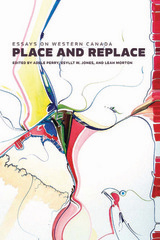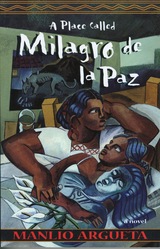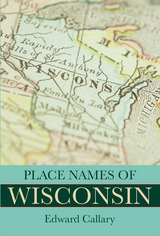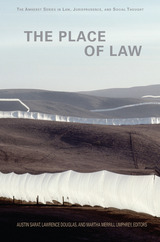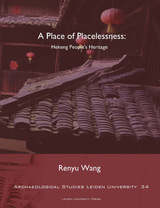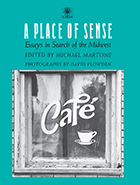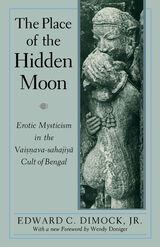Piety, Power, and Politics: Religion and Nation Formation in Guatemala, 1821–1871
Sullivan-Gonzalez D
University of Pittsburgh Press, 2008 Douglass Sullivan-González examines the influence of religion on the development of nationalism in Guatemala during the period 1821–1871, focusing on the relationship between Rafael Carrera and the Guatemalan Catholic Church. He illustrates the peculiar and fascinating blend of religious fervor, popular power, and caudillo politics that inspired a multi-ethnic and multiclass alliance to defend the Guatemalan nation in the mid-nineteenth century.
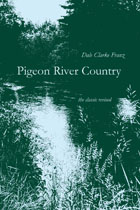 Pigeon River Country: A Michigan Forest
Dale Clarke Franz
University of Michigan Press, 2007 The long awaited new edition of a classic offers memories, myths, and meanings of the largest contiguous piece of wild land in Michigan's Lower Peninsula. This updated edition explores more deeply why and how the outdoors moves and compels us. It’s a book about mice who sing, elk who wear collars, deer who kiss, and birds who could dictate their compositions to Mozart. It's about the human species interacting in generous and sometimes misguided ways with the rest of life. It's about men trying to ripen pinecones into pineapples and women taking better aim with a revolver than expected. It's about poetry—from Mary Oliver, Lao Tzu, and Theodore Roethke—and seeing hawks dive in a night sky or feeling oil geologists shake the earth below. It's about finding fish dead in the river by the thousands and crouching behind a stump to watch beaver build a dwelling. While this book considers life beyond the boundaries of Pigeon River Country, it is steeped in the specifics of a place that lives mostly on its own, instead of human, terms. The Pigeon River Country is a remote northern forest, ecologically distinct from most of the United States. Laced with waterways, it has a storied past. Dale Clarke Franz has collected personal accounts from various people intrigued with the Pigeon River Country—including loggers, conservationists, mill workers, campers, even the young Ernest Hemingway, who said he loved the forest "better than anything in the world." There are comprehensive discussions of the area's flora and fauna, guides to trails and camping sites, and photos showcasing the changing face of this hidden national treasure.
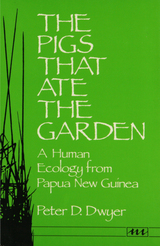 Pigs That Ate the Garden
Peter D. Dwyer
University of Michigan Press, 1990 In The Pigs that Ate the Garden, Peter D. Dwyer examines the subsistence ecology of 109 Etolo people who live on the wet, forested mountain slopes of Papua New Guinea. Dwyer describes the community's method of deliberately placing pigs in gardens so that the pigs depredate the vegetation there. He shows how this practice is actually the community's method of sending a message to itself that serves to resynchronize a switch from sweet potato gardening to sago starch processing. The interrelationships of the different food-producing activities of the Etolo — gardening, hunting, tree-crop cultivation, etc. — are shown to have seasonal rhythms, and these rhythms maximize the Etolo's use of food resources at appropriate times and areas. Dwyer argues that the "shape" of Etolo ecology is ultimately driven by socio-cultural, rather than environmental, forces, and is set within a theoretical frame, concerning processes of communication and change in open systems.
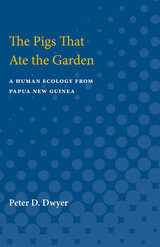 Pigs That Ate the Garden: A Human Ecology from Papua New Guinea
Peter D. Dwyer
University of Michigan Press, 1990 In The Pigs that Ate the Garden, Peter D. Dwyer examines the subsistence ecology of 109 Etolo people who live on the wet, forested mountain slopes of Papua New Guinea. Dwyer describes the community's method of deliberately placing pigs in gardens so that the pigs depredate the vegetation there. He shows how this practice is actually the community's method of sending a message to itself that serves to resynchronize a switch from sweet potato gardening to sago starch processing. The interrelationships of the different food-producing activities of the Etolo — gardening, hunting, tree-crop cultivation, etc. — are shown to have seasonal rhythms, and these rhythms maximize the Etolo's use of food resources at appropriate times and areas. Dwyer argues that the "shape" of Etolo ecology is ultimately driven by socio-cultural, rather than environmental, forces, and is set within a theoretical frame, concerning processes of communication and change in open systems.
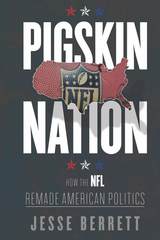 Pigskin Nation: How the NFL Remade American Politics
Jesse Berrett
University of Illinois Press, 2018 Cast as the ultimate hardhats, football players of the 1960s seemed to personify a crewcut traditional manhood that channeled the Puritan work ethic. Yet, despite a social upheaval against such virtues, the National Football League won over all of America—and became a cultural force that recast politics in its own smashmouth image. Jesse Berrett explores pro football's new place in the zeitgeist of the 1960s and 1970s. The NFL's brilliant harnessing of the sports-media complex, combined with a nimble curation of its official line, brought different visions of the same game to both Main Street and the ivory tower. Politicians, meanwhile, spouted gridiron jargon as their handlers co-opted the NFL's gift for spectacle and mythmaking to shape a potent new politics that in essence became pro football. Governing, entertainment, news, elections, celebrity--all put aside old loyalties to pursue the mass audience captured by the NFL's alchemy of presentation, television, and high-stepping style. An invigorating appraisal of a dynamic era, Pigskin Nation reveals how pro football created the template for a future that became our present.
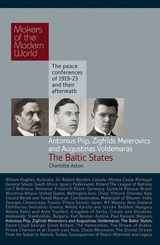 Piip, Meierovics & Voldemaras: The Baltic States
Charlotte Alston
Haus Publishing, 2010 Conflict on the borders of the Russian 'Empire', whatever the complexion of the government controlling it, has been a constant feature of the past 90 years, most recently with Russia's brief war with Georgia in August 2008. In 1919, as the smaller nations on Russia's borders sought self-determination while the Civil War raged between the Whites and the Bolsheviks, the Paris Peace Conference struggled with a situation complicated by mutually exclusive aims. The Baltic States of Latvia, Lithuania and Estonia were seen by both the Russians and the Western Allies as a protective buffer for their own territory, which led to the curious situation that the Peace Conference requested German troops to remain temporarily in the Baltic territory they had occupied during the First World War to block the westward spread of the Bolshevik Revolution. The ongoing civil war in Russia further complicated the issue, because if the Whites should win and restore the 'legitimate' Russian government, the Peace Conference could not divide up the territory of a power that had been one of the original members of the Entente. The US politician Herbert Hoover described Russia as 'Banquo's ghost' at the Paris Peace Conference, an invisible but influential presence, and nowhere can this be more clearly seen than in the deliberations over the Baltic States.
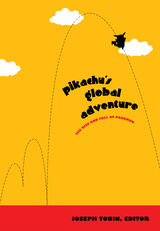 Pikachu's Global Adventure: The Rise and Fall of Pokemon
Joseph Tobin, ed.
Duke University Press, 2004 Initially developed in Japan by Nintendo as a computer game, Pokémon swept the globe in the late 1990s. Based on a narrative in which a group of children capture, train, and do battle with over a hundred imaginary creatures, Pokémon quickly diversified into an array of popular products including comic books, a TV show, movies, trading cards, stickers, toys, and clothing. Pokémon eventually became the top grossing children's product of all time. Yet the phenomenon fizzled as quickly as it had ignited. By 2002, the Pokémon craze was mostly over. Pikachu’s Global Adventure describes the spectacular, complex, and unpredictable rise and fall of Pokémon in countries around the world. In analyzing the popularity of Pokémon, this innovative volume addresses core debates about the globalization of popular culture and about children’s consumption of mass-produced culture. Topics explored include the origins of Pokémon in Japan’s valorization of cuteness and traditions of insect collecting and anime; the efforts of Japanese producers and American marketers to localize it for foreign markets by muting its sex, violence, moral ambiguity, and general feeling of Japaneseness; debates about children’s vulnerability versus agency as consumers; and the contentious question of Pokémon’s educational value and place in school. The contributors include teachers as well as scholars from the fields of anthropology, media studies, sociology, and education. Tracking the reception of Pokémon in Japan, the United States, Great Britain, France, and Israel, they emphasize its significance as the first Japanese cultural product to enjoy substantial worldwide success and challenge western dominance in the global production and circulation of cultural goods. Contributors. Anne Allison, Linda-Renée Bloch, Helen Bromley, Gilles Brougere, David Buckingham, Koichi Iwabuchi, Hirofumi Katsuno, Dafna Lemish, Jeffrey Maret, Julian Sefton-Green, Joseph Tobin, Samuel Tobin, Rebekah Willet, Christine Yano
Pike St.: A Play
Nilaja Sun
Northwestern University Press, 2017 Pike St., Nilaja Sun's highly praised sixth play, vividly brings to life a family on New York's Lower East Side. As a storm approaches, Evelyn is trying to assure the safety of her teenage daughter, Candi, whose unidentified illness has immobilized her. Caring for Candi has forced Evelyn to quit her job as a subway conductor; still, she helps support both her philandering father and her brother, who has returned to New York from Afghanistan and suffers from PTSD. Just behind the grace and humor with which Evelyn manages to hold together her own life and those of the people who depend on her is the constant threat of both natural and man-made disasters.
 Pike's Peak: A Mining Saga
Frank Waters
Ohio University Press, 1987 During the fabulous reign of Colorado Silver, innumerable prospectors passed by Pike’s Peak on their way to the silver strikes at Leadville, Aspen, and the boom camps in the Saguache, Sangre de Cristo, and San Juan mountains. Then, in 1890, a carpenter named Winfield Scott Stratton discovered gold along Cripple Creek. By 1900, this six square mile area on the south slope of Pike’s Peak supported 475 mines and led the world in gold production. Against this backdrop of frenzied mining and gold fever, Pike’s Peak tells the story of Joseph Rogier, a man who seeks and finds his fortune in Colorado, and then loses everything in pursuit of something more important. Arriving in Colorado Springs in the 1870s, Rogier becomes a successful contractor and builder and helps to raise a little mountain town into the Saratoga of the west. He rears a large family and scoffs at the “alfalfa miners” chasing silver strikes everywhere. But with the discovery of gold at nearby Cripple Creek, Rogier is shaken and methodically squanders his prosperous business and all his property attempting to reach the “great gold heart” of Pike’s Peak. Waters’ is a psychologically modern novel whose universal theme is expressed on the grand scale of the opening of a territory. It is both a marvelously colorful and detailed account of the days when Colorado boomed and Denver became a big town, and an allegory of one man’s furious pursuit of the truth within himself.
Pikes Peak Partnership: The Penroses and the Tutts
Thomas J. Noel
University Press of Colorado, 2002 In A Pikes Peak Partnership, historians Tom Noel and Cathleen Norman tell the incredible tale of the two families who transformed Colorado Springs and its environs into a tourist haven. By building the Broadmoor Hotel and other important facilities to attract travelers, Spencer Penrose, who once proclaimed that "any man who works after lunch is a fool," made the Pikes Peak region a pleasure seeker's paradise.
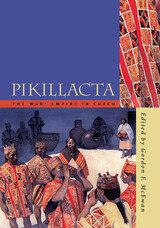 Pikillacta: The Wari Empire in Cuzco
McEwan, Gordon F.
University of Iowa Press, 2005 The origin of the first Andean imperial state has been the subject of lively debate for decades. Archaeological sites dating to the Peruvian Middle Horizon time period, A.D. 540 to 900, appear to give evidence for the emergence of an expansive empire that set the stage for the development of the later Inca state. This archaeological investigation of Pikillacta, the largest provincial site of Peru’s pre-Inca Wari empire, provides essential background for interpreting the empire’s political and cultural organization. With engineering skills rivaling those of the builders of Cuzco itself, the Wari at Pikillacta erected more than seven hundred buildings covering nearly two square kilometers, with a fresh water supply and an elaborate underground sewage system but, enigmatically, only seven short streets and a near total lack of windows. In this long-awaited volume, Gordon McEwan and his colleagues report on the labor costs of construction (nearly 6 million man-days), the typology of Pikillacta's enigmatic architecture, and the site’s spectacular hydraulic system as well as its ceramics and chronology, human remains, and metal artifacts. In the final section, building on his years of research and excavation, McEwan develops a hypothetical model of Wari provincial administration in the Cuzco region, arguing that the Wari were innovators of techniques of statecraft that explain the function of and the labor investment in the Pikillacta complex. His book not only substantively contributes to our understanding of when and exactly how and why Pikillacta was built and what it was used for, it also illuminates the political and cultural antecedents of the Inca state.
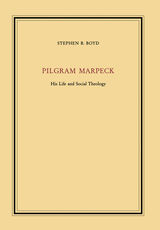 Pilgram Marpeck: His Life and Social Theology
Stephen B. Boyd
Duke University Press, 1992 This intellectual and social history is the first comprehensive biography of Pilgram Marpeck (c. 1495–1556), a radical reformer and lay leader of Anabaptist groups in Switzerland, Austria, and South Germany. Marpeck’s influential life and work provide a glimpse of the theologies and practices of the Roman Church and of various reform movements in sixteenth-century Europe.
Drawing on extensive archival data documenting Marpeck’s professional life, as well as on his numerous published and unpublished writings on theology and religious reform, Stephen B. Boyd traces Marpeck’s unconventional transition from mining magistrate to Anabaptist leader, establishes his connections with various radical social and religious groups, and articulates aspects of his social theology. Marpeck’s distinctive and eclectic theology, Boyd demonstrates, focused on the need for personal, uncoerced conversion, rejected state interference in the affairs of the church, denied the need for a monastic withdrawal from the secular world, and called for the Christian’s active pursuit of justice before God and among human beings.
 Pilgrim Law
Robert E., Jr. Rodes
University of Notre Dame Press, 1998 In this extension of his earlier work, Law and Liberation, Robert E. Rodes, Jr. presents a general theory of law based on the principles of liberation theology. Taking a systematic approach, he points up the compatibility of this theology with traditional doctrines of natural law and traditional Catholic social teaching. His work here advocates using law to make the ruling class accountable to the wider society, alleviating class tensions with a justice based on universal solidarity and the provision of useful services.
Rodes establishes a new category, pilgrim law, which expands the confines of natural law and complements the traditional understanding to include an eschatological dimension. Before doing so, he examines the historical outcome of trying to use law to improve society and reflects, " . . . we were trying to bring history under control, and the thing cannot be done." However, by positing an eschatological dimension to legal issues, he asserts that, "The pursuit of justice through law is eschatologicaly validated even if its historical fruition is problematical."
Philosophers, political theorists, economists, and social scientists as well as lawyers and theologians will find in this volume an engaging look at the theoretical underpinnings of law. The reader will explore how paths of church and state, justice and empowerment, class and poverty, history and consciousness have intersected along the pilgrim journey.
Robert E. Rodes, Jr., is Professor of Law at the University of Notre Dame Law School with chief research interests in legal history, jurisprudence, and church-state relations.
----------
"This is a powerful and telling book, instructive on every page, and splendidly lucid throughout. One need not go all the way with Rodes in distinguishing 'natural' from 'pilgrim' law to be grateful for this book's many insights..." --John Finnis, Oxford
 Pilgrimage and Healing
Edited by Jill Dubisch and Michael Winkelman
University of Arizona Press, 2005 Bikers converge at the Vietnam Veterans Memorial in Washington, D.C. Thousands flock to a Nevada desert to burn a towering effigy. And the hopeless but hopeful ill journey to Lourdes as they have for centuries. Although pilgrimage may seem an antiquated religious ritual, it remains a vibrant activity in the modern world as pilgrims combine traditional motives—such as seeking a cure for physical or spiritual problems—with contemporary searches for identity or interpersonal connection. That pilgrimage continues to exercise such a strong attraction is testimony to the power it continues to hold for those who undertake these sacred journeys.
This volume brings together anthropological and interdisciplinary perspectives on these persistent forms of popular religion to expand our understanding of the role of the traditional practice of pilgrimage in what many believe to be an increasingly secular world. Focusing on the healing dimensions of pilgrimage, the authors present case studies grounded in specific cultures and pilgrimage traditions to help readers understand the many therapeutic resources pilgrimage provides for people around the world. The chapters examine a variety of pilgrimage forms, both religious and non-religious, from Nepalese and Huichol shamanism pilgrimage to Catholic journeys to shrines and feast days to Nevada’s Burning Man festival. These diverse cases suggest a range of meanings embodied in the concept of healing itself, from curing physical ailments and redefining the self to redressing social suffering and healing the wounds of the past.
Collectively and individually, the chapters raise important questions about the nature of ritual in general, and healing through pilgrimage in particular, and seek to illuminate why so many participants find pilgrimage a compelling way to address the problem of suffering. They also illustrate how pilgrimage exerts its social and political influence at the personal, local, and national levels, as well as providing symbols and processes that link people across social and spiritual boundaries. By examining the persistence of pilgrimage as a significant source of personal engagement with spirituality, Pilgrimage and Healing shows that the power of pilgrimage lies in its broad transformative powers. As our world increasingly adopts a secular and atheistic perspective in many domains of experience, it reminds us that, for many, spiritual quest remains a potent force.
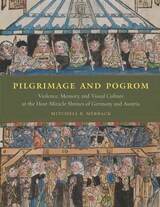 Pilgrimage and Pogrom: Violence, Memory, and Visual Culture at the Host-Miracle Shrines of Germany and Austria
Mitchell B. Merback
University of Chicago Press, 2013 In the late Middle Ages, Europe saw the rise of one of its most virulent myths: that Jews abused the eucharistic bread as a form of anti-Christian blasphemy, causing it to bleed miraculously. The allegation fostered tensions between Christians and Jews that would explode into violence across Germany and Austria. And pilgrimage shrines were built on the sites where supposed desecrations had led to miracles or to anti-Semitic persecutions. Exploring the legends, cult forms, imagery, and architecture of these host-miracle shrines, Pilgrimage and Pogrom reveals how they not only reflected but also actively shaped Christian anti-Judaism in the two centuries before the Reformation. Mitchell B. Merback studies surviving relics and eucharistic cult statues, painted miracle cycles and altarpieces, propaganda broadsheets, and more in an effort to explore how accusation and legend were transformed into propaganda and memory. Merback shows how persecution and violence became interdependent with normative aspects of Christian piety, from pilgrimage to prayers for the dead, infusing them with the ideals of crusade. Valiantly reconstructing the cult environments created for these sacred places, Pilgrimage and Pogrom is an illuminating look at Christian-Jewish relations in premodern Europe.
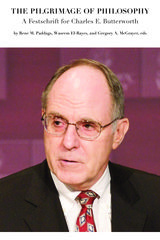 The Pilgrimage of Philosophy: A Festschrift for Charles E. Butterworth
el-rayes
St. Augustine's Press, 2019 This book intends to introduce readers to the work of Charles E. Butterworth, and thereby to introduce students to Medieval islamic political philosophy, of which Butterworth is one of the world’s most prominent scholars. In a wider sense, the Festschrift introduces its readers to the current debates on Medieval islamic political philosophy, related as they are to the questions of the relationship between islam and Christianity, the Medieval to the Modern world, and reason and revelation. Butterworth’s scholarship spans six decades, primarily translating, editing, and interpreting the works of the Muslim political philosopher Alfarabi (d. 950) and Averroes (Ibn Rushd, d. 1198). He began his studies of Muslim political philosophy at a time when the Middle East and islam did not have the political salience they have acquired in more recent years. instead, Butterworth’s reason for engaging with islam was rooted in the question of the relationship between reason and revelation.
While one possible answer was pursued in the Christian, latin West, the islamic borderlands of Greek, Roman, and Muslim civilization offered another. By exploring Averroes, who provides the possibility of an Aristotelian-Islamic political philosophy, and Alfarabi, who pursues a Platonic-islamic political philosophy, Butterworth showed how islamic civilization provided a viable alternative to the theologico-political question reason v revelation, as well as serving as an inspiration to the latin West.
The Pilgrimage of Robert Langton
Robert Langton
Harvard University Press Until the discovery of this pamphlet in Lincoln Cathedral, it was known only by report to the “Dictionary of National Biography” and was not mentioned in Mr. Duff’s “Hand Lists of Books Printed by London Printers.” It was originally issued on November 18, 1523, printed entirely in black letter, with charming bits of decoration and two wood-cuts which are faithfully reproduced in our edition. Langton’s title states that he offers an account of his pilgrimage to the shrine of St. James at Compostella as well as to other holy places; but this promise is scarcely fulfilled in the work itself. Nevertheless the book has an interest of its own, and the unique character of the Lincoln copy makes that interest all the greater.
 Pilgrimage: Past and Present in the World Religions
Simon Coleman and John Elsner
Harvard University Press, 1995 From the Great Panathenaea of ancient Greece to the hajj of today, people of all religions and cultures have made sacred journeys to confirm their faith and their part in a larger identity. This book is a fascinating guide through the vast and varied cultural territory such pilgrimages have covered across the ages. The first book to look at the phenomenon and experience of pilgrimage through the multiple lenses of history, religion, sociology, anthropology, and art history, this sumptuously illustrated volume explores the full richness and range of sacred travel as it maps the cultural imagination.
The authors consider pilgrimage as a physical journey through time and space, but also as a metaphorical passage resonant with meaning on many levels. It may entail a ritual transformation of the pilgrim's inner state or outer status; it may be a quest for a transcendent goal; it may involve the healing of a physical or spiritual ailment. Through folktales, narratives of the crusades, and the firsthand accounts of those who have made these journeys; through descriptions and pictures of the rituals, holy objects, and sacred architecture they have encountered, as well as the relics and talismans they have carried home, Pilgrimage evokes the physical and spiritual landscape these seekers have traveled. In its structure, the book broadly moves from those religions--Judaism, Christianity, and Islam--that cohere around a single canonical text to those with a multiplicity of sacred scriptures, like Hinduism and Buddhism. Juxtaposing the different practices and experiences of pilgrimage in these contexts, this book reveals the common structures and singular features of sacred travel from ancient times to our own.
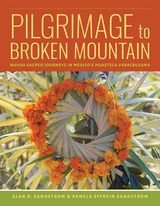 Pilgrimage to Broken Mountain: Nahua Sacred Journeys in Mexico's Huasteca Veracruzana
by Alan R. Sandstrom & Pamela Effrein Sandstrom illustrated by Michael K. Aakhus, Ana Laura Ávila-Myers & Michael A. Sandstrom
University Press of Colorado, 2022 An ethnographic study based on decades of field research, Pilgrimage to Broken Mountain explores five sacred journeys to the peaks of venerated mountains undertaken by Nahua people living in northern Veracruz, Mexico. Punctuated with elaborate ritual offerings dedicated to the forces responsible for rain, seeds, crop fertility, and the well-being of all people, these pilgrimages are the highest and most elaborate form of Nahua devotion and reveal a sophisticated religious philosophy that places human beings in intimate contact with what Westerners call the forces of nature. Alan and Pamela Sandstrom document them for the younger Nahua generation, who live in a world where many are lured away from their communities by wage labor in urban Mexico and the United States.
Pilgrimage to Broken Mountain contains richly detailed descriptions and analyses of ritual procedures as well as translations from the Nahuatl of core myths, chants performed before decorated altars, and statements from participants. Particular emphasis is placed on analyzing the role of sacred paper figures that are produced by the thousands for each pilgrimage. The work contains drawings of these cuttings of spirit entities along with hundreds of color photographs illustrating how they are used throughout the pilgrimages. The analysis reveals the monist philosophy that underlies Nahua religious practice in which altars, dancing, chanting, and the paper figures themselves provide direct access to the sacred.
In the context of their pilgrimage traditions, the ritual practices of Nahua religion show one way that people interact effectively with the forces responsible for not only their own prosperity but also the very survival of humanity. A magnum opus with respect to Nahua religion and religious practice, Pilgrimage to Broken Mountain is a significant contribution to several fields, including but not limited to anthropology, Indigenous literatures of Mesoamerica, Nahuatl studies, Latinx and Chicanx studies, and religious studies.
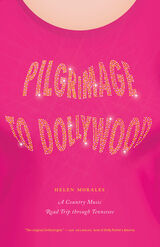 Pilgrimage to Dollywood: A Country Music Road Trip through Tennessee
Helen Morales
University of Chicago Press, 2014 A star par excellence, Dolly Parton is one of country music’s most likable personalities. Even a hard-rocking punk or orchestral aesthete can’t help cracking a smile or singing along with songs like “Jolene” and “9 to 5.” More than a mere singer or actress, Parton is a true cultural phenomenon, immediately recognizable and beloved for her talent, tinkling laugh, and steel magnolia spirit. She is also the only female star to have her own themed amusement park: Dollywood in Pigeon Forge, Tennessee. Every year thousands of fans flock to Dollywood to celebrate the icon, and Helen Morales is one of those fans.
In Pilgrimage to Dollywood, Morales sets out to discover Parton’s Tennessee. Her travels begin at the top celebrity pilgrimage site of Elvis Presley’s Graceland, then take her to Loretta Lynn’s ranch in Hurricane Mills; the Country Music Hall of Fame and the Grand Ole Opry in Nashville; to Sevierville, Gatlinburg, and the Great Smoky Mountains National Park; and finally to Pigeon Forge, home of the “Dolly Homecoming Parade,” featuring the star herself as grand marshall. Morales’s adventure allows her to compare the imaginary Tennessee of Parton’s lyrics with the real Tennessee where the singer grew up, looking at essential connections between country music, the land, and a way of life. It’s also a personal pilgrimage for Morales. Accompanied by her partner, Tony, and their nine-year-old daughter, Athena (who respectively prefer Mozart and Miley Cyrus), Morales, a recent transplant from England, seeks to understand America and American values through the celebrity sites and attractions of Tennessee.
This celebration of Dolly and Americana is for anyone with an old country soul who relies on music to help understand the world, and it is guaranteed to make a Dolly Parton fan of anyone who has not yet fallen for her music or charisma.
Pilgrimage to the End of the World: The Road to Santiago de Compostela
Conrad Rudolph
University of Chicago Press, 2004 Traveling two and a half months and one thousand miles along the ancient route through southern France and northern Spain, Conrad Rudolph made the passage to the holy site of Santiago de Compostela, one of the most important modern-day pilgrimage destinations for Westerners. In this chronicle of his travels to this captivating place, Rudolph melds the ancient and the contemporary, the spiritual and the physical, in a book that is at once travel guide, literary work, historical study, and memoir.
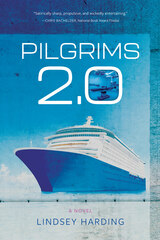 Pilgrims 2.0: A Novel
Lindsey Harding
Acre Books, 2023 A novel following four passengers on a luxury cruise line that promises complete reinvention through plastic surgery.
PILGRIM, Canterbury Cruise Line’s flagship, promises its passengers not just a luxurious fortnight away but the opportunity for reinvention. This extraordinary journey is made possible by the captain and visionary plastic surgeon Dr. Walter Heston, by the vessel’s self-learning artificial intelligence called BECCA, and an all-male crew of room stewards, deck hands, technicians, and cosmetic practitioners.
Pilgrims 2.0 begins on the eve of Cruise #52 and follows four women eager for transformation. Meet Bianca, the aging athlete determined to resume the competitive tennis career that motherhood sidelined. Meet Nicole, whose mommy makeover will mean she can stop hiding herself, and her debt, from her husband. Meet Lyla, an infertile maternity-ward nurse desperate to experience pregnancy, and Annalie, who wants only to stop seeing her dead twin every time she looks in the mirror. At the center of the story is Dr. Heston himself, driven to do with bodies what his late wife, Rebecca, could do with computer code—make the impossible, possible.
But “excursions” like these aren’t always smooth sailing—especially on this voyage, where the hopes, histories, and obsessions of clients and crew members collide. When a disruptive crewman’s pranks turn dangerous, it becomes clear that some of those who embarked won’t return to the Port of Los Angeles—at least not fully, at least not as themselves, and maybe not with their lives.
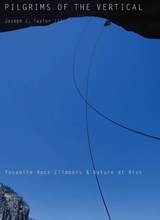 Pilgrims of the Vertical: Yosemite Rock Climbers and Nature at Risk
Joseph E. Taylor III
Harvard University Press, 2010 Few things suggest rugged individualism as powerfully as the solitary mountaineer testing his or her mettle in the rough country. Yet the long history of wilderness sport complicates this image. In this surprising story of the premier rock-climbing venue in the United States, Pilgrims of the Vertical offers insight into the nature of wilderness adventure.
From the founding era of mountain climbing in Victorian Europe to present-day climbing gyms, Pilgrims of the Vertical shows how ever-changing alignments of nature, technology, gender, sport, and consumer culture have shaped climbers’ relations to nature and to each other. Even in Yosemite Valley, a premier site for sporting and environmental culture since the 1800s, elite athletes cannot be entirely disentangled from the many men and women seeking recreation and camaraderie.
Following these climbers through time, Joseph Taylor uncovers lessons about the relationship of individuals to groups, sport to society, and nature to culture. He also shows how social and historical contexts influenced adventurers’ choices and experiences, and why some became leading environmental activists—including John Muir, David Brower, and Yvon Chouinard. In a world in which wild nature is increasingly associated with play, and virtuous play with environmental values, Pilgrims of the Vertical explains when and how these ideas developed, and why they became intimately linked to consumerism.
 Pilgrims to the Northland: The Archdiocese of St. Paul, 1840-1962
Marvin R. O'Connell
University of Notre Dame Press, 2009
This is the first narrative history of the Archdiocese of St. Paul, from 1840 to 1962. Historian Marvin R. O'Connell brings to life the extraordinary labors and accomplishments of the French priests who came to the upper midwest territory during the first half of the nineteenth century. Over the next fifty years a flood of settlers, primarily Irish and German Catholics, filled up the land. In 1850 Rome created a new diocese centered in the village of St. Paul, and in 1851 French priest Joseph Cretin was named its first bishop.
O'Connell's lively account stresses the social, economic, and political context in which the Catholic Church in Minnesota grew and evolved. He vividly illuminates the personalities of the bishops who followed Cretin, Thomas Grace (1859–84) and John Ireland (1884–1918). Ireland inherited a sophisticated system of churches, schools, orphanages, and hospitals, staffed by orders of religious men and women. Ireland built upon this legacy, founding colleges for men and women, a major seminary, and cathedrals in both St. Paul and Minneapolis. Ireland's successors, Austin Dowling (1919–30) and John Gregory Murray (1931–56) were not as colorful as Ireland, although Murray was immensely popular. William Brady is the final archbishop covered in this book, serving from 1956 to 1961 when he died unexpectedly from a heart attack. O’Connell ends his narrative In 1962, soon after the death of Archbishop Brady and a few months before the first session of Vatican II.
"With a sweeping overview, cogent detail, and witty insight, Marvin O'Connell tells the stories of the people who built the Archdiocese of St. Paul: men of energy, grace, vision, and not a little political skill; scoundrels and scalawags on a fluid frontier; women religious who made possible the schools and hospitals that nurtured the faithful; families who built churches through deep faith and painful sacrifice. We see these real people, with personalities and passions and flaws, leaving enduring marks on Minnesota's landscape. This is a grand tale on a grand scale."—Ann Regan, author of Irish in Minnesota
“Marvin O'Connell's magisterial Pilgrims to the Northland provides a detailed, colorful, and readable history of the Catholic Archdiocese of St. Paul. Deeply researched, O'Connell's revealing history breathes life into the challenges, disappointments, and triumphs of generations of Catholics who built modest frontier chapels, thriving ethnic churches, and sprawling suburban parishes to serve the spiritual needs of a diverse people. Readers will savor a narrative rich in the ambiance of Catholic culture and in deft portraits of memorable figures, including ascetic pioneer pastors, assertive women religious, rascal priests, and visionary leaders. From Augustin Ravoux's Dakota language catechism to Virgil Michel's legendary Liturgical Press and Louis Gales's Catechetical Guild and Catholic Digest, Minnesota Catholics practiced their faith and wrote about it. This is an essential interpretation of Catholicism in the Upper Midwest in the years before Vatican II. O'Connell's delightful prose makes history more absorbing than fiction!” —Anne Klejment, University of St. Thomas
“Fr. O’Connell’s Pilgrims to the Northland offers an account of the Archdiocese of St. Paul from its earliest beginnings to the years just preceding the Second Vatican Council. O’Connell does history as it should be done, taking account of the great deeds and the great personalities but also the less successful moments and the less admirable personalities who are also a part of the story. Overall, this is a well-researched, thoroughly engaging and beautifully written treatment of its subject.” —Scott Wright, University of St. Thomas, author of Gather Us In: A History of the Parishes of the Archdiocese of Saint Paul and Minneapolis
Pilgrims To The Wild
John P O'Grady
University of Utah Press, 1993 Pilgrims to the Wild is a survey of American writers who have responded to their encounters with the natural world. Ranging in its treatment from Thoreau’s important but neglected essay, 'Walking,' to the exuberant letters of the young artist Everett Ruess (who disappeared in the Escalante canyonlands), this is a broadly based exploration that brings to bear Eastern and Western classical philosophy, as well as contemporary critical theory, on a distinctive tradition of American Writing—those works concerned with the human relationship to the nonhuman world. In addition to offering a fresh interpretation of classic authors such a Thoreau and Muir, this book introduces readers to the less widely known but equally fascinating writers Clarence King and Mary Austin.
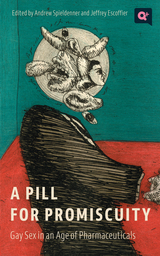 A Pill for Promiscuity: Gay Sex in an Age of Pharmaceuticals
Andrew R. Spieldenner
Rutgers University Press, 2023 2024 Best Book of the Year Award by the GLBTQ Division of the National Communication Association
Finalist for Lambda Literary Award for Best LGBTQ+ Anthology
For a generation of gay men who came of age in the 1980s and 1990s, becoming sexually active meant confronting the dangers of catching and transmitting HIV. In the 21st century, however, the development of viral suppression treatments and preventative pills such as PrEP and nPEP has massively reduced the risk of acquiring HIV. Yet some of the stigma around gay male promiscuity and bareback sex has remained, inhibiting open dialogues about sexual desire, risk, and pleasure.
A Pill for Promiscuity brings together academics, artists, and activists—from different generations, countries, ethnic backgrounds, and HIV statuses—to reflect on how gay sex has changed in a post-PrEP era. Some offer personal perspectives on the value of promiscuity and the sexual communities it fosters, while others critique unequal access to PrEP and the increased role Big Pharma now plays in gay life. With a diverse group of contributors that includes novelist Andrew Holleran, trans scholar Lore/tta LeMaster, cartoonist Steve MacIsaac, and pornographic film director Mister Pam, this book asks provocative questions about how we might reimagine queer sex and sexuality in the 21st century.
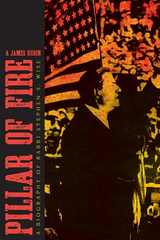 Pillar of Fire: A Biography of Stephen S. Wise
A. James Rudin
Texas Tech University Press During his long career, Rabbi Stephen Samuel Wise received letters with only two words written on the envelope: “Rabbi USA.”
But the United States Postal Service was never in doubt about the intended recipient: there was only one “Rabbi USA.” No other rabbi before or since Wise has dominated the American and the international scene with such passion and power. Both his admirers and opponents—there was no shortage of either group—acknowledged him as the premier leader of the American Jewish community and a major political figure.
Pillar of Fire goes behind the headlines and the once-closed archives of the White House and the State Department to reveal the complex and controversial personal relationship between Wise and President Franklin D. Roosevelt when millions of lives hung in the balance during the Holocaust. It also explores Wise’s remarkable relationships with both President Woodrow Wilson and United States Supreme Court Justice Louis D. Brandeis. Finally, the book describes how Wise’s extraordinary actions in the realm of social justice and human rights permanently influenced every clergyperson, seminary. and house of worship in America.
A Pillar of Fire to Follow: American Indian Dramas, 1808–1859
Priscilla Sears
University of Wisconsin Press, 1982 A Pillar of Fire to Follow concerns the Indian dramas, a series of popular, nineteenth-century American melodramas that deal with the interaction of Indians and Anglo-Europeans. Priscilla Sears has analyzed these works from a mythological point of view, concentrating on the myths of Indian and Anglo-European identity and destiny and the ways in which they relieve the guilt emanating from contemporary Indian policy and the symbolic betrayal of fathers.
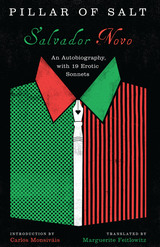 Pillar of Salt: An Autobiography, with 19 Erotic Sonnets
By Salvador Novo, Translated by Marguerite Feitlowitz, Introduction by Carlos Monsiváis
University of Texas Press, 2014 Written with exquisite sensitivity and wit, this memoir by one of Mexico’s foremost men of letters describes coming of age during the violence of the Mexican Revolution and “living dangerously” as an openly homosexual man in a brutally machista society. Salvador Novo (1904–1974) was a provocative and prolific cultural presence in Mexico City through much of the twentieth century. With his friend and fellow poet Xavier Villaurrutia, he cofounded Ulises and Contemporáneos, landmark avant-garde journals of the late 1920s and 1930s. At once “outsider” and “insider,” Novo held high posts at the Ministries of Culture and Public Education and wrote volumes about Mexican history, politics, literature, and culture. The author of numerous collections of poems, including XX poemas, Nuevo amor, Espejo, Dueño mío, and Poesía 1915–1955, Novo is also considered one of the finest, most original prose stylists of his generation. Pillar of Salt is Novo’s incomparable memoir of growing up during and after the Mexican Revolution; shuttling north to escape the Zapatistas, only to see his uncle murdered at home by the troops of Pancho Villa; and his initiations into literature and love with colorful, poignant, complicated men of usually mutually exclusive social classes. Pillar of Salt portrays the codes, intrigues, and dynamics of what, decades later, would be called “a gay ghetto.” But in Novo’s Mexico City, there was no name for this parallel universe, as full of fear as it was canny and vibrant. Novo’s memoir plumbs the intricate subtleties of this world with startling frankness, sensitivity, and potential for hilarity. Also included in this volume are nineteen erotic sonnets, one of which was long thought to have been lost.
Pillar of Salt: Gender, Memory, and the Perils of Looking Back
Haaken, Janice
Rutgers University Press, 2000 Pillar of Salt introduces the controversy over recollections of childhood sexual abuse as the window onto a much broader field of ideas concerning memory, storytelling, and the psychology of women. The book moves beyond the poles of “true” and “false” memories to show how women’s stories reveal layers of gendered and ambiguous meanings, spanning a wide historical, cultural, literary, and clinical landscape. The author offers the concept of transformative remembering as an alternative framework for looking back, one that makes use of fantasy in understanding the narrative truth of childhood recollections.Haaken provides an alternative reading of clinical material, showing how sexual storytelling transcends the symbolic and the “real” and how cultural repression of desire remains as problematic for women as the psychological legacy of trauma.
Pillar of Salt: Gender, Memory, and the Perils of Looking Back
Haaken, Janice
Rutgers University Press, 1998 Pillar of Salt introduces the controversy over recollections of childhood sexual abuse as the window onto a much broader field of ideas concerning memory, storytelling, and the psychology of women. The book moves beyond the poles of “true” and “false” memories to show how women’s stories reveal layers of gendered and ambiguous meanings, spanning a wide historical, cultural, literary, and clinical landscape. The author offers the concept of transformative remembering as an alternative framework for looking back, one that makes use of fantasy in understanding the narrative truth of childhood recollections.Haaken provides an alternative reading of clinical material, showing how sexual storytelling transcends the symbolic and the “real” and how cultural repression of desire remains as problematic for women as the psychological legacy of trauma.
 Pillars of Justice: Lawyers and the Liberal Tradition
Owen Fiss
Harvard University Press, 2017 Pillars of Justice explores the purpose and possibilities of life in the law through moving accounts of thirteen lawyers who shaped the legal world during the past half century.
Some, such as Thurgood Marshall, were Supreme Court Justices. Others, like John Doar and Burke Marshall, set the civil rights policies of the federal government during the 1960s. Some, including Harry Kalven and Catharine MacKinnon, have taught at the greatest law schools of the nation and nourished the liberalism rooted in the civil rights era. Jurists from abroad—Aharon Barak, for example—were responsible for the rise of the human rights movement that today carries the burden of advancing liberal values. These lawyers came from diverse backgrounds and held various political views. What unites them is a deep, abiding commitment to Brown v. Board of Education as an exceptional moment in the life of the law—a willingness to move mountains, if need be, to ensure that we are living up to our best selves. In tracing how these lawyers over a period of fifty years used the Brown ruling and its spirit as a beacon to guide their endeavors, this history tells the epic story of the liberal tradition in the law.
For Owen Fiss, one of the country’s leading constitutional theorists, the people described were mentors, colleagues, friends. In his portraits, Fiss tries to identify the unique qualities of mind and character that made these individuals so important to the institutions and legal principles they served.
Pillars of Salt, Monuments of Grace: New England Crime Literature and the Origins of American Popular Culture, 1674-1860
Daniel A. Cohen
University of Massachusetts Press, 2006 In this innovative study, Daniel A. Cohen explores a major cultural shift embodied in hundreds of early New England crime publications. Tracing the declining authority of Puritan ministers, he shows how the arbiters of an increasingly pluralistic literary marketplace gradually supplanted pious execution sermons with last-speech broadsides, gallows verses, criminal autobiographies, trial reports, newspaper stories, and romantic docudramas. Pillars of Salt, Monuments of Grace probes the forgotten origins of our modern mass media's preoccupation with crime and punishment.
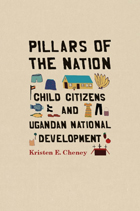 Pillars of the Nation: Child Citizens and Ugandan National Development
Kristen E. Cheney
University of Chicago Press, 2007 How can children simultaneously be the most important and least powerful people in a nation? In her innovative ethnography of Ugandan children—the pillars of tomorrow’s Uganda, according to the national youth anthem—Kristen E. Cheney answers this question by exploring the daily contradictions children face as they try to find their places amid the country’s rapidly changing social conditions.
Drawing on the detailed life histories of several children, Cheney shows that children and childhood are being redefined by the desires of a young country struggling to position itself in the international community. She moves between urban schools, music festivals, and war zones to reveal how Ugandans are constructing childhood as an empowering identity for the development of the nation. Moreover, through her analysis of children’s rights ideology, national government strategy, and children’s everyday concerns, Cheney also shows how these young citizens are vitally linked to the global political economy as they navigate the pitfalls and possibilities for a brighter tomorrow.
The Pillow Museum: Stories
Claire Bateman
University of Alabama Press, 2025 A collection of 56 flash fictions, micro-essays, and contemporary fables about the burden on women and families. The Pillow Museum is a collection of 56 flash fictions, micro-essays, and contemporary fables set in various simulacra of our world. Claire Bateman’s gorgeous prose captures the imagination with closely observed details of people and places that are startlingly familiar yet unreal, where nothing can be taken for granted, including narrative logic: "It was snowing the night they had the fight about the glass piano whose music provided all the light in the house." In an authoritative voice that offers no apologies or justifications, The Pillow Museum evokes a closely observed slipstream strangeness that refuses to take any moment or detail for granted—a fruitful, delirious disruption.
The Pillows
Benny Andersen
Northwestern University Press, 1995 A collection of 16 uniquely funny short stories by acclaimed Danish poet Benny Andersen.
Pima Indian Legends
Anna Moore Shaw
University of Arizona Press, 1968 Coyote, Eagle-man, quail, bear, and other charaters relate their adventures in two dozen delightful tales Anna Shaw heard her father tell when she was young. The author, a Pima herself, unfolds twenty-four charming Indian tales as passed down from generation to generation. Simple, and beautiful in design and content. A delight for all ages.
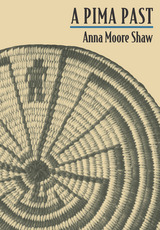 A Pima Past
Anna Moore Shaw
University of Arizona Press, 1974 "In simple, unaffected prose, Mrs. Shaw constructs a moving saga of Native Americans caught between their tribal past and a Europeanized present. . . . Some of the most interesting passages deal with the wrenching realities of Indian life on the reservation in the years around the turn of the century, when the Indian male as a warrior found himself bereft of his very reason for being and forced to endeavor to become a farmer."—Journal of Arizona History
"A most interesting book. . . . [Shaw's] account of how the Pima Indians lived, their family structure, how they reared their children, courtship and marriage, how they treated their elders, their religious practices before the coming of a Christian missionary in 1870, and their accommodation with death are related in language that can be easily understood by the layman and, yet, provide information which can be used by the sociologist and anthropologist."—Journal of the West
"The current trend in books written by American Indians is to idealize the Indian past while condemning white culture. This volume is a notable exception because its author is old enough to remember the past and because she has been successful in adapting those elements of white culture which she found useful without sacrificing this essential heritage. . . . The style is simple and straightforward, that of a good storyteller which reaches all adult levels."—Choice
"Simple and charming reminiscences of the old Pima ways at the turn of the century when they still prevailed and of the changes which recent decades have brought about in the lives of the desert people."—Books of the Southwest
"Throughout [Shaw's] account a special kind of humor, sensitivity, and pride is revealed when discussing her peoples and her own personal experiences."—The Masterkey
A Pima Remembers
George Webb
University of Arizona Press, 1959 "A flavorsome re-creation of things past in the life of a generous, friendly people." —New York Times Book Review
"George Webb's gentle recollections of his childhood and Pima Indian lifeways will doubtless endure forever. This deeply moving autobiography is the perfect introduction for younger Pimas to their culture and history." —Arizona Highways
 Piman Shamanism and Staying Sickness (Ká:cim Múmkidag)
Donald M. Bahr, Juan Gregorio, David I. Lopez, and Albert Alvarez
University of Arizona Press, 1974 Piman shamanism is based on the belief that morality and some forms of sickness are interrelated. The shaman, or medicine man, has a dual role in the Piman Indian culture. He is the guardian of the Pimans’ health and their consciousness of cultural identity.
This definitive study of shamanic theory and practice was developed through a four-person collaboration: three Tohono O’odham Indians—a shaman, a translator, and a trained linguist—and a non-Indian explicator. It provides an in-depth examination of the Piman philosophy of sickness as well as an introduction to the world view of an entire people.
Using the most highly developed techniques of modern ethnolinguistics, anthropologist Bahr investigates the culturally based concept of staying sickness. He conducted extensive discussions in the Piman language with shaman Gregorio. The native informant theorized at length about the cause of staying sickness, the dúajida (divination), and ritual prayers. The translator and the linguist analyzed the content and style of Gregorio’s discussions. Texts in the Piman language of Gregorio’s discussions are included, as well as literal and idiomatic English translations.
American Anthropologist cites “the infinite care with which each utterance has been analyzed” and “the richness of cultural expression captured in the texts themselves and in their explanation. To read Piman Shamanism and Staying Sickness is to become familiar with the unique properties of Piman thinking and modes of expression: abstract, elliptical, contracted, and yet filled with a rich and natural imagery.”
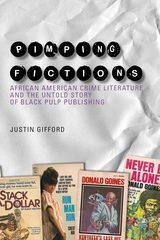 Pimping Fictions: African American Crime Literature and the Untold Story of Black Pulp Publishing
Justin Gifford
Temple University Press, 2013 "Lush sex and stark violence colored Black and served up raw by a great Negro writer," promised the cover of Run Man Run, Chester Himes' pioneering novel in the black crime fiction tradition. In Pimping Fictions, Justin Gifford provides a hard-boiled investigation of hundreds of pulpy paperbacks written by Himes, Donald Goines, and Iceberg Slim (aka Robert Beck), among many others.
Gifford draws from an impressive array of archival materials to provide a first-of-its-kind literary and cultural history of this distinctive genre. He evaluates the artistic and symbolic representations of pimps, sex-workers, drug dealers, and political revolutionaries in African American crime literature-characters looking to escape the racial containment of prisons and the ghetto.
Gifford also explores the struggles of these black writers in the literary marketplace, from the era of white-owned publishing houses like Holloway House-that fed books and magazines like Players to eager black readers-to the contemporary crop of African American women writers reclaiming the genre as their own.
The Pinckaers Reader: Renewing Thomistic Moral Theology
Servais Pinckaers O.P.
Catholic University of America Press, 2005 The first collection of its kind available in any language, this volume features the twenty most significant essays written by Pinckaers since his highly praised Sources.
Pindar's Verbal Art: An Ethnographic Study of Epinician Style
James Bradley Wells
Harvard University Press, 2009 In Pindar’s Verbal Art, James Bradley Wells argues that the victory song is a traditional art form that appealed to a popular audience and served exclusive elite interests through the inclusive appeal of entertainment, popular instruction, and laughter. This is the first study of Pindar’s language that applies performance as a method for the ethnographic description and interpretation of entextualized records of verbal art. In Mikhail Bakhtin’s terms, Pindar’s Verbal Art is a sociological stylistics of epinician language and demonstrates that Pindar’s is a highly dialogical form of art, an intertextual web of voices, whose study enables us to appreciate popular dimensions of his songs. Wells offers a new take on recurrent Pindaric questions: genre, the unity of the victory song, tradition, and, principally, epinician performance.
Pine
Jonathan Johnson
Carnegie Mellon University Press, 2025 Poems that travel through time and terrain, seeking solace in the raw physicality of the world.
To grieve is to search. In Pine, Jonathan Johnson’s poems travel across continents: through Michigan’s Upper Peninsula, the Scottish Highlands, the Greek islands, and the mountain wildernesses of the American Northwest, seeking meaning in the spaces left behind. These poems embrace the raw physicality of place, uncovering the deep textures of the natural world as both a witness and companion to loss.
Amid the perpetual elegy of everything, Pine offers moments of improbable wonder. Johnson’s voice is steady and rich with narrative, guiding us through landscapes of memory and wilderness alike. In this intimate collection, grief and grace are intertwined, and the world—against all odds—goes on.
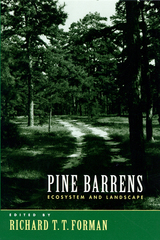 Pine Barrens: Ecosystem and Landscape
Forman, Richard T.T.
Rutgers University Press, 1998 Pine Barrens: Ecosystem and Landscape focuses on the relationship between the ecological and landscape aspects of Pine Barrens of New Jersey. The idea in this book is based from the discussions of Rutgers University botanists and ecologists at the 1975 American Institute of Biological Science meetings, and from the interest generated by the 1976 annual New Jersey Academy of Science meeting, which focuses on the Pine Barrens.
This seven-part book starts with a short discussion on location and boundaries of the New Jersey Pine Barrens. Part I covers human activities, from Indian activities and initial European perceptions of the land, including settlement, lumbering, fuel wood and charcoal, iron and glassworks, farming and livestock, and real estate development. The next part of the book describes sandy deposits, geographic distribution of geologic formations, and soil types with their ecologically important characteristics. Topics on hydrology, aquatic ecosystems, and climatic and microclimatic conditions are presented in the third part of this reference. Part IV traces the history of vegetation starting before the Ice Age and analyzes vegetation using different approaches, such as community types, community classification according to a European method, and gradient analysis. Plants of the Pine Barrens are briefly described and listed in Part V. The final part illustrates community relationships of mammals, birds, reptiles, amphibians, fish, arthropods, and soil microcommunities. The book is ideal for ecologists, botanists, geologists, soil scientists, zoologists, hydrologists, limnologists, engineers, and scientists, as well as planners, decision-makers, and managers who may largely determine the future of a region.
 Pineapples of Finest Flavour: Or, A Selection of Sundry Unpublished Letters of the English Roscius, David Garrick
David Garrick
Harvard University Press From the hundreds of unpublished Garrick letters of varying length and importance, Mr. Little has selected for this volume forty-four which would seem to be the most interesting or the most significant in depicting Garrick as the actor-manager and as a human being wielding a deft pen. Many of them were written to Captain Peter Garrick; others to George Colman, Samuel Foote, Dr. Burney, the Duchess of Portland, Mrs. Montagu, George Steevens, and Sir Joshua Reynolds. They range in date from 1733 to 1776. All of them reveal a distinct individuality, the special personality of Garrick combined with the unmistakable flavor of the eighteenth century. Their frank honesty, intellectual sincerity, and boyish zest for the full life reveal both a charming figure of the time and also the essential qualities which make the period so irresistibly interesting.
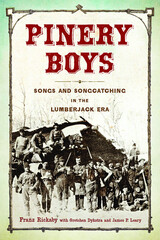 Pinery Boys: Songs and Songcatching in the Lumberjack Era
Edited by Franz Rickaby with Gretchen Dykstra and James P. Leary
University of Wisconsin Press, 2017 As the heyday of the lumber camps faded, a young scholar named Franz Rickaby set out to find songs from shanty boys, river drivers, and sawmill hands in the Upper Midwest. Traveling mostly on foot with a fiddle slung over his shoulder, Rickaby fell into easy conversation with the men, collecting not just the words of songs, but the tunes, making careful notes about his informants and their performances. Shortly before his groundbreaking and much-praised Ballads and Songs of the Shanty Boy was published in 1926, Rickaby died, leaving later folklorists, cultural historians, and folksong enthusiasts with little knowledge of his life and other unpublished research.
Pinery Boys now incorporates, commemorates, contextualizes, and complements Rickaby's early work. It includes an introduction and annotations throughout by eminent folklore scholar James P. Leary and an engaging, impressively researched biography by Rickaby's granddaughter Gretchen Dykstra. Central to this edition are Rickaby's own introduction and the original fifty-one songs that he published—including "Jack Haggerty's Flat River Girl," "The Little Brown Bulls," "Ole from Norway," "The Red Iron Ore," and "Morrissey and the Russian Sailor"—plus fourteen additional songs selected to represent the varied collecting Rickaby did beyond the lumber camps.
Supplemented by historical photographs, Pinery Boys fully reveals Franz Rickaby as a visionary artist and scholar and provides glimpses into the past lives of woods poets and singers.
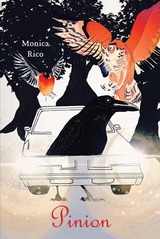 Pinion
Monica Rico
Four Way Books, 2024 “I / step into the kitchen because I can / no longer smell the lilac / bush my father cut down,” Monica Rico writes in the opening poem of her astonishing debut collection. Deeply invested in unearthing women’s identity from a patriarchal family structure, these pages catalog life beside loss, the truth of cruelty accompanied by a defiant vitality. Here, where the declaration “I can” is modified to “I can / no longer,” Rico untangles the paradox of love, how a persistent absence keeps the missing object present, asserting itself through grief and memory; the scent of lilac lingers precisely because we cannot smell it anymore. The dual meaning of "pinion" scaffolds this collection, which considers Rico's family and their experiences in the context of her grandparents' immigration to the USA from México, American racial capitalism, and the mass migration catalyzed and necessitated by Western colonialism. “Pinion” in noun form refers to a bird's outer flight feathers; in verb form, it means to bind or sever this part of the wing to hinder flight. Bound up in this word, then, is a thing and its destruction — a possibility and a thwarted hope side by side. Rico creates her own motifs to write a representative genealogy, approaching her family as an ornithologist: across poems, her grandfather (who worked at General Motors) appears as an owl, her grandmother figures as a robin, and the American project shows up in the eagle's warped beak and surveilling eye. A field work of restoration, these poems compose a personal history and a deconstruction of global capitalism as articulated through an encyclopedia of birds. From the chaos of our flawed world, Rico salvages an enduring hope, reminding us that “a broken / song like an ugly duckling isn’t ugly / but unique, and stands out like the flightless / dodo who trusts because it is too awful not to.”
Pink and Blue: Gender, Culture, and the Health of Children
Elena Conis
Rutgers University Press, 2021 In modern pediatric practice, gender matters. From the pink-and-blue striped receiving blankets used to swaddle newborns, to the development of sex-specific nutrition plans based on societal expectations of the stature of children, a gendered culture permeates pediatrics and children’s health throughout the twentieth and early twenty-first centuries. This book provides a look at how gender has served as one of the frameworks for pediatric care in the U.S. since the specialty’s inception. Pink and Blue deploys gender—often in concert with class and race—as the central critical lens for understanding the function of pediatrics as a cultural and social project in modern U.S. history.
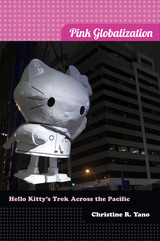 Pink Globalization: Hello Kitty's Trek across the Pacific
Christine R. Yano
Duke University Press, 2013 In Pink Globalization, Christine R. Yano examines the creation and rise of Hello Kitty as a part of Japanese Cute-Cool culture. Yano argues that the international popularity of Hello Kitty is one aspect of what she calls pink globalization—the spread of goods and images labeled cute (kawaii) from Japan to other parts of the industrial world. The concept of pink globalization connects the expansion of Japanese companies to overseas markets, the enhanced distribution of Japanese products, and the rise of Japan's national cool as suggested by the spread of manga and anime. Yano analyzes the changing complex of relations and identities surrounding the global reach of Hello Kitty's cute culture, discussing the responses of both ardent fans and virulent detractors. Through interviews, Yano shows how consumers use this iconic cat to negotiate gender, nostalgia, and national identity. She demonstrates that pink globalization allows the foreign to become familiar as it brings together the intimacy of cute and the distance of cool. Hello Kitty and her entourage of marketers and consumers wink, giddily suggesting innocence, sexuality, irony, sophistication, and even sheer happiness. Yano reveals the edgy power in this wink and the ways it can overturn, or at least challenge, power structures.
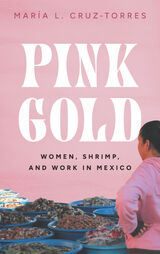 Pink Gold: Women, Shrimp, and Work in Mexico
Maria L. Cruz-Torres
University of Texas Press, 2023
A rich, long-term ethnography of women seafood traders in Mexico.
The "shrimp ladies," locally known as changueras in southern Sinaloa, Mexico, sell seafood in open-air markets, forming an extralegal but key part of the economy built around this "pink gold.” Over time, they struggled to evolve from marginalized peddlers to local icons depicted in popular culture, even as they continue to work at an open-air street market.
Pink Gold documents the shrimp traders' resilience and resourcefulness, from their early conflicts with the city, state, and federal authorities and forming a union, to carving out a physical space for a seafood market, and even engaging in conflicts with the Mexican military. Drawing from her two decades of fieldwork, María L. Cruz-Torres explores the inspiring narrative of this overlooked group of women involving grassroots politics, trans-border and familial networking, debt and informal economic practices, personal sacrifices, and simple courage. She argues that, amid intense economic competition, their success relies on group solidarity that creates interlocking networks of mutual trust, or confianza, that in turn enable them to cross social and political boundaries that would typically be closed to them. Ultimately, Pink Gold offers fresh insights into issues of gender and labor, urban public space, the street economy, commodities, and globalization.
The Pink Guitar: Writing as Feminist Practice
Rachel Blau DuPlessis
University of Alabama Press, 2006 The Pink Guitar is a landmark study of women's writing and poetics—and representations of women artists—in the 20th Century.
The Pink Guitar is an influential feminist study of poetry and writing. It probes the work of H.D., William Carlos Williams, and Marcel Duchamp, among others, and includes DuPlessis’ pioneering essay “For the Etruscans,” described in American Literature as “one of the finest pieces of criticism in the feminist literary tradition.” The book challenges the the idea that stories need to follow set patterns, which often reflect a male-centered view of the world, and encourages the use of fragmented or non-linear forms to reflect the complexity of women's lives. By rejecting the premise that stories need rigid structure, women are free to reclaim writing as a way to express their true experiences.
Pink Lady: Poems
Denise Duhamel
University of Pittsburgh Press, 2025 A new collection from the award winning poet Denise Duhamel
 Pink Noises: Women on Electronic Music and Sound
Tara Rodgers
Duke University Press, 2010 Pink Noises brings together twenty-four interviews with women in electronic music and sound cultures, including club and radio DJs, remixers, composers, improvisers, instrument builders, and installation and performance artists. The collection is an extension of Pinknoises.com, the critically-acclaimed website founded by musician and scholar Tara Rodgers in 2000 to promote women in electronic music and make information about music production more accessible to women and girls. That site featured interviews that Rodgers conducted with women artists, exploring their personal histories, their creative methods, and the roles of gender in their work. This book offers new and lengthier interviews, a critical introduction, and resources for further research and technological engagement. Contemporary electronic music practices are illuminated through the stories of women artists of different generations and cultural backgrounds. They include the creators of ambient soundscapes, “performance novels,” sound sculptures, and custom software, as well as the developer of the Deep Listening philosophy and the founders of the Liquid Sound Lounge radio show and the monthly Basement Bhangra parties in New York. These and many other artists open up about topics such as their conflicted relationships to formal music training and mainstream media representations of women in electronic music. They discuss using sound to work creatively with structures of time and space, and voice and language; challenge distinctions of nature and culture; question norms of technological practice; and balance their needs for productive solitude with collaboration and community. Whether designing and building modular synthesizers with analog circuits or performing with a wearable apparatus that translates muscle movements into electronic sound, these artists expand notions of who and what counts in matters of invention, production, and noisemaking. Pink Noises is a powerful testimony to the presence and vitality of women in electronic music cultures, and to the relevance of sound to feminist concerns. Interviewees: Maria Chavez, Beth Coleman (M. Singe), Antye Greie (AGF), Jeannie Hopper, Bevin Kelley (Blevin Blectum), Christina Kubisch, Le Tigre, Annea Lockwood, Giulia Loli (DJ Mutamassik), Rekha Malhotra (DJ Rekha), Riz Maslen (Neotropic), Kaffe Matthews, Susan Morabito, Ikue Mori, Pauline Oliveros, Pamela Z, Chantal Passamonte (Mira Calix), Maggi Payne, Eliane Radigue, Jessica Rylan, Carla Scaletti, Laetitia Sonami, Bev Stanton (Arthur Loves Plastic), Keiko Uenishi (o.blaat)
 Pink Pirates: Contemporary American Women Writers and Copyright
Caren Irr
University of Iowa Press, 2010 Today, copyright is everywhere, surrounded by a thicket of no trespassing signs that mark creative work as private property. Caren Irr’s Pink Pirates asks how contemporary novelists—represented by Ursula Le Guin, Andrea Barrett, Kathy Acker, and Leslie Marmon Silko—have read those signs, arguing that for feminist writers in particular copyright often conjures up the persistent exclusion of women from ownership. Bringing together voices from law schools, courtrooms, and the writer's desk, Irr shows how some of the most inventive contemporary feminist novelists have reacted to this history. Explaining the complex, three-century lineage of Anglo-American copyright law in clear, accessible terms and wrestling with some of copyright law's most deeply rooted assumptions, Irr sets the stage for a feminist reappraisal of the figure of the literary pirate in the late twentieth century—a figure outside the restrictive bounds of U.S. copyright statutes. Going beyond her readings of contemporary women authors, Irr’s exhaustive history of how women have fared under intellectual property regimes speaks to broader political, social, and economic implications and engages digital-era excitement about the commons with the most utopian and materialist strains in feminist criticism.
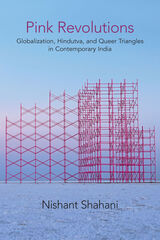 Pink Revolutions: Globalization, Hindutva, and Queer Triangles in Contemporary India
Nishant Shahani
Northwestern University Press, 2021 Pink Revolutions describes how queer politics in India occupies an uneasy position between the forces of neoliberal globalization, on the one hand, and the nationalist Hindu fundamentalism that has emerged since the 1990s, on the other. While neoliberal forces use queerness to highlight India’s democratic credentials and stature within a globalized world, nationalist voices claim that queer movements in the country pose a threat to Indian national identity. Nishant Shahani argues that this tension implicates queer politics within messy entanglements and knotted ideological triangulations, geometries of power in which local understandings of “authentic” nationalism brush up against global agendas of multinational capital.
Eschewing structures of absolute complicity or abject alterity, Pink Revolutions pays attention to the logics of triangulation in various contexts: gay tourism, university campus politics, diasporic cultural productions, and AIDS activism. The book articulates a framework through which queer politics can challenge rather than participate in neoliberal imperatives, an approach that will interest scholars engaged with queer studies and postcolonial scholarship, as well as activists and academics wrestling with global capitalism and right-wing regimes around the world.
Pink Waves
Sawako Nakayasu
Omnidawn, 2021 A poem in conversation with literature and written during a durational performance.
Written in loose sonata form, Pink Waves is a poem of radiant elegy and quiet protest. Moving through the shifting surfaces of inarticulable loss, and along the edges of darkness and sadness, Pink Waves was completed in the presence of audience members over the course of a three-day durational performance. Sawako Nakayasu accrues lines written in conversation with Waveform by Amber DiPietro and Denise Leto, and micro-translations of syntax in the Black Dada Reader by Adam Pendleton, itself drawn from Ron Silliman’s Ketjak. Pink Waves holds an amalgamation of texts, constructing a shimmering haunting of tenderness, hunger, and detritus.
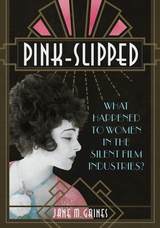 Pink-Slipped: What Happened to Women in the Silent Film Industries?
Jane M Gaines
University of Illinois Press, 2018 Women held more positions of power in the silent film era than at any other time in American motion picture history. Marion Leonard broke from acting to cofound a feature film company. Gene Gauntier, the face of Kalem Films, also wrote the first script of Ben-Hur. Helen Holmes choreographed her own breathtaking on-camera stunt work. Yet they and the other pioneering filmmaking women vanished from memory. Using individual careers as a point of departure, Jane M. Gaines charts how women first fell out of the limelight and then out of the film history itself. A more perplexing event cemented their obscurity: the failure of 1970s feminist historiography to rediscover them. Gaines examines how it happened against a backdrop of feminist theory and her own meditation on the limits that historiography imposes on scholars. Pondering how silent era women have become absent in the abstract while present in reality, Gaines sees a need for a theory of these artists' pasts that relates their aspirations to those of contemporary women. A bold journey through history and memory, Pink-Slipped pursues the still-elusive fate of the influential women in the early years of film.
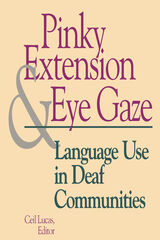 Pinky Extension and Eye Gaze: Language Use in Deaf Communities
Ceil Lucas
Gallaudet University Press, 1998 The Sociolinguistics in Deaf Communities Series continues its detailed exploration of language dynamics among deaf people in the fourth entry, Pinky Extension and Eye Gaze: Language Use in Deaf Communities. This volume’s ten meticulously prepared chapters reflect the refinements of research in six major sociolinguistics areas. Rob Hoopes’ work, “A Preliminary Examination of Pinky Extension: Suggestions Regarding Its Occurrence, Constraints, and Function,” commences Part One: Variation with a sound explanation of this American Sign Language (ASL) phonological characteristic. Part Two: Languages in Contact includes findings by Jean Ann on contact between Taiwanese Sign Language and written Taiwanese. Priscilla Shannon Gutierrez considers the relationship of educational policy with language and cognition in deaf children in Part Three: Language in Education, and in Part Four: Discourse Analysis, Melanie Metzger discusses eye gaze and pronominal reference in ASL. Part Five: Second-Language Learning presents the single chapter “An Acculturation Model for ASL Learners,” by Mike Kemp. Sarah E. Burns defines Irish Sign Language as Ireland’s second minority language after Gaelic, in Part Six: Language Attitudes, the final area of concentration in this rigorously researched volume. These studies and the others by the respected scholars featured in Pinky Extension and Eye Gaze make it an outstanding and eminently valuable addition to this series.
PINNICK KINNICK HILL: AN AMERICAN STORY
By G. W. González, Edited by Mark Brazaitis, with a Preface by Suronda González, with a Spanish translation Las colinas sueñan en español by Daniel Ferreras
West Virginia University Press, 2006 Nearly a century ago, hundreds of families journeyed from Spain to the United States, to search for a better life in the growing zinc-industry towns of Harrison County, West Virginia. As they created a new culture and a new home in this strange land, they added another thread to the rich fabric of our nation. Writing from his perspective as a first-generation son of this immigrant community, González recounts his childhood memories of his neighborhood, where these immigrants raised their families, worked in the often insufferable conditions of the zinc factories, and celebrated "romerias" and feast days with their neighbors.
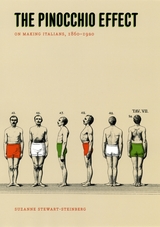 The Pinocchio Effect: On Making Italians, 1860-1920
Suzanne Stewart-Steinberg
University of Chicago Press, 2007 Soon after the disparate states of the Italian peninsula unified in the 1860s to create a single nation, the nationalist Massimo D’Azeglio is said to have remarked, “We have made Italy, now we have to make Italians.” The Pinocchio Effect draws on a remarkably broad array of sources to trace this making of a modern national identity in Italy, a subject that remains strikingly understudied in the English-speaking world of Italian studies.
Taking as her guiding metaphor the character of Pinocchio—a national icon made famous in 1881 by the eponymous children’s book—Susan Stewart-Steinberg argues that just like the renowned puppet, modern Italians were caught in a complex interplay between freely chosen submission and submission demanded by an outside force. In doing so, she explores all the ways that identity was constructed through newly formed attachments, voluntary and otherwise, to the young nation. Featuring deft readings of the period’s most important Italian cultural and social thinkers—including the theorist of mass psychology Scipio Sighele, the authors Matilde Serao and Edmondo De Amicis, the criminologist Cesare Lombroso, and the pedagogue Maria Montessori—Stewart-Steinberg’s richly multidisciplinary book will set a new standard in Italian studies.
Pinocchio: The Adventures of a Puppet, Doubly Commented Upon and Triply Illustrated
Giorgio Agamben
Seagull Books, 2023 A richly illustrated analysis from one of Europe’s greatest living philosophers.
In Pinocchio, Giorgio Agamben turns his keen philosopher’s eye to the famous nineteenth-century novel by Carlo Collodi. To Agamben, Pinocchio’s adventures are a kind of initiation into life itself. Like us, the mischievous puppet is caught between two worlds. He is faced with the alternatives of submitting to authority or of carrying on, stubbornly indulging his way of being. From Agamben’s virtuoso interpretation of this classic story, we learn that we can harbor the mystery of existence only if we are not aware of it, only if we manage to cohabit with an area of non-knowledge, immemorial and very near. Richly illustrated with images from three early editions of Collodi’s novel, this new volume will delight enthusiasts of both literature and philosophy.
The Pinochet Case
Madeleine Davis
University of London Press, 2000 The arrest in 1998 and subsequent detention in London of General Augusto Pinochet on the orders of Spanish Judge Baltasar Garzon occasioned worldwide debate and raised numerous issues of critical significance for politics, human rights and international law. This paper traces the progress of the case against Pinochet since its inception in Spain, through his 17-month detention in London, and up to its continuation in Chile. The work provides a survey of events and developments so far, and offers an initial review of some of the issues raised. It includes a detailed chronology of events from the time of Pinochet's arrest up to October 2000.
 The Pinochet Case: Origins, Progress and Implications
Edited by Madeleine Davis
University of London Press, 2003 The 1998 arrest of Senator Augusto Pinochet in London, on the orders of a Spanish judge seeking his extradition for human rights crimes, made headlines all over the world. Part of a wider, ongoing attempt by human rights activists and lawyers to prosecute the crimes of Latin American military regimes, the case has important implications for national and international law and for politics, diplomacy, and democracy. This book brings together political scientists and lawyers from Latin America, the United States, Spain, and the UK to analyze the political and historical context of the case, its progress through the courts in the UK and Chile, its handling by national governments, and its political and legal implications, both national and international. Contributors include Alan Angell (St Antony's College, Oxford, UK), Alexandra Barahona de Brito (Instituto de Estudos Estrategicos e Internacionais and Universidade Moderna, Lisbon, Portugal), Francisco Bravo Lopez (Chilean Interior Ministry), Juan E.
Garces (1999 recipient of the Right Livelihood Award for his work in preparing the Pinochet case), Carlos Huneeus (CERC, Chile and Pontificia Universidad Catolica de Chile), Brian Loveman (San Diego State University, USA), Carlos Malamud (Real Instituto Elcano de Estudios Internacionales y Estrategicos, Madrid, Spain), Antonio Remiro Brotons (Universidad Autonoma de Madrid, Spain), Naomi Roht-Arriaza (University of California, Hastings College of Law, USA), and Diana Woodhouse (Oxford Brookes University, UK).
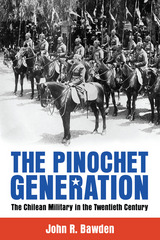 The Pinochet Generation: The Chilean Military in the Twentieth Century
John R. Bawden
University of Alabama Press, 2016 Weaves together the dramatic history of Chile’s complex and fraught relationship to its armed services by thorough analysis of the experiences of General Augusto Pinochet’s generation of soldiers and the beliefs and traditions that motivated their actions
Chilean soldiers in the twentieth century appear in most historical accounts, if they appear at all, as decontextualized figures or simply as a single man: Augusto Pinochet. In his incisive study The Pinochet Generation: The Chilean Military in the Twentieth Century, John R. Bawden provides compelling new insights into the era and posits that Pinochet and his men were responsible for two major transformations in Chile’s constitution as well as the political and economic effects that followed.
Determined to refocus what he sees as a “decontextualized paucity” of historical information on Chile’s armed forces, Bawden offers a new perspective to explain why the military overthrew the government in 1973 as well as why and how Chile slowly transitioned back to a democracy at the end of the 1980s. Standing apart from other views, Bawden insists that the Chilean military’s indigenous traditions and customs did more than foreign influences to mold their beliefs and behavior leading up to the 1973 coup of Salvador Allende.
Drawing from defense publications, testimonial literature, and archival materials in both the United States and Chile, The Pinochet Generation characterizes the lens through which Chilean officers saw the world, their own actions, and their place in national history. This thorough analysis of the Chilean services’ history, education, values, and worldview shows how this military culture shaped Chilean thinking and behavior, shedding light on the distinctive qualities of Chile’s armed forces, the military’s decision to depose Allende, and the Pinochet dictatorship’s resilience, repressiveness, and durability.
Bawden’s account of Chile’s vast and complex military history of the twentieth century will appeal to political scientists, historians, faculty and graduate students interested in Latin America and its armed forces, students of US–Latin American diplomacy, and those interested in issues of human rights.
The Pinon Pine: A Natural And Cultural History
Ronald M. Lanner
University of Nevada Press, 1981 An engaging look at the history of the piñon pine and its ecosystem. Combining natural history and observations of the cultural importance of the tree to both native Indians and European settlers, Lanner provides information on the management of the tree and its interdependence with the birds and animals of the piñon-juniper woodland. Science, cultural history, and ecologicall issues, plus delicious recipes using the piñon pine nuts, make for a concise natural and cultural history of the piñon pine.
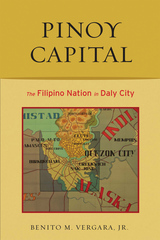 Pinoy Capital: The Filipino Nation in Daly City
Benito M. Vergara, Jr.
Temple University Press, 2009 Home to 33,000 Filipino American residents, Daly City, California, located just outside of San Francisco, has been dubbed “the Pinoy Capital of the United States.” In this fascinating ethnographic study of the lives of Daly City residents, Benito Vergara shows how Daly City has become a magnet for the growing Filipino American community. Vergara challenges rooted notions of colonialism here, addressing the immigrants’ identities, connections and loyalties. Using the lens of transnationalism, he looks at the “double lives” of both recent and established Filipino Americans. Vergara explores how first-generation Pinoys experience homesickness precisely because Daly City is filled with reminders of their homeland’s culture, like newspapers, shops and festivals. Vergara probes into the complicated, ambivalent feelings these immigrants have—toward the Philippines and the United States—and the conflicting obligations they have presented by belonging to a thriving community and yet possessing nostalgia for the homeland and people they left behind.
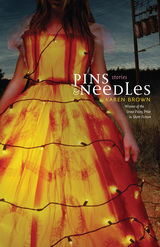 Pins and Needles: Stories
Karen Brown
University of Massachusetts Press, 2007 In Pins and Needles, Karen Brown explores love and loss between mother and child, husband and wife, close friends, and virtual strangers. In many of these stories, Brown shows how love emerges as infidelity—incongruous and disruptive, threatening the stability of daily life.
In "She Fell to Her Knees," Nell inherits the neglected house in which her mother died years before, and begins an affair with the neighbor. The narrator of "Apparitions," who has recently returned the blind grandson she was raising to the care of his mother, invites a confused young man into her home. In "The Ropewalk," a bartender haunted by her abandonment of her own child aids a customer in a struggle for custody of her daughters. A pregnant teenager in "Unction" comes to accept the reality of her situation while working a summer job counting parts in a bookbinding machine shop. Annie, the young mother with a tragic past in "Pins and Needles," leaves her infant daughter to go on an errand in a snowstorm, and picks up a boy she doesn't know.
What remains a constant in these stories is the tangible presence of the natural world. Each story moves toward the moment in which its characters, navigating loss, learn acceptance. Like the single mother in "Destiny," they see their lives happen—"all around, just then, forever.
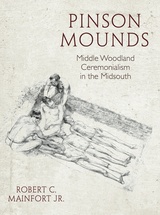 Pinson Mounds: Middle Woodland Ceremonialism in the Midsouth
Robert C. Mainfort Jr.
University of Arkansas Press, 2013 Pinson Mounds: Middle Woodland Ceremonialism in the Midsouth is a comprehensive overview and reinterpretation of the largest Middle Woodland mound complex in the Southeast. Located in west Tennessee about ten miles south of Jackson, the Pinson Mounds complex includes at least thirteen mounds, a geometric earthen embankment, and contemporary short-term occupation areas within an area of about four hundred acres. A unique feature of Pinson Mounds is the presence of five large, rectangular platform mounds from eight to seventy-two feet in height. Around A.D. 100, Pinson Mounds was a pilgrimage center that drew visitors from well beyond the local population and accommodated many distinct cultural groups and people of varied social stations. Stylistically nonlocal ceramics have been found in virtually every excavated locality, all together representing a large portion of the Southeast. Along with an overview of this important and unique mound complex, Pinson Mounds also provides a reassessment of roughly contemporary centers in the greater Midsouth and Lower Mississippi Valley and challenges past interpretations of the Hopewell phenomenon in the region.
 Pinstripe Nation: The New York Yankees in American Culture
William Carlson Bishop
University of Tennessee Press, 2018 Whether loved or reviled, the New York Yankees have had an impact on American culture that extends well beyond baseball. Since the early twentieth century, movies, novels, memoirs, pop songs, and even TV sitcoms have either dealt directly with the Bronx club and its star players or incorporated key elements of Yankee iconography. In Pinstripe Nation, Will Bishop explores the myriad ways in which the Yankees and their successes (and spectacular failures) became interwoven with the nation’s larger cultural narrative.
In 1920, with their acquisition of Babe Ruth, the Yankees rose to prominence. With his power-hitting style attracting legions of new fans, the “Great Bambino” became a national hero of the Roaring Twenties. In contrast to Ruth’s flamboyance, his less flashy successors Lou Gehrig and Joe DiMaggio captured the spirit of striving and courage that carried America through the Depression and WWII years. The Pride of the Yankees, a popular movie celebrating Gehrig’s career, and the Hemingway novella The Old Man and the Sea, whose protagonist reveres DiMaggio, typified the trend.
Mirroring the nation’s postwar swagger and confidence, the club of the Mickey Mantle–era remained hugely popular, but “Yankee hating” set in as well. Novels like Mark Harris’s The Southpaw and Douglass Wallop’s The Year the Yankees Lost the Pennant signified a widespread resentment of the team’s outsized dominance. Amid the national turmoil of the 1960s, the Yankees also went into decline. In the following decades, as player salaries soared and team infighting grabbed headlines, the once-glowing portrayals of the team gave way to tell-all books like Ball Four and The Bronx Zoo. Yet, as this informative and entertaining book amply shows, the Yankees have, through all their ups and downs, retained a hold on the American imagination unmatched by any other sports franchise.
 Pinter In Play: Critical Strategies and the Plays of Harold Pinter
Susan Hollis Merritt
Duke University Press, 1990 Pinter in Play provides a survey of diverse readings of the Harold Pinter canon organized around and presented in terms of the major critical schools of the past twenty-five years, from New Criticism to deconstruction to poststructuralism. Reflecting on the cultural, personal, sociological, and philosophical contexts of these diverse critical perspectives and the critics who express them, this book is equally about the act or the art of literary criticism and itself an important work of literary criticism. Drawing on interviews with Pinter scholars, Susan Hollis Merritt shows how critics "play" with Pinter and thereby seriously enforce personal, professional, and political affiliations. Cutting across traditional academic and nonacademic boundaries, Merritt argues that greater cooperation and collaboration among critics can resolve conflicts, promote greater social equity, and foster ameliorative critical and cultural change.
 Pin-Up Grrrls: Feminism, Sexuality, Popular Culture
Maria Elena Buszek
Duke University Press, 2006 Subverting stereotypical images of women, a new generation of feminist artists is remaking the pin-up, much as Annie Sprinkle, Cindy Sherman, and others did in the 1970s and 1980s. As shocking as contemporary feminist pin-ups are intended to be, perhaps more surprising is that the pin-up has been appropriated by women for their own empowerment since its inception more than a century ago. Pin-Up Grrrls tells the history of the pin-up from its birth, revealing how its development is intimately connected to the history of feminism. Maria Elena Buszek documents the genre’s 150-year history with more than 100 illustrations, many never before published. Beginning with the pin-up’s origins in mid-nineteenth-century carte-de-visite photographs of burlesque performers, Buszek explores how female sex symbols, including Adah Isaacs Menken and Lydia Thompson, fought to exert control over their own images. Buszek analyzes the evolution of the pin-up through the advent of the New Woman, the suffrage movement, fanzine photographs of early film stars, the Varga Girl illustrations that appeared in Esquire during World War II, the early years of Playboy magazine, and the recent revival of the genre in appropriations by third-wave feminist artists. A fascinating combination of art history and cultural history, Pin-Up Grrrls is the story of how women have publicly defined and represented their sexuality since the 1860s.
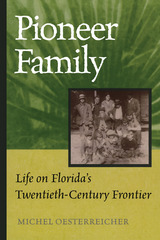 Pioneer Family: Life on Florida's Twentieth-Century Frontier
Michel Oesterreicher
University of Alabama Press, 1996 "The University of Alabama Press has produced yet another excellent book on Florida. Gracefully written, it offers one of the most compelling images of rural life in early 20th-century Florida that exists in print. It should enjoy wide readership." —The Florida Historical Quarterly Pioneer Family is based on the recollections of Hugie and Oleta Oesterreicher, who lived in rural northeast Florida in the early decades of the twentieth century. Northeast Florida was still frontier country then, and Hugie and Oleta were pioneers. Although the time and setting of their story are particular, the theme of survival during hard times is universal. Born in a cypress cabin on the edge of the great Durbin Swamp located midway between St. Augustine and Jacksonville, Hugie knew every alligator hole, every bog, every creek; he could dry venison so it lasted without refrigeration for months, could build a potato bank that kept potatoes warm all winter, and put down a well without machinery. He knew how to cope with rattlesnakes and moccasins. Early one morning in 1925, Hugie fell in love with a tall, brown-eyed girl as he passed her place on a cattle drive. He courted this girl, Oleta Brown, with no success at first, but finally they were married in 1927. Their daughter retells their story from vivid accounts they gave of their childhood, courtship, early years of marriage, and struggles during the Great Depression. In an age bereft of heroes, the story of their courage, their faith, and their commitment provides a fascinating empathy with a time that has passed; a place that has disappeared.
 Pioneer in Modern Medicine: David Linn Edsall of Harvard
Joseph C. Aub, M. D. and Ruth K. Hapgood
Harvard University Press Dean of the Harvard Medical School and School of Public Health in the 1920's and '30's,David Edsall was one of the leaders in a period of great change and progress in medicine. At the beginning of Edsall's career, a doctor's chief weapons were his informed mind and trained senses. By the end of it, the permanent alliance of the sciences and medicine had profoundly altered the doctor's practice and his education. It was a time of struggle, of conflict, and of enduring accomplishment.
Edsall was at the center of this revolutionary effort in three leading schools of medicine: the University of Pennsylvania, Washington University in St. Louis, and Harvard. He began his career in Pennsylvania as recording clerk to the famous Dr. William Pepper, Jr., at the same time making scientific contributions in metabolism through his work in the Pepper Laboratory of Clinical Medicine. By 1907 he had become Professor of Therapeutics and Pharmacology. In 1910 and '11, for one stormy year, he was the school's Professor of Medicine. This was a key year -in 1910 the publication of Abraham Flexner's Medical Education in the United States and Canada had led to the eradication of one quarter of U. S. medical schools and radical reform of many others.
From Pennsylvania Edsall went to St. Louis as Professor of Preventive Medicine, and his part in the reform of that medical school is both controversial and fascinating.
,Edsall's appointment in 1912 to a double post at Harvard and the Massachusetts General Hospital brought him to Boston -the field of his major contributions. This remarkable period was the day of such people as Harvard's Walter Cannon, Otto Folin, Harvey Cushing, Alice Hamilton, L. J. Henderson. It saw the founding of the School of Public Health, the major endowment of the Medical School. In his ten years at the hospital and his seventeen years as dean, as in his influence as a trustee of the Rockefeller Foundation, Edsall gave direction to many developments in American medicine which bear his mark to this day.
Pioneer Life In Western Pennsylvania
J.E. Wright, Doris S. Corbett
University of Pittsburgh Press, 1940 A fascinating look at life during pioneer times in western Pennsylvania. Describes the hardship, danger and drudgery of day-to-day life on the frontier. Topics include cabin raising, crop harvests, tanning, weaving, disease, religion, and superstition. Also follows the progression from pioneer life to industrial society.
Pioneer Life in Western Pennsylvania was one of the original books sponsored by the University of Pittsburgh, the Historical Society of Western Pennsylvania, and the Buhl Foundation to mark the founding of the University of Pittsburgh Press. Authors Wright and Corbett describe the country the first settlers discovered, the homes and towns they built, the farm implements and household goods they used, the crops they grew and how their small, isolated communities laid the foundations for the cities and industries we know today
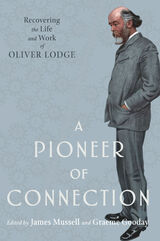 A Pioneer of Connection: Recovering the Life and Work of Oliver Lodge
James Mussell & Graeme Gooday
University of Pittsburgh Press, 2020 Sir Oliver Lodge was a polymathic scientific figure who linked the Victorian Age with the Second World War, a reassuring figure of continuity across his long life and career. A physicist and spiritualist, inventor and educator, author and authority, he was one of the most famous public figures of British science in the late nineteenth and early twentieth centuries. A pioneer in the invention of wireless communication and later of radio broadcasting, he was foundational for twentieth-century media technology and a tireless communicator who wrote upon and debated many of the pressing interests of the day in the sciences and far beyond. Yet since his death, Lodge has been marginalized. By uncovering the many aspects of his life and career, and the changing dynamics of scientific authority in an era of specialization, contributors to this volume reveal how figures like Lodge fell out of view as technical experts came to dominate the public understanding of science in the second half of the twentieth century. They account for why he was so greatly cherished by many of his contemporaries, examine the reasons for his eclipse, and consider what Lodge, a century on, might teach us about taking a more integrated approach to key scientific controversies of the day.
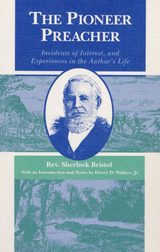 The Pioneer Preacher: Incidents of Interest, and Experiences in the Author's Life
Rev. Sherlock Bristol. Introduction and notes by Dewey D. Wallace Jr. Illustrated by Isabelle Blood.
University of Illinois Press, 1989 Originally published in 1887, The Pioneer Preacher is a lively account of a Congregationalist minister's attempts to lead a sin-free existence on the American frontier. Sherlock Bristol (1815-1906) was a California gold miner, wagon train captain, Wisconsin farmer, Idaho rancher, Indian fighter, abolitionist, and Oberlin-trained clergyman. While serving a series of churches in the East, he periodically cured himself of "nervous disorders" by journeying out West. He only broke the Sabbath once---during an Indian attack!
Reflecting in his memoirs the exploits of Daniel Boone and Davy Crockett, Bristol delights in recounting his adventures, ecclesiastical or otherwise. He vividly recalls his redemption in the wilderness where he enjoyed having "little opportunity for reading books or mental exercise, and an abundance of calls for muscular employment." Greatly influenced by the evangelist Charles G. Finney at Oberlin, Bristol tried to teach miners and frontiersmen the principles of revivalism, postmillennialism, and perfectionism. In The Pioneer Preacher he shares his own disputatious views on abolition, American Indians, temperance, and other issues of his day.
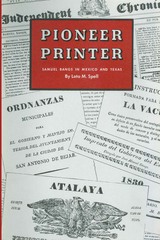 Pioneer Printer: Samuel Bangs in Mexico and Texas
By Lota M. Spell
University of Texas Press, 1963 Samuel Bangs, the first printer in the territory that is now Texas, once owed his life to his printing press. One of the few survivors of the Mina Expedition to Mexico in 1817, Bangs wrote to Servando de Mier, “I had the good fortune, through the will of God, to have my life saved, as I was a printer.” Bangs was not always so fortunate. Losses and disappointments plagued him throughout his career, and he spent many miserable months in Mexican jails. But his ingenuity in the face of adversity, his courage and charm, stamped him not only as a storybook hero but as a man whose virtues were large enough to be their own reward. Lota Spell’s fine biography of Samuel Bangs is at the same time a fascinating history of northern Mexico (including Texas) in the first half of the nineteenth century. Through the successes and failures of an individual it presents the facts about the operation of a business during a time of important political and economic change. Even more important is its contribution to our knowledge of printing and of the contemporary periodical press. Although first of all a printer, Samuel Bangs was also involved in the production of newspapers, making this book a detailed history of journalism in the Mexico and Texas of his day. His printing office also functioned as a typographer’s school, through which he instituted the apprentice system in the Southwest; and as a result of his interest in presses as a commodity of trade, the first business for merchandising and servicing printing presses in the area was developed. This narrative, combining the story of a man’s life, the history of his times, and the development of his profession, fills a gap in our knowledge of Mexico and Texas, and does it with perception and charm.
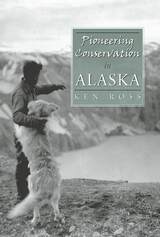 Pioneering Conservation in Alaska
Ken Ross
University Press of Colorado, 2006 A companion volume to Environmental Conflict in Alaska, Pioneering Conservation in Alaska chronicles the central land and wildlife issues and the growth of environmental conservation in Alaska during its Russian and territorial eras. The Alaskan frontier tempted fur traders, whalers, salmon fishers, gold miners, hunters, and oilmen to take what they could without regard for long-term consequences. Wildlife species, ecosystems, and Native cultures suffered, sometimes irreparably. Damage to wildlife and lands drew the attention of environmentalists, including John Muir, who applied their influence to enact wildlife protection laws and set aside lands for conservation. Alaska served as a testing ground for emergent national resource policy in the United States, as environmental values of species and ecosystem sustainability replaced the unrestrained exploitation of Alaska's early frontier days. Efforts of conservation leaders and the territory's isolation, small human population, and late development prevented widespread destruction and gave Americans a unique opportunity to protect some of the world's most pristine wilderness. Enhanced by more than 100 photographs, Pioneering Conservation in Alaska illustrates the historical precedents for current natural resource disputes in Alaska and will fascinate readers interested in wildlife and conservation.
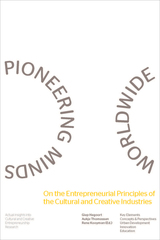 Pioneering Minds Worldwide: On the Entrepreneurial Principles of the Cultural and Creative Industries
Edited by Giep Hagoort, Aukje Thomassen, and Rene Kooyman
Eburon Academic Publishers, 2012
Even after the recent economic crisis, cultural and creative industries are still able to easily draw audience members and consumers, as well as new talent to enrich these fields. Exploring the topic from economic, artistic, and policymaking perspectives, Pioneering Minds Worldwide is an interdisciplinary approach to these trades on a global scale, while making an important distinction between the cultural sector—products that are consumed on the spot, such as concerts or dance performances—and the creative sector, which generates artistic products that we have a protracted interaction with, i.e. design, architecture, and advertising. The authors of these highly informative essays offer new concepts and viewpoints on the entrepreneurial dimension of the cultural and creative industries in sixteen countries and explore how urban area development, new technological innovations, and education all influence these continually expanding industries.
The Pioneers
James Fenimore Cooper
Harvard University Press, 2011 With The Pioneers (1823), Cooper initiated his series of elegiac romances of frontier life and introduced the world to Natty Bumppo (or Leather-stocking). Set in 1793 in New York State, the novel depicts an aging Leather-stocking negotiating his way in a restlessly expanding society. In his introduction, Robert Daly argues for the novel’s increasing relevance: we live in a similarly complex society as Cooper’s frontier world, faced with the same questions about the limits of individualism, the need for voluntary cooperation, and stewardship of the environment.
The John Harvard Library edition reproduces the authoritative text of The Pioneers in the The Writings of James Fenimore Cooper, published by the State University of New York Press.
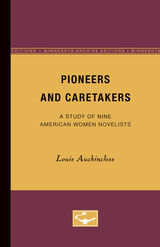 Pioneers and Caretakers: A Study of Nine American Women Novelists
Louis Auchincloss
University of Minnesota Press, 1965
Pioneers and Caretakers was first published in 1965.In a series of stimulating and highly readable essays, Mr. Auchincloss discusses the work of nine American women novelists in whom he finds a unity of common tradition. As the title of the book implies, Mr. Auchincloss regards these novelists as caretakers of our culture and, at the same time, as literary pioneers. The writers he discusses are Sarah Orne Jewett, Edith Wharton, Ellen Glasgow, Willa Cather, Elizabeth Madox Roberts, Katherine Anne Porter, Jean Stafford, Carson McCullers, and Mary McCarthy.In explaining his thesis Mr. Auchincloss writes: “In the migrations of tribes the women were responsible for the packing and preservation of the household goods. They have always been the true conservatives, the caretakers of the culture. But because in our nation we have to go back so few decades to get to the Indians, the functions of the caretaker and of the pioneer have become curiously blended. To preserve a bit of the American tradition, one has to preserve a bit of the frontier.“A notable thing about our women writers is that they have struck a more affirmative note than the men. Their darkness is not as dark as that of Dreiser or Lewis or Faulkner or O’Neill, which is not to say that they see America less clearly, but that they see it more discriminatingly. They have a sharper sense of their stake in the national heritage, and they are always at work to preserve it. They never destroy; they never want the clean sweep. They are conservatives who are always trying to conserve.”
Pioneers for Profit: Foreign Entrepreneurship and Russian Industrialization, 1885-1913
John P. McKay
University of Chicago Press, 1970 Foreign investment increased from 17 percent of the capital of industrial corporations in Imperial Russia in 1880 to 47 percent in 1914, coinciding with the rapid development of Russian industrialization before World War I. John McKay's study, based largely on intensive research in numerous archives and utilizing many previously unexplored private business records, is the first detailed analysis of the impact of foreign enterprise on Russian industry during this period. His conclusions are significant for historians, economists, and those interested in the development of modern industrial society.
Pioneers in Popular Culture Studies
Ray B. Browne
University of Wisconsin Press, 1999 The Popular Culture Association/American Culture Association found a fixed canon and revolutionized the study of the humanities and social sciences in the United States and around the world by making that canon fluid. The full ramifications of this revolt against traditional academia not finished nor fully understood. This is a record of the goals and accomplishments of the pioneers in this field. The essays recall the barriers that the first pop culture scholars faced and tracks their achievements.
Pioneers of Cardiac Surgery
William S. Stoney
Vanderbilt University Press, 2008 Heart operations today are quite common and relatively low-risk, but in the beginning it was just the opposite. Cardiac operations were reserved for desperately ill patients. The author documents this dramatic transition with profiles of 38 surgeons who were active between 1940 and 1985.
The profiles are edited transcripts of interviews videotaped between 1996 and 2004. They tell of the development of new techniques such as the "blue baby operation," the first heart-lung machine, the first artificial heart valve, and the first coronary bypass operation. They also tell the unusual life stories of the surgeons and allude to professional and institutional rivalries. A particularly valuable part of the book is the author's brief history of cardiac surgery, designed to orient the reader for reading the profiles that follow.
Pioneers Of Change In Ethiopia: The Reformist Intellectuals of the Early Twentieth Century
Bahru Zewde
Ohio University Press, 2002 In this exciting new study, Bahru Zewde, one of the foremost historians of modern Ethiopia, has constructed a collective biography of a remarkable group of men and women in a formative period of their country’s history. Ethiopia’s political independence at the end of the nineteenth century put this new African state in a position to determine its own levels of engagement with the West. Ethiopians went to study in universities around the world. They returned with the skills of their education acquired in Europe and America, and at home began to lay the foundations of a new literature and political philosophy. Pioneers of Change in Ethiopia describes the role of these men and women of ideas in the social and political transformation of the young nation and later in the administration of Haile Selassie.
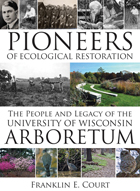 Pioneers of Ecological Restoration: The People and Legacy of the University of Wisconsin Arboretum
Franklin E. Court
University of Wisconsin Press, 2012 Internationally renowned for its pioneering role in the ecological restoration of tallgrass prairies, savannas, forests, and wetlands, the University of Wisconsin Arboretum contains the world’s oldest and most diverse restored ecological communities. A site for land restoration research, public environmental education, and enjoyment by nature lovers, the arboretum remains a vibrant treasure in the heart of Madison’s urban environment.
Pioneers of Ecological Restoration chronicles the history of the arboretum and the people who created, shaped, and sustained it up to the present. Although the arboretum was established by the University of Wisconsin in 1932, author Franklin E. Court begins his history in 1910 with John Nolen, the famous landscape architect who was invited to create plans for the city of Madison, the university campus, and Wisconsin state parks. Drawing extensive details from archives and interviews, Court follows decades of collaborative work related to the arboretum’s lands, including the early efforts of Madison philanthropists and businessmen Michael Olbrich, Paul E. Stark, and Joseph W. “Bud” Jackson.
With labor from the Civilian Conservation Corps during the 1930s Depression, University of Wisconsin scientists began establishing both a traditional horticultural collection of trees and plants and a completely new, visionary approach to recreate native ecosystems. Hundreds of dedicated scientists and staff have carried forward the arboretum’s mission in the decades since, among them G. William Longenecker, Aldo Leopold, John T. Curtis, Rosemary Fleming, Virginia Kline, and William R. Jordan III.
This archival record of the arboretum’s history provides rare insights into how the mission of healing and restoring the land gradually shaped the arboretum’s future and its global reputation; how philosophical conflicts, campus politics, changing priorities, and the encroaching city have affected the arboretum over the decades; and how early aspirations (some still unrealized) have continued to motivate the work of this extraordinary institution.
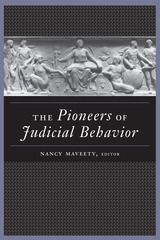 The Pioneers of Judicial Behavior
Nancy Maveety, Editor
University of Michigan Press, 2002 In The Pioneers of Judicial Behavior, prominent political scientists critically examine the contributions to the field of public law of the pioneering scholars of judicial behavior: C. Hermann Pritchett, Glendon Schubert, S. Sidney Ulmer, Harold J. Spaeth, Joseph Tanenhaus, Beverly Blair Cook, Walter F. Murphy, J. Woodward Howard, David J. Danelski, David Rohde, Edward S. Corwin, Alpheus Thomas Mason, Robert G. McCloskey, Robert A. Dahl, and Martin Shapiro.
Unlike past studies that have traced the emergence and growth of the field of judicial studies, The Pioneers of Judicial Behavior accounts for the emergence and exploration of three current theoretical approaches to the study of judicial behavior--attitudinal, strategic, and historical-institutionalist--and shows how the research of these foundational scholars has contributed to contemporary debates about how to conceptualize judges as policy makers. Chapters utilize correspondence of and interviews with some early scholars, and provide a format to connect the concerns and controversies of the first political scientists of law and courts to contemporary challenges and methodological debates among today's judicial scholars. The volume's purpose in looking back is to look forward: to contribute to an ecumenical research agenda on judicial decision making, and, ultimately, to the generation of a unified, general theory of judicial behavior.
The Pioneers of Judicial Behavior will be of interest to graduate students in the law and courts field, political scientists interested in the philosophy of social science and the history of the discipline, legal practitioners and researchers, and political commentators interested in academic theorizing about public policy making.
Nancy L. Maveety is Associate Professor of Political Science, Tulane University.
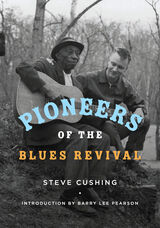 Pioneers of the Blues Revival
Steve Cushing
University of Illinois Press, 2014 Steve Cushing, the award-winning host of the nationally syndicated public radio staple Blues before Sunrise, has spent over thirty years observing and participating in the Chicago blues scene. In Pioneers of the Blues Revival, he interviews many of the prominent white researchers and enthusiasts whose advocacy spearheaded the blues' crossover into the mainstream starting in the 1960s.
Opinionated and territorial, the American, British, and French interviewees provide fascinating first-hand accounts of the era and movement. Experts including Paul Oliver, Gayle Dean Wardlow, Sam Charters, Ray Flerledge, Paul Oliver, Richard K. Spottswood, and Pete Whelan chronicle in their own words their obsessive early efforts at cataloging blues recordings and retrace lifetimes spent loving, finding, collecting, reissuing, and producing records. They and nearly a dozen others recount relationships with blues musicians, including the discoveries of prewar bluesmen Mississippi John Hurt, Son House, Skip James, and Bukka White, and the reintroduction of these musicians and many others to new generations of listeners. The accounts describe fieldwork in the South, renew lively debates, and tell of rehearsals in Muddy Waters's basement and randomly finding Lightning Hopkins's guitar in a pawn shop.
Blues scholar Barry Lee Pearson provides a critical and historical framework for the interviews in an introduction.
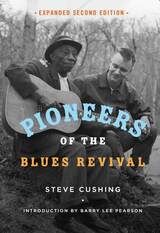 Pioneers of the Blues Revival
Steve Cushing
University of Illinois Press, 2018 Steve Cushing, the award-winning host of the nationally syndicated public radio staple Blues Before Sunrise, has spent more than thirty years observing and participating in the Chicago blues scene. In the expanded second edition of Pioneers of the Blues Revival, Cushing adds new interviewees to the roster of prominent white researchers and enthusiasts whose advocacy spearheaded the blues' crossover into the mainstream starting in the 1960s. Rare interview material with experts like Mack McCormick supplements dialogues with Paul Garon, Gayle Dean Wardlow, Paul Oliver, Sam Charters, and others in renewing lively debates and providing first-hand accounts of the era and movement. Throughout, the participants chronicle lifetimes spent loving, finding, collecting, reissuing, and producing records. They also recount relationships with essential blues musicians like Mississippi John Hurt, Son House, Skip James, and Bukka White—connections that allowed the two races to learn how to talk to each other in a still-segregated world.
Pioneers, Peddlers, and Tsadikim: The Story of Jews in Colorado
Ida Libert Uchill
University Press of Colorado, 2000 First published in 1957, Pioneers, Peddlers, & Tsadikim, the original history of the Jewish people in Colorado, is now back in a revised and updated edition with twenty-one new illustrations. Containing a new preface and a comprehensive chronology covering more than 140 years, Pioneers, Peddlers, & Tsadikim is a definitive volume for both the scholar of Jewish/Colorado history and the casual reader alike.
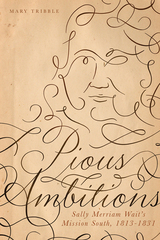 Pious Ambitions: Sally Merriam Wait's Mission South, 1813–1831
Mary Tribble
University of Tennessee Press, 2021 In 1812 at the age of nineteen, Sally Merriam Wait experienced her conversion. For those raised in an evangelical church during the religious fervor of the Second Great Awakening, conversion represented a key moment in a young person’s life, marking the transition from childhood and frivolity to the duties of a pious life. Sally’s conversion also marked the beginning of her journal. Wait grew up in a New England swept with revival. Her letters reveal a northernborn woman with anti-slavery leanings engaging with an unfamiliar environment in the slave-holding South; she comes to embrace the principles of a market economy in Jacksonian America, while attending to her developing religious faith. Her decisions are shaped by a surging evangelical movement, changes in the American economy, the rise of women’s social agency, a fracturing of political traditions, and the moral conflicts inherent in a slave economy. At its simplest, Sally’s life is the tale of a nineteenth-century woman endeavoring to make her mark on the world while striving to develop her faith. Pious Ambitions establishes Sally Merriam Wait as a significant figure in North Carolina and Baptist history. Her ambition led her from young convert to devoted wife of Reverend Samuel Wait, the first president and founder of Wake Forest University. Her journal was passed down carefully from generation to generation until it found its way in 1993 to the Special Collections and Archives at Z. Smith Reynolds Library at Wake Forest University in Winston-Salem, North Carolina, along with a large cache of letters and other documents. In examining this trove and reconstructing the life of Wait, Mary Tribble provides a rare glimpse into the spiritual education of a young woman who nevertheless successfully navigated the rise of capitalism in the market economy of the early nineteenth century.
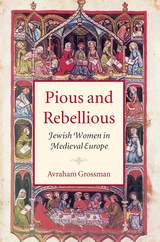 Pious and Rebellious: Jewish Women in Medieval Europe
Avraham Grossman
Brandeis University Press, 2004 This volume, an amazing act of historical recovery and reconstruction, offers a comprehensive examination of Jewish women in Europe during the High Middle Ages (1000–1300). Avraham Grossman covers multiple aspects of women’s lives in medieval Jewish society, including the image of woman, the structure of the family unit, age at marriage, position in family and society, her place in economic and religious life, her education, her role in family ceremonies, violence against women, and the position of the divorcée and the widow in society. Grossman shows that the High Middle Ages saw a distinct improvement in the status of Jewish women in Europe relative to their status during the Talmudic period and in Muslim countries. If, during the twelfth century, rabbis applauded women as "pious and pure" because of their major role in the martyrdom of the Crusades of 1096, then by the end of the thirteenth century, rabbis complained that women were becoming bold and rebellious. Two main factors fostered this change: first, the transformation of Jewish society from agrarian to "bourgeois," with women performing an increasingly important function in the family economy; and second, the openness toward women in Christian Europe, where women were not subjected to strict limitations based upon conceptions of modesty, as was the case in Muslim countries. The heart of Grossman’s book concerns the improvement of Jewish women’s lot, and the efforts of secular and religious authorities to impede their new-found status. Bringing together a variety of sources including halakhic literature, biblical and talmudic exegesis, ethical literature and philosophy, love songs, folklore and popular literature, gravestones, and drawings, Grossman’s book reconstructs the hitherto unrecorded lives of Jewish women during the Middle Ages.
 Pious Fashion: How Muslim Women Dress
Liz Bucar
Harvard University Press, 2017 Who says you can’t be pious and fashionable? Throughout the Muslim world, women have found creative ways of expressing their personality through the way they dress. Headscarves can be modest or bold, while brand-name clothing and accessories are part of a multimillion-dollar ready-to-wear industry that caters to pious fashion from head to toe. In this lively snapshot, Liz Bucar takes us to Iran, Turkey, and Indonesia and finds a dynamic world of fashion, faith, and style.
“Brings out both the sensuality and pleasure of sartorial experimentation.”
—Times Literary Supplement
“I defy anyone not to be beguiled by [Bucar’s] generous-hearted yet penetrating observation of pious fashion in Indonesia, Turkey and Iran… Bucar uses interviews with consumers, designers, retailers and journalists…to examine the presumptions that modest dressing can’t be fashionable, and fashion can’t be faithful.”
—Times Higher Education
“Bucar disabuses readers of any preconceived ideas that women who adhere to an aesthetic of modesty are unfashionable or frumpy.”
—Robin Givhan, Washington Post
“A smart, eye-opening guide to the creative sartorial practices of young Muslim women… Bucar’s lively narrative illuminates fashion choices, moral aspirations, and social struggles that will unsettle those who prefer to stereotype than inform themselves about women’s everyday lives in the fast-changing, diverse societies that constitute the Muslim world.”
—Lila Abu-Lughod, author of Do Muslim Women Need Saving?
 Pious Property: Islamic Mortgages in the United States
Bill Maurer
Russell Sage Foundation, 2006 Owning a home has always been central to the American dream. For the more than one million Muslims in the United States, this is no exception. However, the Qur'an forbids the payment of interest, which places conventional home financing out of reach for observant Muslims. To meet the growing Muslim demand for home purchases, a market for home financing that would be halal, or permissible under Islamic law, has emerged. In Pious Property, anthropologist William Maurer profiles the emergence of this new religiously based financial service and explores the ways it reflects the influence of Muslim practices on American economic life and vice versa. Pious Property charts the development of Islamic mortgages in America, starting with Islamic interpretations of the prohibition against riba—literally translated as "increase" but interpreted as "usury" or "interest." Maurer then explores the different practices that have emerged as permissible options for Islamic homebuyers—such as lease-to-own arrangements, profit-loss sharing, and cost-plus contracts—and explains how they have gained acceptance in the Islamic community by relying on payment schemes that avoid standard interest rate payments. Using interviews with Muslim homebuyers and financiers, and in-depth analysis of two companies that provide mortgage alternatives to Muslims, Maurer discovers an interesting paradox: progressive Muslims tend to use financial contracts that seemingly comply better with the prohibition against interest, while traditional Muslims seem more inclined to take on financing very similar to interest-based mortgages. Maurer finds that Muslims make their decisions about using Islamic mortgage alternatives based not only on the views of religious scholars, but also on their conceptions of how business is supposed to be conducted in America. While one form of Islamic financing is seemingly more congruent with the prohibition against riba, the other exhibits more of the qualities of American mortgages—anonymity and standardized forms. The appearance that an Islamic financing instrument is legal and professional leaves many Muslim homebuyers with the impression that it is halal, revealing the influence of American capitalism on Muslim Americans' understanding of their religious rules. The market for halal financial products exists at the intersection of American and Islamic culture and is emblematic of the way that, for centuries, America's newcomers have adapted to and changed the fabric of American life. In Pious Property, William Maurer explores this rapidly growing economic phenomenon with historical perspective and scholarly insight.
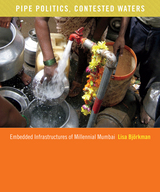 Pipe Politics, Contested Waters: Embedded Infrastructures of Millennial Mumbai
Lisa Bjorkman
Duke University Press, 2015 Winner, 2014 Joseph W. Elder Prize in the Indian Social Sciences
Despite Mumbai's position as India's financial, economic, and cultural capital, water is chronically unavailable for rich and poor alike. Mumbai's dry taps are puzzling, given that the city does not lack for either water or financial resources. In Pipe Politics, Contested Waters, Lisa Björkman shows how an elite dream to transform Mumbai into a "world class" business center has wreaked havoc on the city’s water pipes. In rich ethnographic detail, Pipe Politics explores how the everyday work of getting water animates and inhabits a penumbra of infrastructural activity—of business, brokerage, secondary markets, and sociopolitical networks—whose workings are reconfiguring and rescaling political authority in the city. Mumbai’s increasingly illegible and volatile hydrologies, Björkman argues, are lending infrastructures increasing political salience just as actual control over pipes and flows becomes contingent on dispersed and intimate assemblages of knowledge, power, and material authority. These new arenas of contestation reveal the illusory and precarious nature of the project to remake Mumbai in the image of Shanghai or Singapore and gesture instead toward the highly contested futures and democratic possibilities of the actually existing city.
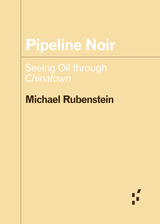 Pipeline Noir: Seeing Oil through Chinatown
Michael Rubenstein
University of Minnesota Press, 2025 Watching Chinatown fifty years after its release reveals hidden connections to today’s energy and climate crises
Pipeline Noir offers a fascinating interpretation of Chinatown, a classic of New Hollywood cinema, through the lens of petromodernity. Michael Rubenstein reimagines the film as an allegory for the 1970s energy crises, revealing how its focus on water infrastructure in early-twentieth-century California serves as a surrogate for the oil pipelines shaping the postwar global order. Introducing the concept of the “petroscope,” Rubenstein demonstrates how the film’s cinematic style mirrors the worldview shaped by petroleum’s dominance in modern life. Blending appreciation and analysis, this book uncovers layers of Chinatown’s narrative that resonate urgently today, and Rubenstein’s meticulous examinations of the screenplay’s draft history and of key scenes in the finished film shed new light on the film’s cultural and environmental significance. By aligning Chinatown with the emerging field of petrocriticism, Pipeline Noir offers a compelling contribution to film theory and the energy humanities.
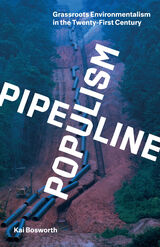 Pipeline Populism: Grassroots Environmentalism in the Twenty-First Century
Kai Bosworth
University of Minnesota Press, 2022 How contemporary environmental struggles and resistance to pipeline development became populist struggles
Stunning Indigenous resistance to the Keystone XL and the Dakota Access pipelines has made global headlines in recent years. Less remarked on are the crucial populist movements that have also played a vital role in pipeline resistance. Kai Bosworth explores the influence of populism on environmentalist politics, which sought to bring together Indigenous water protectors and environmental activists along with farmers and ranchers in opposition to pipeline construction. Here Bosworth argues that populism is shaped by the “affective infrastructures” emerging from shifts in regional economies, democratic public-review processes, and scientific controversies. With this lens, he investigates how these movements wax and wane, moving toward or away from other forms of environmental and political ideologies in the Upper Midwest. This lens also lets Bosworth place populist social movements in the critical geographical contexts of racial inequality, nationalist sentiments, ongoing settler colonialism, and global empire—crucial topics when grappling with the tensions embedded in our era’s immense environmental struggles. Pipeline Populism reveals the complex role populism has played in shifting interpretations of environmental movements, democratic ideals, scientific expertise, and international geopolitics. Its rich data about these grassroots resistance struggles include intimate portraits of the emotional spaces where opposition is first formed. Probing the very limits of populism, Pipeline Populism presents essential work for an era defined by a wave of people-powered movements around the world.
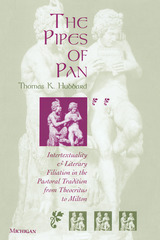 The Pipes of Pan: Intertextuality and Literary Filiation in the Pastoral Tradition from Theocritus to Milton
Thomas K. Hubbard
University of Michigan Press, 1999 Departing from conventional views of the pastoral genre as an Arcadian escape from urban sophistication, The Pipes of Pan highlights its genesis in the allusive and polemical literary cultures of Alexandria and Rome. Both cities placed great emphasis upon learned invocation and reformulation of poetic models. The pastoral metaphor provided Theocritus and Vergil with tools for representing the contests and confrontations of poets and genres, the exchange of ideas among poets, and poets' reflections on the efficacy of their works.
Pastoral poetry highlights the didactic relationship of older and younger shepherds, whether as rivals or as patron and successor. As such it is an ideal form for young poets' self-representation vis-à-vis their elders, whose work they simultaneously appropriated and transformed, even as the elder poets were represented in the new texts. This influence is reenacted in every generation: Theocritus vs. his Alexandrian forebears, Vergil vs. Theocritus, Calpurnius vs. Vergil, Nemesianus vs. Vergil and Calpurnius, Petrarch vs. Vergil, Boccaccio vs. Petrarch, Spenser vs. Vergil, along with Chaucer and Milton vs. Spenser.
The Pipes of Pan combines multiple strands of contemporary intertextual theory with reception aesthetics and Harold Bloom's theory of intersubjective conflict between generations of poets. It also provides one of the first systematic studies of intertextual and intersubjective dynamics within a whole genre.
This work will be of interest to classicists, students of literary theory, comparative literature, medieval and Renaissance literature, Italian humanism, and English literature of the sixteenth and seventeenth centuries. All texts are translated.
Thomas Hubbard is Associate Professor of Classics, University of Texas at Austin.
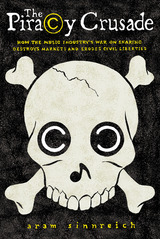 The Piracy Crusade: How the Music Industry's War on Sharing Destroys Markets and Erodes Civil Liberties
Aram Sinnreich
University of Massachusetts Press, 2013 In the decade and a half since Napster first emerged, forever changing the face of digital culture, the claim that "internet pirates killed the music industry" has become so ubiquitous that it is treated as common knowledge. Piracy is a scourge on legitimate businesses and hard-working artists, we are told, a "cybercrime" similar to identity fraud or even terrorism.
In The Piracy Crusade, Aram Sinnreich critiques the notion of "piracy" as a myth perpetuated by today's cultural cartels—the handful of companies that dominate the film, software, and especially music industries. As digital networks have permeated our social environment, they have offered vast numbers of people the opportunity to experiment with innovative cultural and entrepreneurial ideas predicated on the belief that information should be shared widely. This has left the media cartels, whose power has historically resided in their ability to restrict the flow of cultural information, with difficult choices: adapt to this new environment, fight the changes tooth and nail, or accept obsolescence. Their decision to fight has resulted in ever stronger copyright laws and the aggressive pursuit of accused infringers.
Yet the most dangerous legacy of this "piracy crusade" is not the damage inflicted on promising start-ups or on well-intentioned civilians caught in the crosshairs of file-sharing litigation. Far more troubling, Sinnreich argues, are the broader implications of copyright laws and global treaties that sacrifice free speech and privacy in the name of combating the phantom of piracy—policies that threaten to undermine the foundations of democratic society.
Piracy in World History
Stefan Amirell
Amsterdam University Press, 2022 In a modern global historical context, scholars have often regarded piracy as an essentially European concept which was inappropriately applied by the expanding European powers to the rest of the world, mainly for the purpose of furthering colonial forms of domination in the economic, political, military, legal and cultural spheres. By contrast, this edited volume highlights the relevance of both European and non-European understandings of piracy to the development of global maritime security and freedom of navigation. It explores the significance of ‘legal posturing’ on the part of those accused of piracy, as well as the existence of non-European laws and regulations regarding piracy and related forms of maritime violence in the early modern era. The authors in Piracy in World History highlight cases from various parts of the early-modern world, thereby explaining piracy as a global phenomenon.
 Piracy: The Intellectual Property Wars from Gutenberg to Gates
Adrian Johns
University of Chicago Press, 2009 Since the rise of Napster and other file-sharing services in its wake, most of us have assumed that intellectual piracy is a product of the digital age and that it threatens creative expression as never before. The Motion Picture Association of America, for instance, claimed that in 2005 the film industry lost $2.3 billion in revenue to piracy online. But here Adrian Johns shows that piracy has a much longer and more vital history than we have realized—one that has been largely forgotten and is little understood. Piracy explores the intellectual property wars from the advent of print culture in the fifteenth century to the reign of the Internet in the twenty-first. Brimming with broader implications for today’s debates over open access, fair use, free culture, and the like, Johns’s book ultimately argues that piracy has always stood at the center of our attempts to reconcile creativity and commerce—and that piracy has been an engine of social, technological, and intellectual innovations as often as it has been their adversary. From Cervantes to Sonny Bono, from Maria Callas to Microsoft, from Grub Street to Google, no chapter in the story of piracy evades Johns’s graceful analysis in what will be the definitive history of the subject for years to come.
Pirandello Commentaries
Eric Bentley
Northwestern University Press, 1986 A New York newspaper column from 1924 proclaimed: "Everybody's caught in the mazes of Pirandellism. . . . He is the great convention-smasher, and he just naturally leaves you face to face with the eternal query, What is truth?"
"Everybody" is still caught in the mazes of Pirandellism. But since the 1940s Eric Bentley has threaded his way through those mazes. The Pirandello Commentaries is the result.
 Pirate Novels: Fictions of Nation Building in Spanish America
Nina Gerassi-Navarro
Duke University Press, 1999 In Pirate Novels Nina Gerassi-Navarro examines an overlooked genre to reveal how history and fiction blend to address important isuses of nation building in nineteenth-century Spanish America. In the figure of the pirate, bold and heroic to some, cruel and criminal to others, she reveals an almost ideal character that came to embody the spirit of emerging nationhood and the violence associated with the struggle to attain it.
Beginning with an overview of the history of piracy, Gerassi-Navarro traces the historical icon of the pirate through colonial-era chronicles before exploring a group of nineteenth-century Mexican, Colombian, and Argentine novels. She argues that the authors of these novels, in their reconstructions of the past, were less interested in accurate representations than in using their narratives to discuss the future of their own countries. In reading these pirate narratives as metaphors for the process of nation building in Spanish America, Gerassi-Navarro exposes the conflicting strains of a complex culture attempting to shape that future. She shows how these pirate stories reflect the on-going debates that marked the consolidation of nationhood, as well as the extent to which the narratives of national identity in Spanish America are structured in relation to European cultures, and the ways in which questions of race and gender were addressed.
Providing new readings of the cultural and political paradigms that marked the literary production of nineteenth-century Spanish America, Pirate Novels uniquely expands the range of texts usually examined in the study of nation-building. It will interest literary scholars generally as well as those engaged in Latin American, colonial, and postcolonial studies.
Pirates Reader
Richard Peterson
University of Pittsburgh Press, 2003
Whether winning world championships or falling into last place, fielding teams with Hall of Fame players or trotting out bumbling boys of summer, the Pittsburgh Pirates have thrilled, frustrated, and fascinated generations of fans since 1876.
To date, the Pirates have won five World Series and have a total of thirty-six players and managers in the Hall of Fame-including Honus Wagner, Pie Traynor, Lloyd and Paul Waner, Ralph Kiner, Willie Stargell, Roberto Clemente, and Bill Mazeroski.
The Pirates Reader is a tribute to the fans, players, and teams who have forged the franchise's rich history. Richard Peterson has collected the writing of baseball's greatest storytellers and brings to life the players, games, and magical moments for this classic and well-loved team.
Pirkei Avot: A Social Justice Commentary
Rabbi Dr. Shmuly Yanklowitz
Central Conference of American Rabbis, 2018 Pirkei Avot is the urtext of Jewish practical wisdom. In many ways, Pirkei Avot was the first recorded manifesto of social justice in Western civilization. This commentary explores the text through a lens of contemporary social justice and moral philosophy, engaging both classical commentators and modern thinkers.
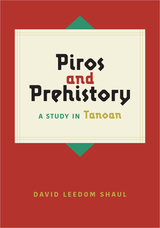 Piros and Prehistory: A Study in Tanoan
David Leedom Shaul
University of Utah Press, 2024 In Piros and Prehistory, David Leedom Shaul turns his attention to the Piro language, once spoken by the people of the Piro pueblos in New Mexico but extinct since approximately the year 1900. While arguments have been made in favor of Piro belonging to the Tiwa branch of the Tanoan family, Shaul counters this classification with a detailed rebuttal, firmly establishing Piro within the Tanoan family but outside of the Tiwa branch.
Shaul’s arguments use linguistic analyses coupled with historic and prehistoric records of migration and cultural interaction. Following the establishment of Piro as a Tanoan language, much of the linguistic analysis involves determining the aspects of Piro that were inherited from the earlier Proto-Tanoan versus those that were incorporated later as a result of borrowing from other languages through cultural interaction. This book lays out the linguistic argument that the similarities between Piro and Tiwan languages result from borrowing, not common ancestry, and it provides a record of contact between groups and linguistic evolution based on these movements.
 Piroska and the Pantokrator: Dynastic Memory, Healing and Salvation in Komnenian Constantinople
Marianne Sághy
Central European University Press, 2019 This book is about the Christ Pantokrator, an imposing monumental complex serving monastic, dynastic, medical and social purposes in Constantinople, founded by Emperor John II Komnenos and Empress Piroska-Eirene in 1118. Now called the Zeyrek Mosque, the second largest Byzantine religious edifice after Hagia Sophia still standing in Istanbul represents the most remarkable architectural and the most ambitious social project of the Komnenian dynasty. This volume approaches the Pantokrator from a special perspective, focusing on its co-founder, Empress Piroska-Eirene, the daughter of the Hungarian king Ladislaus I. This particular vantage point enables its authors to explore not only the architecture, the monastic and medical functions of the complex, but also Hungarian-Byzantine relations, the cultural and religious history of early medieval Hungary, imperial representation, personal faith and dynastic holiness. Piroska's wedding with John Komnenos came to be perceived as a union of East and West. The life of the Empress, a "sainted ruler," and her memory in early Árpádian Hungary and Komnenian Byzantium are discussed in the context of women and power, monastic foundations, architectural innovations, and spiritual models.
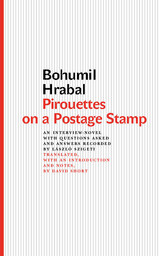 Pirouettes on a Postage Stamp: An Interview-Novel with Questions Asked and Answers Recorded by László Szigeti
Bohumil Hrabal
Karolinum Press, 2008 Novelist Bohumil Hrabal (1914–97) was born in Brno, Czechoslovakia and spent decades working at a variety of laboring jobs before turning to writing in his late forties. From that point, he quickly made his mark on the Czech literary scene; by his death he was ranked with Jaroslav Hašek, Karel Capek, and Milan Kundera as among the nation’s greatest twentieth-century writers. Known for writing about political questions with humor and vivid expressiveness, Hrabal also was given to experimentation—his early novel Dancing Lessons for the Advanced in Age, for example, consists of a single extended sentence.
Pirouettes on a Postage Stamp carried Hrabal’s experimentation to the field of autobiography. On its surface a verbatim record of an oral interview conducted by Hungarian journalist László Szigeti, the book confuses and confounds with false starts, digressions, and philosophical asides. Yet despite all the games and distractions, Hrabal’s personality shines through, compelling and unforgettable, making Pirouette on a Postage Stamp an unexpected treat for any lover of Czech literature.
 Pissarro, Neo-Impressionism, and the Spaces of the Avant-Garde
Martha Ward
University of Chicago Press, 1996 Martha Ward tracks the development and reception of neo-impressionism, revealing how the artists and critics of the French art world of the 1880s and 1890s created painting's first modern vanguard movement.
Paying particular attention to the participation of Camille Pissarro, the only older artist to join the otherwise youthful movement, Ward sets the neo-impressionists' individual achievements in the context of a generational struggle to redefine the purposes of painting. She describes the conditions of display, distribution, and interpretation that the neo-impressionists challenged, and explains how these artists sought to circulate their own work outside of the prevailing system. Paintings, Ward argues, often anticipate and respond to their own conditions of display and use, and in the case of the neo-impressionists, the artists' relations to market forces and exhibition spaces had a decisive impact on their art.
Ward details the changes in art dealing, and chronicles how these and new freedoms for the press made artistic vanguardism possible while at the same time affecting the content of painting. She also provides a nuanced account of the neo-impressionists' engagements with anarchism, and traces the gradual undermining of any strong correlation between artistic allegiance and political direction in the art world of the 1890s.
Throughout, there are sensitive discussions of such artists as Georges Seurat and Paul Signac, as well as Pissarro. Yet the touchstone of the book is Pissarro's intricate relationship to the various factions of the Paris art world.
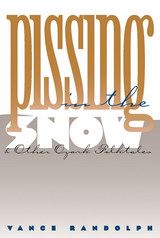 Pissing in the Snow and Other Ozark Folktales
Vance Randolph
University of Illinois Press, 1976 Vance Randolph has long been an undeniable presence on the American folklore scholarship scene. His Ozark corpus is "the best known single body of regional folklore in the United States," according to Richard Dorson, director of the Folklore Institute at Indiana University. And Gershon Legman, the world's leading scholar of sexual and scatological humor, has called Randolph "the greatest and most successful field collector and regional folklorist that America ever had." In Legman's estimation, "We have no one else like him. He is a national treasure, like Mark Twain.
Randolph's reputation rests on the massive accumulation of folksong, folktale, and ballad materials he collected during forty years of living and working in the Ozarks. Unfortunately, in the 1950s when Randolph published several collection of Ozark tales, the material in this volume was considered unprintable.
Pissing in the Snow departs from the academic prudery that until recently has restricted the amount of bawdy folklore available for study. It presents a body of material that for twenty years has circulated only in manuscript or microfilm under its present title.
When placed in their rightful context alongside Randolph's other collections of folk material, the bawdy tales help provide evidence of what Ozark hill people think about their own lives and language. As Rayna Green writes in her introduction, "The entire body of material . . . offers a picture of expressive behavior unparalleled by any other American region's or group's study." Hoffmann's annotations draw parallels between the erotic narrative tradition of the Ozarks and that in other parts of the country and the world, especially Europe.
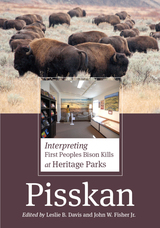 Pisskan: Interpreting First Peoples Bison Kills at Heritage Parks
Edited by Leslie B. Davis and John W. Fisher, Jr.
University of Utah Press, 2016 Translating professional archaeological research into meaningful and thoughtful educational experiences for the public has taken on increased urgency in recent years. This book presents eight case studies by professional archaeologists who discuss innovative approaches and advances in research methodology while examining the myriad challenges associated with interpreting this work for the public. Each study focuses on a particular Native American bison-kill site and shares the unique path from archaeological investigation to the creation of a public interpretive facility. Collectively the chapters comprise a comprehensive exploration of the multifaceted linkages between archaeological research and public education—ranging in scope from the interrelationships of an interpretive facility with its surrounding communities to the nuances of explaining bone decomposition to site visitors. These examples provide valuable insights from which archaeologists and science interpreters of all disciplines can conceptualize and build their own educational programs.
The Pistol
James Jones
University of Chicago Press, 2003 As bombs begin to fall on Pearl Harbor, nineteen-year-old PFC Richard Mask is wearing a pistol, a .45 caliber automatic that makes him feel connected to the army of the Wild West and Custer's Cavalry. In the chaos of his first days and weeks of the war, as Mask and his company move from Schofield Barracks to the beaches of Oahu, then to a remote mountain pass, a struggle over the pistol dominates this novella's action, providing the pathos and savagery of the story.
 Pistol Packin' Mama: Aunt Molly Jackson and the Politics of Folksong
Shelly Romalis
University of Illinois Press, 1999 A coal miner's daughter, Jackson grew up in eastern Kentucky, married a miner, and became a midwife, labor activist, and songwriter. Fusing hard experience with the rich Appalachian musical tradition, her songs became weapons of struggle. In 1931, at age fifty, she was "discovered" and brought north. There, she was sponsored and befriended by an illustrious circle of left-wing intellectuals and musicians that included Theodore Dreiser, Alan Lomax, and Charles and Pete Seeger. Along with Sarah Ogan Gunning, Jim Garland (two of Aunt Molly's half-siblings), Woody Guthrie, Leadbelly, and other folk musicians, Jackson served as a cultural broker who linked the rural working poor to big-city, left-wing activism. Shelly Romalis combines interviews with archival materials to construct an unforgettable portrait of an Appalachian woman who remained radical, raucous, proud, poetic, offensive, self-involved, and in spirit the "real" pistol packin' mama of the song.
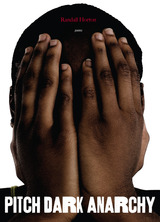 Pitch Dark Anarchy: Poems
Randall Horton
Northwestern University Press, 2013 Pitch Dark Anarchy investigates the danger of one single narrative with multilayered poems that challenge concepts of beauty and image, race and identity, as well as the construction of skin color. Through African American memory and moments in literature, the poems seek to disrupt and dismantle foundations that create erasures and echoes of the unremembered. Pitch Dark Anarchy uses the slave revolt of the Amistad as a starting point, a metaphor for "opposition" and "against." These themes run through the very core for the book while drawing on inventive and playful language. The poems bring to life human experiences and conditions created by an "elite" society. In these poems, locations and landscapes are always shifting, proving that our shared experiences can be interchangeable. At the very core of Pitch Dark Anarchy is a seven-part poem based on the artist Margret Bowland’s "Another Thorny Crown Series," which are paintings of an African American girl in white face.
Through innovative formal and visual techniques, such as fractured syntax and typographical disruption, Horton evokes the disorienting experiences of urban life, while also calling into question the complicity of language in the oppressive structures he anatomizes.
A Pitch of Philosophy: Autobiographical Exercises
Stanley Cavell
Harvard University Press, 1994 This book is an invitation to the life of philosophy in the United States, as Emerson once lived it and as Stanley Cavell now lives it—in all its topographical ambiguity. Cavell talks about his vocation in connection with what he calls voice—the tone of philosophy—and his right to take that tone, and to describe an anecdotal journey toward the discovery of his own voice.
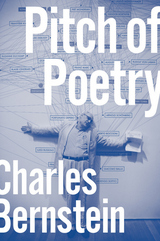 Pitch of Poetry
Charles Bernstein
University of Chicago Press, 2016 Praised in recent years as a “calculating, improvisatory, essential poet” by Daisy Fried in the New York Times, Charles Bernstein is a leading voice in American literary theory. Pitch of Poetry is his irreverent guide to modernist and contemporary poetics.
Subjects range across Holocaust representation, Occupy Wall Street, and the figurative nature of abstract art. Detailed overviews of formally inventive work include essays on—or “pitches” for—a set of key poets, from Gertrude Stein and Robert Creeley to John Ashbery, Barbara Guest, Larry Eigner, and Leslie Scalapino. Bernstein also reveals the formative ideas behind the magazine L=A=N=G=U=A=G=E. The final section, published here for the first time, is a sweeping work on the poetics of stigma, perversity, and disability that is rooted in the thinking of Edgar Allan Poe, Emily Dickinson, Ralph Waldo Emerson, and William Blake.
Pitch of Poetry makes an exhilarating case for what Bernstein calls echopoetics: a poetry of call and response, reason and imagination, disfiguration and refiguration.
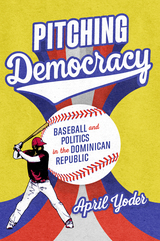 Pitching Democracy: Baseball and Politics in the Dominican Republic
April Yoder
University of Texas Press, 2023 How Dominicans contribute to Major League Baseball and what they receive in return.
From Juan Marichal and Pedro Martínez to Albert Pujols and Juan Soto, Dominicans have long been among Major League Baseball’s best. How did this small Caribbean nation become a hothouse of baseball talent? To many fans, the answer is both obvious and disconcerting: pro teams use their riches to develop talent abroad, creating opportunities for superhuman athletes and corrupt officials, while the rest of the population sees little benefit. Yet this interpretation of history is incomplete. April Yoder traces how baseball has empowered Dominicans in their struggles for democracy and social justice. While the dictatorship of Rafael Trujillo saw the sport as a means of cementing its power at home and abroad, the Dominican people fashioned an emancipated civic sphere by seeing their potential for democratic success in their compatriots’ baseball success. Later, Dominicans articulated demands for democracy, economic opportunity, and civil rights through successful calls for public support of amateur and professional baseball. Today, Dominicans continue to demand that incentives for the baseball industry foster human as well as economic development. A revelatory and innovative history, Pitching Democracy restores agency to the Dominican people and honors their true love of the game.
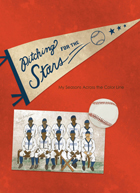 Pitching for the Stars: My Seasons Across the Color Line
Jerry Craft and Kathleen Sullivan
Texas Tech University Press, 2013
In early summer 1959, Texas Tech senior Jerry Craft was planning to stay home on the family ranch when Carl Sedberry, a semipro baseball manager, phoned, asking him to try out for his club. Craft had never heard of the Wichita Falls/Graham Stars, but they needed a pitcher, and Craft was surprised and persuaded by their offer to pay $75 per game. Craft was in for an even bigger surprise when he reported to Spudder Park and realized that Mr. Sedberry was recruiting him for the West Texas Colored League.
No one—least of all Craft—could know for sure what would happen when the League’s first white pitcher took the mound that summer day. But as Mr. Sedberry’s wisdom prevailed, the Stars and their white teammate pulled together to play a game they loved. Craft would pitch two seasons for the Stars. As they made history Craft and his teammates would learn much from Mr. Sedberry and each other about sports and life, and share experiences that would change them forever.
Looking back on those years before the Civil Rights movement, when baseball was still very much a segregated game in a segregated society, Craft relates an unlikely story of respect, character, humor, and ultimately friendship.
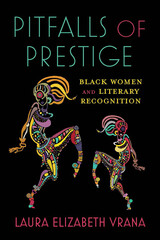 Pitfalls of Prestige: Black Women and Literary Recognition
Laura Elizabeth Vrana
Ohio State University Press, 2024 Winner, 2025 College Language Association Book Award From 1987, when Rita Dove won the Pulitzer Prize for Poetry, to 2021, when Amanda Gorman skyrocketed to celebrity status after performing during Biden’s inauguration and the Super Bowl, Black women have seemingly attained secure, stable positions at the forefront of American poetry. But this prominence comes at a price. As figures like Dove and Elizabeth Alexander have become well known, receiving endorsements and gaining visible platforms from major prizes, academic institutions, and publishing houses, the underlying terms of evaluation that greet Black women’s poetics often remain superficial, reflecting efforts to co-opt and contain rather than meaningfully consider new voices and styles. In Pitfalls of Prestige, Laura Elizabeth Vrana surveys how developments in American literary institutions since 1980 have shaped—and been shaped by—Black women poets. Grappling with the refulgent works of the most acclaimed contemporary figures alongside those of lesser-known poets, Vrana both elucidates how seeming gestures of inclusion can actually result in constraining Black women poets’ works and also celebrates how these writers draw on a rich lineage and forge alternative communities in order to craft continually innovative modes of transgressing such limits, on the page and in life.
 Pitied but Not Entitled: Single Mothers and the History of Welfare
Linda Gordon
Harvard University Press With three-fourths of all poor families headed by women and about 54 percent of single-mother families living below the poverty line, a rethinking of the fundamental assumptions of our much-reviled welfare program is clearly necessary. Here, Linda Gordon unearths the tangled roots of AFDC (Aid to Families with Dependent Children). Competing visions of how and to whom public aid should be distributed were advanced by male bureaucrats, black women's organizations, and white progressive feminists. From their policy debates emerged a two-track system of public aid, in which single mothers got highly stigmatized "welfare" while other groups, such as the aged and the unemployed, received "entitlements."
Gordon strips today's welfare debates of decades of irrelevant and irrational accretion, revealing that what appeared progressive in the 1930s is antiquated in the 1990s. She shows that only by shedding false assumptions, and rethinking the nature of poverty, can we advance a truly effective welfare reform.
 Pitiful Plaintiffs: Child Welfare Litigation and the Federal Courts
Susan Gluck Mezey
University of Pittsburgh Press, 2000
Focusing on a class action lawsuit against the Illinois child welfare system (B. H. v. Johnson), Pitiful Plaintiffs examines the role of the federal courts in the child welfare policymaking process and the extent to which litigation can achieve the goal of reforming child welfare systems.
Beginning in the 1970s, children’s advocates asked the federal courts to intervene in the child welfare policymaking process. Their weapons were, for the most part, class action suits that sought widespread reform of child welfare systems. This book is about the tens of thousands of abused and neglected children in the United States who enlisted the help of the federal courts to compel state and local governments to fulfill their obligations to them. Based on a variety of sources, the core of the research consists of in-depth, open-ended interviews with individuals involved in the Illinois child welfare system, particularly those engaged in the litigation process, including attorneys, public officials, members of children’s advocacy groups, and federal court judges. The interviews were supplemented with information from legal documents, government reports and publications, national and local news reports, and scholarly writings. Despite the proliferation of child welfare lawsuits and the increasingly important role of the federal judiciary in child welfare policymaking, structural reform litigation against child welfare systems has received scant scholarly attention from a political science or public policy perspective. Mezey’s comprehensive study will be of interest to political scientists and public policy analysts, as well as anyone involved in social justice and child welfare.
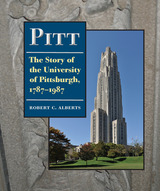 Pitt: The Story of the University of Pittsburgh, 1787–1987
Robert C. Alberts
University of Pittsburgh Press, 1986 This is a history of a major American university from its birth on the western frontier in the eighteenth century through its two-hundredth anniversary. Told primarily through the stories of its energetic and sometimes eccentric chancellors, it’s a colorful and highly readable chronicle of the University of Pittsburgh.
The story begins in the early spring of 1781, when an ambitious young Philadelphia lawyer named Hugh Henry Brackenridge crossed the Alleghenies to seek his opportunity in Pittsburgh. “My object,”?he wrote, “was to advance the country [Western Pennsylvania] and thereby myself.” He founded Pittsburgh Academy, later to be the Western University of Pennsylvania and then the University of Pittsburgh, and lived to see the school grow along with the city.
Author Robert C. Alberts, mines the University archives and describes many issues for the first time. Among them is the role played by the Board of Trustees in the conflicts of the administration of Chancellor John Gabbert Bowman, including the firing of a controversial history professor, Ralph Turner; the resignation of the legendary football coach, Jock Sutherland; and a Board investigation into Bowman’s handling of faculty and staff. We see Pitt’s decade of progress under Edward Litchfield (1956–165), who gambled that the millions of dollars he spent . . . would be forthcoming form somewhere or someone; but who, as it turned out was mistaken.”
Pitt became a state-related university in August 1966, but financial stability was achieved gradually during the administration of Chancellor Wesley W. Posvar. The ensuing crisis of the 1960s and early 1970, caused by the Vietnam War, and the student protests that accompanied it, are described in rich detail. The history then follows Pitt’s emergence as a force in international higher education; the institution’s role in fostering a cooperative relationship with business; and its entry into the postindustrial age of high technology.
The story of Pitt reflects all the struggles and the hopes of the region. As Alberts writes in his preface, “There was drama; there was tragedy; there was indeed controversy and politics. There were, unexpectedly, rich veins of humor, occasionally of comedy.”
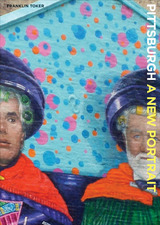 Pittsburgh: A New Portrait
Franklin Toker
University of Pittsburgh Press, 2009 From its founding in 1758, Pittsburgh has experienced several epic transformations. It began its existence as a fortress, on a site originally selected by George Washington. A hundred years later, and well into our own time, no other American city was as intensively industrialized, only to be later consigned to “rustbelt” status. Remade as a thriving twenty-first-century city and an international center for science, medicine, biotechnology, and financial services, Pittsburgh is now routinely acclaimed as one of the most promising and livable of America's cities. Franklin Toker shows us why.
Toker highlights this remarkable story of urban reinvention by focusing on what makes Pittsburgh so resilient and appealing - its strong neighborhoods and their surprisingly rich architectural history. The many unique, lively urban communities that make up Pittsburgh are a treasure trove of every imaginable style of structure, from Victorian to Bauhaus, Gothic to Art Deco, and from Industrial to Green. These ordinary homes expressed the aspirations of people who came from around the world to settle in Pittsburgh, while they built the city itself into an economic powerhouse. With the wealth generated by this everyday work, local captains of industry could build their own monumental additions to Pittsburgh's urban landscape, including two of America's greatest buildings: H. H. Richardson's Allegheny Courthouse and Frank Lloyd Wright's Fallingwater.
With accessible prose, Toker examines Pittsburgh in its historical context (from Indian settlement to postmodern city), in its regional setting (from the playgrounds of the Laurel Highlands to the hard-working mill towns dotting the landscape), and from the street level (leading the reader on a personal tour through every neighborhood). Lavishly illustrated with photos and maps, Pittsburgh: A New Portrait reveals the true colors of a truly great American city.
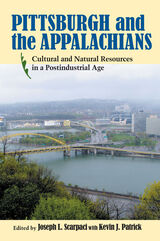 Pittsburgh and the Appalachians: Cultural and Natural Resources in a Postindustrial Age
Scarpaci
University of Pittsburgh Press, 2006
Few American cities reflect the challenges and promise of a twenty-first-century economy better than Pittsburgh and its surrounding region. Once a titan of the industrial age, Pittsburgh flourished from the benefits of its waterways, central location, and natural resources-bituminous coal to fire steel furnaces; salt and sand for glass making; gas, oil, and just enough ore to spark an early iron industry. Today, like many cities located in the manufacturing triangle that stretches from Boston to Duluth to St. Louis, Pittsburgh has made the transition to a service-based economy.
Pittsburgh and the Appalachians presents a collection of eighteen essays that explore the advantages and disadvantages that Pittsburgh and its surrounding region face in the new global economy, from the perspectives of technology, natural resources, workforce, and geography. It offers an extensive examination of the processes and factors that have transformed much of industrial America during the past half-century, and shows how other cities can learn from the steps Pittsburgh has taken through redevelopment, green space acquisition, air and water quality improvement, cultural revival, and public-private partnerships to create a more livable, economically viable region for future populations.
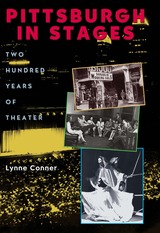 Pittsburgh in Stages
Lynne Conner
University of Pittsburgh Press, 2007
Pittsburgh has a rich and diverse theatrical tradition, from early frontier performances by officers stationed at Fort Pitt through experimental theater at the end of the twentieth century. Pittsburgh in Stages offers the first comprehensive history of theater in Pittsburgh, placing it within the context of cultural development in the city and the history of theater nationally.
By the time the first permanent theater was built in 1812, Pittsburgh had already established itself as a serious patron of the theatrical arts. The city soon hosted New York and London-based traveling companies, and gained a national reputation as a proving ground for touring productions. By the early twentieth century, numerous theaters hosted 'popular-priced' productions of vaudeville and burlesque, and theater was brought to the masses. Soon after, Pittsburgh witnessed the emergence of myriad community-based theater groups and the formation of the Federation of Non-Commercial Theatres and the New Theater League, guilds designed to share resources among community producers. The rise of local theater was also instrumental to the growth of African American theatrical groups. Though victims of segregation, their art flourished, and was only later recognized and blended into Pittsburgh's theatrical melting pot.
Pittsburgh in Stages relates the significant influence and interpretation of urban socioeconomic trends in the theatrical arts and the role of the theater as an agent of social change. Dividing Pittsburgh's theatrical history into distinct eras, Lynne Conner details the defining movements of each and analyzes how public tastes evolved over time. She offers a fascinating study of regional theatrical development and underscores the substantial contribution of regional theater in the history of American theatrical arts.
 The Pittsburgh Pirates
Frederick G. Lieb. Foreword by Richard "Pete" Peterson
Southern Illinois University Press, 2003 An admirer of Pirate president Barney Dreyfuss, prolific baseball writer Frederick G. Lieb consorted with the club’s biggest stars, christened the legendary Dreyfuss “the first-division man,” and produced The Pittsburgh Pirates, one of the fifteen celebrated histories of major league teams commissioned by G. P. Putnam’s Sons in the 1940s and 1950s. Originally published in 1948, Lieb’s history ranges from the ball club’s earliest professional days in the late nineteenth century as the Pittsburgh Alleghenies to its spring training session in preparation for the 1948 season, a span that included six National League pennants and two World Series championships, as well as a loss to the Boston Red Sox, then the Pilgrims, at the inaugural World Series a century ago. “This reprint of Fred Lieb’s The Pittsburgh Pirates is an invitation for baseball readers to enjoy Lieb’s wonderful stories of the great Pirate teams of the first half of the twentieth century,” writes Richard “Pete” Peterson in the new foreword to this edition. “Lieb’s book is rich with accounts of World Series triumphs and disappointments, of epic encounters on the playing field, like that between Wagner and Cobb, of mutinies in the clubhouse, of courageous comebacks, and of devastating defeats, including the infamous ‘homer in the gloaming.’” In Lieb’s personable and anecdotal prose, honed over the course of his sustained sportswriting career, the book conveys “baseball drama of the highest order,” including the pre-Dreyfuss days of Captain Kerr, Ned Hanlon, and Connie Mack; Dreyfuss’s dynasty in the early twentieth century; the dramatic World Series triumphs of 1909 and 1925; the end of the Dreyfuss era and the sale of the club to a syndicate headed by John Galbreath and Bing Crosby; and the purchase of Hank Greenberg and the emergence of slugger Ralph Kiner. Aided by twenty-five black-and-white photographs, this rare history revisits the glories and stories of “fabulous old Pirates” such as Honus Wagner, Tommy Leach, Fred Clarke, Babe Adams, Max Carey, Kiki Cuyler, Pie Traynor, Paul and Lloyd Waner, and Arky Vaughan.
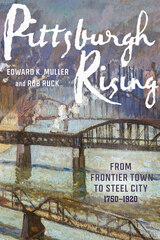 Pittsburgh Rising: From Frontier Town to Steel City, 1750-1920
Edward Muller and Rob Ruck
University of Pittsburgh Press, 2024 Over 170 years, Pittsburgh rose from remote outpost to industrial powerhouse. With the formation of the United States, the frontier town located at the confluence of three rivers grew into the linchpin for trade and migration between established eastern cities and the growing settlements of the Ohio Valley. Resources, geography, innovation, and personalities led to successful glass, iron, and eventually steel operations. As Pittsburgh blossomed into one of the largest cities in the country and became a center of industry, it generated great wealth for industrial and banking leaders. But immigrants and African American migrants, who labored under insecure, poorly paid, and dangerous conditions, did not share in the rewards of growth. Pittsburgh Rising traces the lives of individuals and families who lived and worked in this early industrial city, jammed into unhealthy housing in overcrowded neighborhoods near the mills. Although workers organized labor unions to improve conditions and charitable groups and reform organizations, often helmed by women, mitigated some of the deplorable conditions, authors Muller and Ruck show that divides along class, religious, ethnic, and racial lines weakened the efforts to improve the inequalities of early twentieth-century Pittsburgh—and persist today.
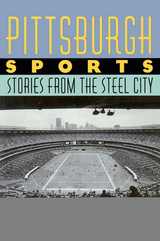 Pittsburgh Sports: Stories From The Steel City
Randy Roberts
University of Pittsburgh Press, 2002
Summer afternoons at Forbes Field, playoff Sundays with the Steelers, winter nights at the Igloo cheering for Mario and the Penguins: Pittsburgh Sports captures all that and more. With stories from sports fans, historians, and former athletes, Pittsburgh Sports mixes personal experiences with team histories to capture the full range of what it means to be a sports fan—in Pittsburgh, or, by extension, anywhere.
A book that can be read cover-to-cover, or in bits and pieces, Pittsburgh Sports includes chapters on the ill-fated Pittsburgh Pipers, who won the American Basketball Association’s first championship, then folded four years later; the Pittsburgh Crawfords and the Homestead Grays, perennial Negro League powerhouses; Johnny Unitas, Joe Namath, Jim Kelly, Joe Montana, Dan Marino, and other legends of western Pennsylvania high school football; boxing’s illustrious past in the Iron City; football reminiscences by a former Steelers punter; and the ups and downs of the Pittsburgh Pirates.
Pittsburgh Surveyed: Social Science and Social Reform in the Early Twentieth Century
Maurine Greenwald
University of Pittsburgh Press, 1996 From 1909-1914 the Pittsburgh Survey brought together statisticans, social workers, engineers, lawyers, physicians, economists, and city planners to study the effects of industrialization on the city of Pittsburgh. Pittsburgh Surveyed examines the accuracy and the impact of the influential Pittsburgh Survey, emphasizing its role in the social reform movement of the early twentieth century.
Pittsburgh: The Story of a City, 1750-1865
Leland D. Baldwin
University of Pittsburgh Press, 1970 Originally published in 1937, [t]his standard history of Pittsburgh tells the city’s story from its violent days as an eighteenth-century outpost of empire to the onset of its great age of industrial expansion. With wonderful line illustrations by Ward Howe.
Pittsburgh Then and Now
Arthur G. Smith
University of Pittsburgh Press, 2006 This handsome volume presents 161 pairs of matching before and after photographs of Pittsburgh. A treasury of images for those who remember the old Pittsburgh, those who are curious about its past, and anyone interested in Pittsburgh's fascinating evolution from “smoky city” to the city it is today.
Pittsburghese
Robert Gibb
Michigan State University Press, 2024 Pittsburghese, Robert Gibb’s latest book of poems, is a work of poignant remembrance, filled with revelations found in the everyday “debris of paradise.” The collection is anchored by personal and public histories, the city’s “consensus things” and “standard archaeologies,” as well as by music—jazz, blues, R&B and gospel—“sweet rebuttal” to the world’s “cold hymns.” Throughout, motifs function like the thorns on the jaggers—Pittsburghese for brambles—whose points engage the reader “one by one.” Other poems elegize the great buildings and working stiffs of the city’s industrial past, celebrating its artifacts and artworks, the “necessary mystery” of its trees and wild creatures. Particulars of a world in which dialect is the alembic, the means of expression and the shapes it takes on as well—habitation and name.
 Pity the Drowned Horses
Sheryl Luna
University of Notre Dame Press, 2005 Pity the Drowned Horses is the winner of the first Andres Montoya Poetry Prize. This collection is about place and many of the poems in it are set in the desert southwest on the U.S./Mexico border in El Paso, Texas. Sheryl Luna’s poems are also about family and home within the broader context of the border as both a bridge and a barrier. They deal with the bilingual and bicultural city and how a place is longed for and viewed very differently as the observer changes and experiences other cultures.
The first two sections of poems focus on home and family. They show that, despite poverty and geographical isolation, the border towns of El Paso and Ciudad Juarez are places of beauty and promise. The third section explores cultures: how anxiety over aesthetic judgments, values, and difference are negotiated. The final section is one of praise and recognition that despite differences we are all longing for faith and a place to call home.
 Pivot of China: Spatial Politics and Inequality in Modern Zhengzhou
Mark Baker
Harvard University Press, 2024 China’s modern history has been marked by deep spatial inequalities between regions, between cities, and between rural and urban areas. Contemporary observers and historians alike have attributed these inequalities to distinct stages of China's political economy: the dualistic economy of semicolonialism, rural-urban divisions in the socialist period, and capital concentration in the reform era. In Pivot of China, Mark Baker shows how different states across twentieth-century China shaped these inequalities in similar ways, concentrating resources in urban and core areas at the expense of rural and regional peripheries.
Pivot of China examines this dynamic through the city of Zhengzhou, one of the most dramatic success stories of China’s urbanization: a railroad boomtown of the early twentieth century, a key industrial center and provincial capital of Henan Province in the 1950s, and by the 2020s a “National Central City” of almost ten million people. However, due to the spatial politics of resource concentration, Zhengzhou’s twentieth-century growth as a regional city did not kickstart a wider economic takeoff in its hinterland. Instead, unequal spatial politics generated layers of inequality that China is still grappling with in the twenty-first century.
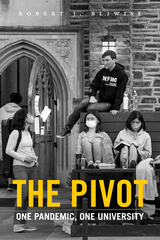 The Pivot: One Pandemic, One University
Robert J. Bliwise
Duke University Press, 2022 The COVID-19 pandemic presented higher education with an unprecedented challenge: How could institutions continue the basic work of teaching and research while maintaining safe environments for their faculty, staff, and students? In The Pivot, Robert J. Bliwise traces Duke University’s response to the pandemic to show how higher education broadly met that challenge head-on. Bliwise interviews people across the campus: from bus drivers and vaccine researchers to student activists, dining hall managers, and professors in areas from English to ecology. He explores the shift to teaching online and the reshaping of research programs; how surveillance testing and reconfiguring residence halls and dining sites helped limit the virus spread on campus; the efforts to promote student well-being and to sustain extracurricular programs; and what the surge in COVID-19 cases meant for the university health system. Bliwise also shows how broad cultural conversations surrounding the 2020 presidential election, climate change, free speech on campus, and systemic racism unfolded in this changed campus environment. Although the pandemic put remarkable pressures on the campus community, Bliwise demonstrates that it ultimately reaffirmed the importance of the campus experience in all its richness and complexity.
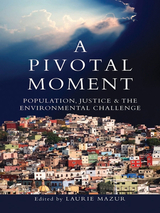 A Pivotal Moment: Population, Justice, and the Environmental Challenge
Laurie Mazur
Island Press, 2010 With contributions by leading demographers, environmentalists, and reproductive health advocates, A Pivotal Moment offers a new perspective on the complex connection between population dynamics and environmental quality. It presents the latest research on the relationship between population growth and climate change, ecosystem health, and other environmental issues. It surveys the new demographic landscape—in which population growth rates have fallen, but human numbers continue to increase. It looks back at the lessons of the last half century while looking forward to population policies that are sustainable and just. A Pivotal Moment embraces the concept of “population justice,” which holds that inequality is a root cause of both rapid population growth and environmental degradation. By addressing inequality—both gender and economic—we can reduce growth rates and build a sustainable future.
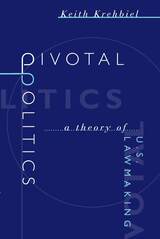 Pivotal Politics: A Theory of U.S. Lawmaking
Keith Krehbiel
University of Chicago Press, 1998 Politicians and pundits alike have complained that the divided governments of the last decades have led to legislative gridlock. Not so, argues Keith Krehbiel, who advances the provocative theory that divided government actually has little effect on legislative productivity. Gridlock is in fact the order of the day, occurring even when the same party controls the legislative and executive branches. Meticulously researched and anchored to real politics, Krehbiel argues that the pivotal vote on a piece of legislation is not the one that gives a bill a simple majority, but the vote that allows its supporters to override a possible presidential veto or to put a halt to a filibuster. This theory of pivots also explains why, when bills are passed, winning coalitions usually are bipartisan and supermajority sized. Offering an incisive account of when gridlock is overcome and showing that political parties are less important in legislative-executive politics than previously thought, Pivotal Politics remakes our understanding of American lawmaking.
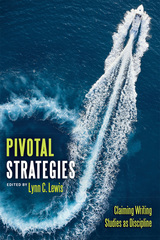 Pivotal Strategies: Claiming Writing Studies as Discipline
Lynn C. Lewis
Utah State University Press, 2024 Pivotal Strategies examines the rhetorical contexts and motivations that determine how and why people choose writing studies as a discipline, especially as the field begins to take more seriously an antiracist imperative that requires more conscious listening and promotion of work from scholars representing traditionally underrepresented voices.
Because undergraduate degrees in writing studies are relatively new, claiming the discipline has required reinvention and revision at personal and professional levels far different than any other discipline. Suspicions about the viability of the discipline linger in many departments and universities, as well as outside the academy, leading writing studies scholars to develop innovative strategies to deal with covertly hostile attitudes. Within the collection, contributors name explicit claiming strategies from the discipline’s beginnings to the contemporary moment, locating opportune spaces, negotiating identities and fostering resilience, and developing allegiances by foregrounding their embodiment as underrepresented members of academia through a commitment to social justice and equity.
Responding to current conversations on the worth of education with honest stories about the burdens and joys of becoming and being an academic, Pivotal Strategies features a spectrum of voices across racial, gender, class, and age categories. This collection not only makes the discipline more visible but also helps map the contemporary state of writing studies.
 Pivotal Voices, Era of Transition: Toward a 21st Century Poetics
Rigoberto González
University of Michigan Press, 2017 Pivotal Voices, Era of Transition gathers Rigoberto González’s most important essays and book reviews, many of which consider the work of emerging poets whose identities and political positions are transforming what readers expect from contemporary poetry. A number of these voices represent intersectional communities, such as queer writers of color like Natalie Díaz, Danez Smith, Ocean Vuong, and Eduardo C. Corral, and many writers, such as Carmen Giménez Smith and David Tomás Martínez, have deep connections to their Latino communities. Collectively, these writers are enriching American poetry to reflect a more diverse, panoramic, and socially conscious literary landscape. Also featured are essays on the poets’ literary ancestors—including Juan Felipe Herrera, Alurista, and Francisco X. Alarcón—and speeches that address the need to leverage poetry as agency.
This book fills a glaring gap in existing poetry scholarship by focusing exclusively on writers of color, and particularly on Latino poetry. González makes important observations about the relevance, urgency, and exquisite craft of the work coming from writers who represent marginalized communities. His insightful connections between the Latino, African American, Asian American, and Native American literatures persuasively position them as a collective movement critiquing, challenging, and reorienting the direction of American poetry with their nuanced and politicized verse. González’s inclusive vision covers a wide landscape of writers, opening literary doors for sexual and ethnic minorities.
 Pivoting during the Pandemic: Ideas for Serving Your Community Anytime, Anywhere
Kathleen Hughes and Jamie Santoro
American Library Association, 2020 When the pandemic suddenly forced many public libraries to close their doors or limit patron access, library staff redoubled their efforts to serve their communities in every way possible. Demonstrating their resilience by quickly pivoting to new modes of service, public libraries are continuing to offer innovative yet practical ways to connect patrons to the information and services they need and enjoy. Offering real-life examples of what it means to be a 24/7 library, this collection from the Public Library Association (PLA) and ALA Editions shares how several libraries transitioned to virtual and socially-distanced services. No matter your library’s current situation or outlook for the future, you’ll be inspired to adapt their ideas to suit the needs of your own organization. Among the initiatives and topics explored are - homebound delivery;
- citizen science programs;
- virtual reference advice;
- services to small businesses;
- remote readers' advisory and book chats;
- early literacy storytimes;
- health services outreach;
- tech guidance for patrons;
- wifi hotspot lending; and
- tips for social media and marketing.
Pixel
Krisztina Tóth
Seagull Books, 2018 A collection of stories from a Hungarian writer that treats relationships and love in contemporary life.
Like stars in the sky, pixels may seem like tiny, individual points. But, when viewed from a distance, they can create elaborate images. Each pixel contributes to this array, but no individual point can create the whole. The thirty stories that comprise Krisztina Tóth’s book similarly produce an interconnected web. While each tale of love, loss, and failed self-determination narrates the sensuousness of an individual’s life, together, the thirty stories tell a more complicated tale of relationships. Circumstances that appear unrelated may converge in harmony or heartbreak, just as the events that loom largest may fail to produce a longed-for outcome. These threads often determine the course of lives in unpredictable ways—sometimes comic, sometimes tragic, but rarely in the ways we originally anticipated.
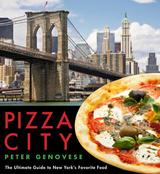 Pizza City: The Ultimate Guide to New York's Favorite Food
Genovese, Peter
Rutgers University Press, 2013 Pizza is a $35 billion a year business, and nowhere is it taken more seriously than New York City. Journalist Peter Genovese surveys the city’s pizza scene—the food, the business, the culture—by profiling pizza landmarks and personalities and rating pizzerias in all five boroughs.
In this funny, fascinating book, Genovese explores the bloggers who write about New York pizza, the obsessive city dwellers who collect and analyze the delivery boxes, Mark Bello’s school where students spend a day making pies from scratch, and Scott Wiener’s pizza bus tours.
Along the way, readers learn the history of legendary Totonno’s on Coney Island (Zagat’s number-one pizzeria for 2012), along with behind-the-scenes stories about John’s on Bleecker Street, Joe’s on Carmine, Lombardi’s, Paulie Gee’s, Motorino, and more than a dozen other favorite spots and their owners. Throughout these profiles, Genovese presents a brief history of how pizza came to the city in 1905 and developed into a major attraction in Little Italy, a neighborhood that became a training ground for many of the city’s best-loved pizzerias. Enjoyable facts and figures abound. Did you know that Americans put 250 million pounds of pepperoni on their pies every year? Or that Domino’s has more outlets per capita in Iceland than in any other country?
Beyond the stories and tidbits, Genovese provides detailed, borough-by-borough reviews of 250 pizzerias, from simple “slice shops” with scant atmosphere to gourmet pizzerias, including shops that use organic ingredients and experiment with new variations of crusts and toppings. Complemented by hundreds of current and never-before-seen archival photos, the book gives the humble slice its proper due and will leave readers overwhelmed by a sudden desire for New York pizza.
 Pizza City, USA: 101 Reasons Why Chicago Is America's Greatest Pizza Town
Steve Dolinsky, Foreword by Grant Achatz
Northwestern University Press, 2018 There are few things that Chicagoans feel more passionately about than pizza. Most have strong opinions about whether thin crust or deep-dish takes the crown, which ingredients are essential, and who makes the best pie in town. And in Chicago, there are as many destinations for pizza as there are individual preferences. Each of the city's seventy-seven neighborhoods is home to numerous go-to spots, featuring many styles and specialties. With so many pizzerias, it would seem impossible to determine the best of the best. Enter renowned Chicago-based food journalist Steve Dolinsky! In Pizza City, USA: 101 Reasons Why Chicago Is America's Greatest Pizza Town, Dolinsky embarks on a pizza quest, methodically testing more than a hundred different pizzas in Chicagoland. Zestfully written and thoroughly researched, Pizza City, USA is a hunger–inducing testament to Dolinsky's passion for great, unpretentious food. This user-friendly guide is smartly organized by location, and by the varieties served by the city's proud pizzaioli–including thin, artisan, Neapolitan, deep-dish and pan, stuffed, Sicilian, Roman, and Detroit-style, as well as by-the-slice. Pizza City also includes Dolinsky's "Top 5 Pizzas" in several categories, a glossary of Chicago pizza terms, and maps and photos to steer devoted foodies and newcomers alike.
A Place All Our Own: Lives Entwined in a Desert Garden
Mary Irish
University of Arizona Press, 2012 Intertwined Lives is the delightful tale of creating a very special garden in one of the most extreme climates in the inhabited world. Told with wit and obvious affection, it will appeal to anyone who enjoys the pleasures of gardening—and everyone who enjoys a well-told, true-life nature tale.
 Place and Identity in Classic Maya Narratives
Alexandre Tokovinine
Harvard University Press Understanding the ways in which human communities define themselves in relation to landscapes has been one of the crucial research questions in anthropology. Place and Identity in Classic Maya Narratives addresses this question in the context of the Classic Maya culture that thrived in the lowlands of the Yucatan peninsula and adjacent parts of Guatemala, Belize, and Western Honduras from 350 to 900 CE. The Classic Maya world of numerous polities, each with its own kings and gods, left a rich artistic and written legacy permeated by shared aesthetics and meaning. Alexandre Tokovinine explores the striking juxtaposition of similar cultural values and distinct political identities by looking at how identities were formed and maintained in relation to place, thus uncovering what Classic Maya landscapes were like in the words of the people who created and experienced them. By subsequently examining the ways in which members of Classic Maya political communities placed themselves on these landscapes, Tokovinine attempts to discern Classic Maya notions of place and community as well as the relationship between place and identity.
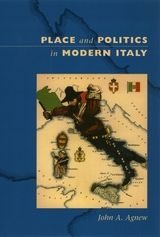 Place and Politics in Modern Italy
John A. Agnew
University of Chicago Press, 2002 How do the places where people live help structure and restructure their sociopolitical identities and interests? In this book, renowned political geographer John A. Agnew presents a theoretical model that addresses the relation of place to politics and applies it to a series of historicogeographical case studies set in modern Italy.
For Agnew, place is not just a static backdrop against which events occur, but a dynamic component of social, economic, and political processes. He shows, for instance, how the lack of a common "landscape ideal" or physical image of Italy delayed the development of a sense of nationhood among Italians after unification. And Agnew uses the post-1992 victory of the Northern League over the Christian Democrats in many parts of northern Italy to explore how parties are replaced geographically during periods of intense political change.
Providing a fresh new approach to studying the role of space and place in social change, Place and Politics in Modern Italy will interest geographers, political scientists, and social theorists.
 Place and Prosperity: How Cities Help Us to Connect and Innovate
William Fulton
Island Press, 2022 There are few more powerful questions than, “Where are you from” or “Where do you live?” People feel intensely connected to cities as places and to other people who feel that same connection. In order to understand place – and understand human settlements generally – it is important to understand that places are not created by accident. They are created in order to further a political or economic agenda. Better cities emerge when the people who shape them think more broadly and consciously about the places they are creating. In Place and Prosperity: How Cities Help Us to Connect and Innovate, urban planning expert William Fulton takes an engaging look at the process by which these decisions about places are made, how cities are engines of prosperity, and how place and prosperity are deeply intertwined. Fulton has been writing about cities over his forty-year career that includes working as a journalist, professor, mayor, planning director, and the director of an urban think tank in one of America’s great cities. Place and Prosperity is a curated collection of his writings with new and updated selections and framing material.
Though the essays in Place and Prosperity are in some ways personal, drawing on Fulton’s experience in learning and writing about cities, their primary purpose is to show how these two ideas – place and prosperity – lie at the heart of what a city is and, by extension, what our society is all about. Fulton shows how, over time, a successful place creates enduring economic assets that don’t go away and lay the groundwork for prosperity in the future. But for urbanism to succeed, all of us have to participate in making cities great places for everybody. Because cities, imposing though they may be as physical environments, don’t work without us.
Cities are resilient. They’ve been buffeted over the decades by White flight, decay, urban renewal, unequal investment, increasingly extreme weather events, and now the worst pandemic in a century, and they’re still going strong. Fulton shows that at their best, cities not only inspire and uplift us, but they make our daily life more convenient, more fulfilling – and more prosperous.
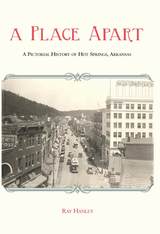 A Place Apart: A Pictorial History of Hot Springs, Arkansas
Ray Hanley
University of Arkansas Press, 2011 Hot Springs National Park was recognized nationally in 2010 when the U.S. Mint unveiled the design of the first quarter of 56 in a series called the America the Beautiful Quarters Program. In 1903 a Chicago magazine, The 400, told its upscale readers about Hot Springs, Arkansas. The article's author wrote, "I also perceive a Chicago-Hot Springs air line of macadamized highway, lined with meteoric automobiles ribboning off the 750 miles between the cities in a thousand or less minutes. The perspective is almost delirious." Such exuberant words are testimony to what Hot Springs, "a place apart," has been to the nation since the early European explorers found vapors rising from the thermal springs-47 of them from which a million gallons of 143-degree water flow each day. A Place Apart offers readers a balanced history in words and historic photographs of a unique locale in the state of Arkansas. The hot springs of what the Native Americans called Washita were on the national map of Pres. Thomas Jefferson when the United States acquired what would become Arkansas in the Louisiana Purchase of 1804. Congress created the Hot Springs Reservation in 1832-the first land that the federal government set aside for preservation-granting federal protection of the thermal waters, and renamed it Hot Springs National Park in 1921. This book provides a fascinating visual history of pioneers, wealthy barons, scoundrels, gamblers (including such frequent visitors as Al Capone and Lucky Luciano), colorful politicians, and the hundreds of thousands of people who came to the spa city in hopes of regaining their fleeting health. Also covered are such famous attractions as Oaklawn Park, a thoroughbred horse-racing track, and Bathhouse Row, with its eight turn-of-the-century historic buildings.
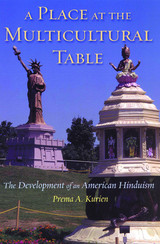 A Place at the Multicultural Table: The Development of an American Hinduism
Kurien, Prema
Rutgers University Press, 2007 Multiculturalism in the United States is commonly lauded as a positive social ideal celebrating the diversity of our nation. But, in reality, immigrants often feel pressured to create a singular formulation of their identity that does not reflect the diversity of cultures that exist in their homeland. Hindu Americans have faced this challenge over the last fifteen years, as the number of Indians that have immigrated to this country has more than doubled. In A Place at the Multicultural Table, Prema A. Kurien shows how various Hindu American organizations--religious, cultural, and political--are attempting to answer the puzzling questions of identity outside their homeland. Drawing on the experiences of both immigrant and American-born Hindu Americans, Kurien demonstrates how religious ideas and practices are being imported, exported, and reshaped in the process. The result of this transnational movement is an American Hinduism--an organized, politicized, and standardized version of that which is found in India. This first in-depth look at Hinduism in the United States and the Hindu Indian American community helps readers to understand the private devotions, practices, and beliefs of Hindu Indian Americans as well as their political mobilization and activism. It explains the differences between immigrant and American-born Hindu Americans, how both understand their religion and their identity, and it emphasizes the importance of the social and cultural context of the United States in influencing the development of an American Hinduism.
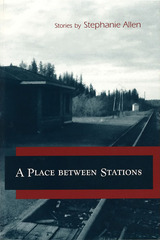 A Place between Stations: Stories
Stories by Stepanie Allen
University of Missouri Press, 2003 Selma detests my small considerations of strangers. When she catches me nodding at the panhandlers she ignores, or opening doors for women I don't know, she says nothing, but holds herself tall and aloof. She is doing it for the both of us. She is compensating for what she believes is a weakness in her husband that, even in this day and age, a black man still cannot afford. And she may be right. But at this stage of my life I feel not so much black or male, middle-aged or well-to-do or professional, as incomplete. I am son to my father, father to my boys, husband to my unhappy wife, but somehow more lost than found in the mix. A Place between Stations explores the lives of African American characters against the ever-present backdrop of race, but with the myriad complexities of individual minds and souls in the foreground. Two college students, bound by an intense but uneasy friendship, take an increasingly dangerous road trip through Florida. A widow faces her doubts about her long-dead husband by reliving an odd series of train rides she took along the Hudson River shoreline in the 1950s. An angry, fatherless girl roams a city at night, searching for an escape from the ambiguities of childhood. George Mattie, loner and reluctant guide, leads a misfit nineteenth-century circus caravan on an ill-fated journey through the northern Connecticut woods. In A Place between Stations, Stephanie Allen enlarges contemporary notions of what African American lives can be. Varied, to the point, and beautifully composed, this collection will appeal to all audiences.
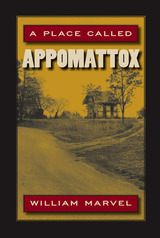 A Place Called Appomattox
William Marvel
Southern Illinois University Press, 2007
In A Place Called Appomattox, William Marvel turns his extensive Civil War scholarship toward Appomattox County, Virginia, and the village of Appomattox Court House, which became synonymous with the end of the Civil War when Robert E. Lee surrendered to Ulysses S. Grant there in 1865. Marvel presents a formidably researched and elegantly written analysis of the county from 1848 to 1877, using it as a microcosm of Southern attitudes, class issues, and shifting cultural mores that shaped the Civil War and its denouement.
With an eye toward correcting cultural myths and enriching the historical record, Marvel analyzes the rise and fall of the village and county from 1848 to 1877, detailing the domestic economic and social vicissitudes of the village, and setting the stage for the flight of Lee’s Army toward Appomattox and the climactic surrender that still resonates today.
Now available for the first time in paperback, A Place Called Appomattox reveals a new view of the Civil War, tackling some of the thorniest issues often overlooked by the nostalgic exaggerations and historical misconceptions that surround Lee’s surrender.
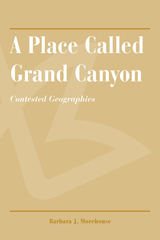 A Place Called Grand Canyon: Contested Geographies
Barbara J. Morehouse
University of Arizona Press, 1996 For most people, "Grand Canyon" signifies that place of scenic wonder identified with Grand Canyon National Park. Beyond the boundaries of the park, however, extends the greater Grand Canyon, a region that includes five Indian reservations, numerous human settlements, and lands managed by three federal agencies and by the states of Arizona and Utah. Many people have sought to etch their values, economic practices, and physical presence on this vast expanse. Ultimately, all have had to come to terms with the limits imposed by the physical environment and the constraints posed by others seeking to carve out a place for themselves. A Place Called Grand Canyon is an unprecedented survey of how the lands and resources of the greater Grand Canyon have come to be divided in many different ways and for many different reasons. It chronicles the ebb and flow of power --changes in who controls the land and gives it meaning. The book begins with an exploration of the geographies of the native peoples, then examines how the westward expansion of the United States affected their lives and lands. It traces the century of contest and negotiation over the land and its resources that began in the 1880s and concludes with an assessment of contemporary efforts to redefine the region. Along the way, it explores how the spaces of the greater Grand Canyon area came to be defined and used, and how those spaces in turn influenced later contests among the ranchers, loggers, miners, recreationists, preservationists, Native Americans, and others claiming a piece--or all--of the area for their own ends. The story exposes how dynamic the geographical boundaries of the region really are, regardless of the indelibility of the ink with which they were drawn. With visitation to Grand Canyon National Park approaching five million people per year, pressures on resources are intensifying. When the greater Grand Canyon area is considered, environmental management is further complicated by the often-conflicting demands of business, recreation, ecological preservation, and human settlement. Morehouse invites us to look beyond boundaries drawn on maps to discover what Grand Canyon means to different people, and to think more deeply about what living in harmony with the land really entails. Her insights will be of interest to geographers and other social scientists--including anthropologists and environmental historians--and to all who seek a counterpoint to conventional natural histories of the region.
A Place Called Milagro de la Paz
Manlio Argueta, translated from the Spanish by Michael B. Miller
Northwestern University Press, 2000 This remarkable novel continues the saga of life among the common people in El Salvador begun with One Day of Life. A Place Called Milagro de la Paz tells the story of the courage and strength of two women, a single mother and her daughter, who have to overcome the trauma of the murder of the mother's older daughter and survive in an atmosphere of bitter poverty. The book is filled, however, with magical, lyric moments of love and hope, especially surrounding the figure of a strange young girl with butterflies in her hair who appears suddenly and adopts the family. The tiny family group bravely preserves traditional values in spite of fear and repression.
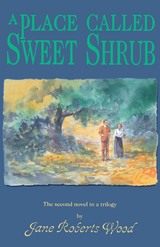 A Place Called Sweet Shrub: The Second Novel in a Trilogy
Jane Roberts Wood
University of North Texas Press, 2000 Together for the first time as a classic Texas trilogy:
The Train to Estelline
A Place Called Sweet Shrub
Dance a Little Longer
The Lucinda "Lucy" Richards trilogy, spanning the years from 1911 to the 1930s, has everything good books should have: a variety of landscapes, characters of all ages and social classes, an overall tenderness that never lapses into sentimentality, and a sense of the comic amidst the tragic. Lucy is feisty, funny, and completely open-armed about life. Josh passionately confronts danger and greed and prejudice with courage and humor and, sometimes, with bare fists. Even the minor characters are so rife with color that you first turn the pages quickly to see what they will do next and, then, you turn them slowly so as to savor each page of this remarkable trilogy.
A Place Called Sweet Shrub :
In 1915 it has been three years since Lucy Richards left her teaching post in West Texas and returned home where she is busy being indispensable to her eccentric mother, keeping her Aunt Catherine comfortable, and taking on many of the chores her very pregnant sister no longer feels up to. She decides to choose a husband from the local beaus, but none of them stand a chance when handsome, irreverent Josh Arnold comes to town. The newlyweds move to the sleepy hamlet of Sweet Shrub, Arkansas, where they are soon caught up in the lives of their neighbors and discover that the surface tranquillity of the town hides simmering tensions and unrest that will inevitably result in tragedy.
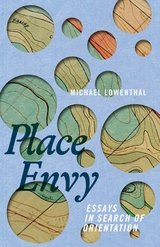 Place Envy: Essays in Search of Orientation
Michael Lowenthal
Ohio State University Press, 2026 Growing up in places where his family had no past, and met mostly by silence from his Holocaust-refugee grandparents, Michael Lowenthal longed to be from somewhere. Then he realized he was gay and felt displaced from his own displaced family. Place Envy—his first book of essays after five acclaimed books of fiction—chronicles his quest for orientation in the world: as an agnostic Jew, as a queer traveler and lover, and as a writer who can tell or twist the truth. Yearning for a queer lineage, he obsesses about an uncle who perished at Bergen-Belsen but then finds, in his grandmother’s German hometown, a more surprising legacy. He lives with a Pennsylvania Amish family; accompanies blind gay men on a Mexican cruise; plays jazz with Sun Ra, the Afrofuturist who claimed to hail from Saturn; and pursues a clarifying love affair in Brazil. Collectively, these essays recount Lowenthal’s many journeys of dislocation and relocation: to foreign countries and subcultures and to the riskiest shores of family and self.
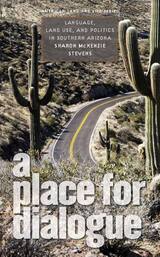 A Place for Dialogue: Language, Land Use, and Politics in Southern Arizona
Sharon McKenzie Stevens
University of Iowa Press, 2007 In A Place for Dialogue, Sharon McKenzie Stevens views the contradictions and collaborations involved in the management of public land in southern Arizona—and by extension the entire arid West—through the lens of political rhetoric. Revealing the socioecological relationships among cattlemen and environmentalists as well as developers and recreationists, she analyzes the ways that language shapes landscape by shaping decisions about land use. Stevens focuses on the collaborative Sonoran Desert Conservation Plan initiated by Pima County, Arizona, the ubiquitous use of scientific argument to defend contradictory practices, and the construction and negotiation of rancher/environmentalist identities to illuminate both literally and metaphorically the dynamics of land use politics. Drawing specifically upon extensive interviews with a diverse array of agents on all sides of the debate—ranchers, environmentalists, scientists, land managers, government officials—on historical narratives, and on her own conflicting experiences as someone who grew up with those who work the western lands, she demonstrates that it is possible to use differences to solve, rather than to aggravate, the entrenched problems that bridge land and language. By integrating her richly textured case study of a fragile region with rhetorical approaches to narrative, science-based argument, and collective identities, Stevens makes a significant contribution to the fields of rhetoric, land management, and cultural studies.
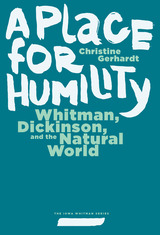 A Place for Humility: Whitman, Dickinson, and the Natural World
Christine Gerhardt
University of Iowa Press, 2014 Emily Dickinson and Walt Whitman are widely acknowledged as two of America’s foremost nature poets, primarily due to their explorations of natural phenomena as evocative symbols for cultural developments, individual experiences, and poetry itself. Yet for all their metaphorical suggestiveness, Dickinson’s and Whitman’s poems about the natural world neither preclude nor erase nature’s relevance as an actual living environment. In their respective poetic projects, the earth matters both figuratively, as a realm of the imagination, and also as the physical ground that is profoundly affected by human action. This double perspective, and the ways in which it intersects with their formal innovations, points beyond their traditional status as curiously disparate icons of American nature poetry. That both of them not only approach nature as an important subject in its own right, but also address human-nature relationships in ethical terms, invests their work with important environmental overtones.
Dickinson and Whitman developed their environmentally suggestive poetics at roughly the same historical moment, at a time when a major shift was occurring in American culture’s view and understanding of the natural world. Just as they were achieving poetic maturity, the dominant view of wilderness was beginning to shift from obstacle or exploitable resource to an endangered treasure in need of conservation and preservation.
A Place for Humility examines Dickinson’s and Whitman’s poetry in conjunction with this important change in American environmental perception, exploring the links between their poetic projects within the context of developing nineteenth-century environmental thought. Christine Gerhardt argues that each author's poetry participates in this shift in different but related ways, and that their involvement with their culture’s growing environmental sensibilities constitutes an important connection between their disparate poetic projects. There may be few direct links between Dickinson’s “letter to the World” and Whitman’s “language experiment,” but via a web of environmentally-oriented discourses, their poetry engages in a cultural conversation about the natural world and the possibilities and limitations of writing about it—a conversation in which their thematic and formal choices meet on a surprising number of levels.
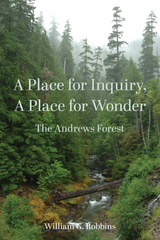 A Place for Inquiry, A Place for Wonder: The Andrews Forest
William Robbins
Oregon State University Press, 2020 The H.J. Andrews Experimental Forest is a slice of classic Oregon: due east of Eugene in the Cascade Mountains, it comprises 15,800 acres of the Lookout Creek watershed. The landscape is steep, with hills and deep valleys and cold, fast-running streams. The densely forested landscape includes cedar, hemlock, and moss-draped Douglas fir trees. One of eighty-one USDA experimental forests, the Andrews is administered cooperatively by the US Forest Service, OSU, and the Willamette National Forest. While many Oregonians may think of the Andrews simply as a good place to hike, research on the forest has been internationally acclaimed, has influenced Forest management, and contributed to our understanding of healthy forests.
In A Place for Inquiry, A Place for Wonder, historian William Robbins turns his attention to the long-overlooked Andrews Forest and argues for its importance to environmental science and policy. From its founding in 1948, the experimental forest has been the site of wide-ranging research. Beginning with postwar studies on the conversion of old-growth timber to fast-growing young stands, research at the Andrews shifted in the next few decades to long-term ecosystem investigations that focus on climate, streamflow, water quality, vegetation succession, biogeochemical cycling, and effects of forest management. The Andrews has thus been at the center of a dramatic shift in federal timber practices from industrial, intensive forest management policies to strategies emphasizing biodiversity and healthy ecosystems.
 Place for Us: Essay on the Broadway Musical
D. A. Miller
Harvard University Press, 1998 It used to be a secret that, in its postwar heyday, the Broadway musical recruited a massive underground following of gay men. But though this once silent social fact currently spawns jokes that every sitcom viewer is presumed to be in on, it has not necessarily become better understood.
In Place for Us, D. A. Miller probes what all the jokes laugh off: the embarrassingly mutual affinity between a "general" cultural form and the despised "minority" that was in fact that form's implicit audience. In a style that is in turn novelistic, memorial, autobiographical, and critical, the author restores to their historical density the main modes of reception that so many gay men developed to answer the musical's call: the early private communion with original cast albums, the later camping of show tunes in piano bars, the still later reformatting of these same songs at the post-Stonewall disco. In addition, through an extended reading of Gypsy, Miller specifies the nature of the call itself, which he locates in the postwar musical's most basic conventions: the contradictory relation between the show and the book, the mimetic tendency of the musical number, the centrality of the female star. If the postwar musical may be called a "gay" genre, Miller demonstrates, this is because its regular but unpublicized work has been to indulge men in the spectacular thrills of a femininity become their own.
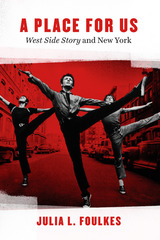 A Place for Us: “West Side Story” and New York
Julia L. Foulkes
University of Chicago Press, 2016 From its Broadway debut to the Oscar-winning film to countless amateur productions, West Side Story is nothing less than an American touchstone—an updating of Shakespeare vividly realized in a rapidly changing postwar New York.
That vision of postwar New York is at the heart of Julia L. Foulkes’s A Place for Us. A lifelong fan of the show, Foulkes became interested in its history when she made an unexpected discovery: scenes for the iconic film version were shot on the demolition site destined to become part of the Lincoln Center redevelopment area—a crowning jewel of postwar urban renewal. Foulkes interweaves the story of the creation of the musical and film with the remaking of the Upper West Side and the larger tale of New York’s postwar aspirations. Making unprecedented use of director and choreographer Jerome Robbins’s revelatory papers, she shows the crucial role played by the political commitments of Robbins and his fellow gay, Jewish collaborators, Leonard Bernstein and Arthur Laurents. Their determination to evoke life in New York as it was actually lived helped give West Side Story its unshakable sense of place even as it put forward a vision of a new, vigorous, determinedly multicultural American city.
Beautifully written and full of surprises for even the most dedicated West Side Story fan, A Place for Us is a revelatory new exploration of an American classic.
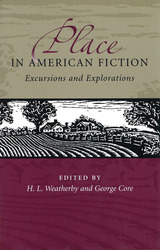 Place in American Fiction: Excursions and Explorations
Edited by H.L. Weatherby & George Core
University of Missouri Press, 2004
This collection of essays devoted to the centrality of place in the short stories and novels of some of the twentieth century’s most famous American writers was conceived as a way to honor the life and career of Walter Sullivan, an author for whom place was central both in his fiction and in his critical writing. The works explored in this volume range from the Middle West realism of Fitzgerald and Powers to the wilderness vision of Faulkner and the historical and political fiction of Warren.
In “Imagination in Place” Wendell Berry describes how place in the context of local geography, local culture, and agriculture influenced his writings. Thomas Bontly’s “Wallace Stegner’s Lyrical Realism”explains the importance not only of a person’s securing his or her place but of an author’s doing so as well.
Eudora Welty is the pivotal figure in this book, and her "Place in Fiction" is considered in this collection time and again by many of the contributors. Both Lewis Simpson and Denis Donoghue choose her story “No Place for You, My Love” to demonstrate place and its effect on the outside world. Donoghue stresses Welty’s imagery emphasizing the occasional and emblematic nature of the local image. In following the logic of his reflections he decides that Welty’s focus on place constitutes a theory of pastoral.
Lewis Simpson also stresses the importance of place as the essential element in the same story and discusses the mysterious relationship between the two unnamed principals, but Simpson goes on to show the importance of time in fiction, especially the novel; and he reveals the linkage that connects time to memory, specifically to what he deems “the culture of memory” in Faulkner and Welty.
Place, as Eudora Welty declares, is “where [the writer] has his roots, place is where he stands; in his experience out of which he writes, it provides the base of reference; in his work, the point of view.” “Fiction,” she continues, “depends for its life on place.” These essays, whose authors include Joseph Blotner, Scott Donaldson, Charles East, George Garrett, Louis D. Rubin, Jr., and Elizabeth Spencer, prove the truth of that dictum.
 A Place in Common: Rethinking the History of Early Detroit
Karen L. Marrero
Michigan State University Press, 2025 At the turn of the eighteenth century, Indigenous nations designated Detroit as a “common bowl” and a crucial nexus where they shared resources, made compromises, and coexisted. As the century unfolded, Detroit continued as a polyglot community in the face of expanding Euro-American settlement. The region became a highly charged space where the rituals of political negotiation grew in importance alongside a constant threat of violence. British political and economic systems continued to operate long after the end of the American Revolution, creating a shared cultural border at the end of the eighteenth century that would endure even as the American Empire reestablished rule on the north side of the river. Both Anishinaabe and Wyandot people set aside land for future occupation of their people, re-creating another transnational space in the region. A hundred years later, issues of race, economic development, political partisanship, and overlapping national claims continued to resonate as the city commemorated and mythologized its origins. This book considers how larger watershed occasions impacted the Detroit region and how, in turn, the unique particularities of local custom impacted regional and national trade and politics and the very nature of how the city continues to view its past.
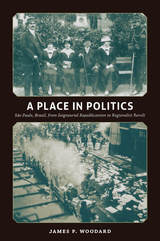 A Place in Politics: São Paulo, Brazil, from Seigneurial Republicanism to Regionalist Revolt
James P. Woodard
Duke University Press, 2009 A Place in Politics is a thorough reinterpretation of the politics and political culture of the Brazilian state of São Paulo between the 1890s and the 1930s. The world’s foremost coffee-producing region from the outset of this period and home to more than six million people by 1930, São Paulo was an economic and demographic giant. In an era marked by political conflict and dramatic social and cultural change in Brazil, nowhere were the conflicts as intense or changes more dramatic than in São Paulo. The southeastern state was the site of the country’s most important political developments, from the contested presidential campaign of 1909–10 to the massive military revolt of 1924. Drawing on a wide array of source materials, James P. Woodard analyzes these events and the republican political culture that informed them. Woodard’s fine-grained political history proceeds chronologically from the final years of the nineteenth century, when São Paulo’s leaders enjoyed political preeminence within the federal system codified by the Constitution of 1891, through the mass mobilization of 1931–32, in which São Paulo’s people marched, rioted, and eventually took up arms against the national government in what was to be Brazil’s last great regionalist revolt. In taking to the streets in the name of their state, constitutionalism, and the “civilization” that they identified with both, the people of São Paulo were at once expressing their allegiance to elements of a regionally distinct political culture and converging on a broader, more participatory public sphere that had arisen amid the political conflicts of the preceding decades.
 A Place in Public: Women’s Rights in Meiji Japan
Marnie S. Anderson
Harvard University Press, 2010 This book addresses how gender became a defining category in the political and social modernization of Japan. During the early decades of the Meiji period (1868–1912), the Japanese encountered an idea with great currency in the West: that the social position of women reflected a country’s level of civilization. Although elites initiated dialogue out of concern for their country’s reputation internationally, the conversation soon moved to a new public sphere where individuals engaged in a wide-ranging debate about women’s roles and rights.
By examining these debates throughout the 1870s and 1880s, Marnie S. Anderson argues that shifts in the gender system led to contradictory consequences for women. On the one hand, as gender displaced status as the primary system of social and legal classification, women gained access to the language of rights and the chance to represent themselves in public and play a limited political role; on the other, the modern Japanese state permitted women’s political participation only as an expression of their “citizenship through the household” and codified their formal exclusion from the political process through a series of laws enacted in 1890. This book shows how “a woman’s place” in late-nineteenth-century Japan was characterized by contradictions and unexpected consequences, by new opportunities and new constraints.
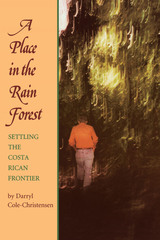 A Place in the Rain Forest: Settling the Costa Rican Frontier
By Darryl Cole-Christensen
University of Texas Press, 1997 In the 1950s, Darryl Cole-Christensen and his family were among the first settlers of the Coto Brus, an almost impenetrable, mountainous rain forest region of southeastern Costa Rica. In this evocative book, he captures the elemental struggles and rewards of settling a new frontier—an experience forever closed to most people in Western, urbanized society. With the perspective of more than forty years' residence in the Coto Brus, Cole-Christensen ably describes both the settlers' dreams of bringing civilization and progress to the rain forest and the sweeping and irreversible changes they caused throughout the ecosystem as they cut the rain forest down. Writing neither to apologize for nor to defend their actions, he instead illuminates the personal and subjective factors that cause people to risk danger and hardship for the uncertain rewards of settling a frontier. In his own words, Cole-Christensen says, "This is a book for the scientist who wants to recapture a sense of an incalculable world departed, for the student who asks: How is it that our forebears changed and restructured this land? For the adventurer who dreams of the expanse of frontiers, for every person who, having passed once through the darkening forest along a path in twilit stillness looks back to find that a blanket of murmurs remains."
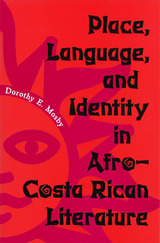 Place, Language, and Identity in Afro-Costa Rican Literature
Dorothy E. Mosby
University of Missouri Press, 2003 In Place, Language, and Identity in Afro-Costa Rican Literature, Dorothy E. Mosby investigates contemporary black writing from Costa Rica and argues that it reveals the story of a people formed by multiple migrations and cultural transformations. Afro–Costa Rican writers from different historical periods express their relation to place, language, and identity as a “process,” a transformation partly due to sociohistorical circumstances and partly in reaction against the national myths of whiteness in the dominant Hispanic culture. Black writers in Costa Rica have used creative writing as a means to express this change in self-identity—as West Indians, as Costa Ricans, as “Latinos,” and as a contentious union of all these cultural identifications—as well as to combat myths and extrinsic definitions of their culture. Mosby examines the transformation of identity in works by black writers in Costa Rica of Afro–West Indian descent as particular national identities find common ground in the expression of an Afro–Costa Rican identity. These writers include Alderman Johnson Roden, Dolores Joseph, Eulalia Bernard, Quince Duncan, Shirley Campbell, and Delia McDonald, all of whose works are analyzed for their use of language and their reflections on place and exile. Their works are also read as articulations of generational shifts in the assertion of cultural and national identity. Mosby convincingly argues that Afro–Costa Rican literature emerged out of the African-derived oral traditions of Anglo–West Indian literature. She then goes on to show how second-generation writers included this literary tradition in their work, while fourth-generation poets refer to it only through occasional allusions. With the current growth of interest in Afro-Hispanic and Afro-Latin American cultural and literary studies, this book will be essential for courses in Latin American and Caribbean literature, comparative studies, Diaspora studies, history, cultural studies, and the literature of migration.
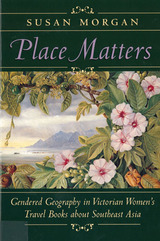 Place Matters
Morgan, Susan
Rutgers University Press, 1996 "Morgan has written an important and original work that presents a well-substantiated challenge to many recent studies of 'colonial discourse'."--Nancy L. Paxton,
Susan Morgan's study of materials and regions, previously neglected in contemporary postcolonial studies, begins with the transforming premise that "place matters." Concepts derived from writings about one area of the world cannot simply be transposed to another area, in some sort of global theoretical move. Moreover, place in the discourse of Victorian imperialism is a matter of gendered as well as geographic terms. Taking up works by Anna Forbes and Marianne North on the Malay Archipelago, by Margaret Brooke and Harriette McDougall on Sarawak, by Isabella Bird and Emily Innes on British Malaya, by Anna Leonowens on Siam, Morgan also makes extensive use of theorists whose work on imperialism in Southeast Asia is unfamiliar to most American academics.
This vivid examination of a different region and different writings emphasizes that in Victorian literature there was no monolithic imperialist location, authorial or geographic. The very notion of a ‘colony’ or an ‘imperial presence’ in Southeast Asia is problematic. Morgan is concerned with marking the intersections of particular Victorian imperial histories and constructions of subjectivity. She argues that specific places in Southeast Asia have distinctive, and differing, masculine imperial rhetorics. It is within these specific rhetorical contexts that women’s writings, including their moments of critique, can be read.
Place Me With Your Son: Ignatian Spirituality in Everyday Life, Third Edition
James W. Skehan, SJ
Georgetown University Press, 1991 Arranged as a twenty-four week retreat in four phases, this edition is a guide to The Spiritual Exercises of St. Ignatius Loyola. It incorporates "centering" exercises of awareness patterned on Eastern or Buddhist meditation practices and devotional exercises similar to or drawn from those found in Sadhana, by the late Anthony de Mello, SJ. Poems and prayers by Rainer Maria Rilke, Rabindranath Tagore, T.S. Eliot, Ezra Pound, Edith Sitwell, and others are also included, as well as materials from Teilhard de Chardin's Divine Milieu.
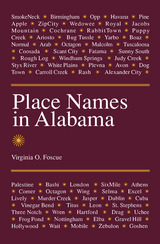 Place Names in Alabama
Virginia O. Foscue
University of Alabama Press, 1988 The first systematic attempt to account for all the names of the counties, cities, town, water courses, bodies of water, and mountains that appear on readily available maps of Alabama In dictionary format, this volume contains some 2,610 place names, selected according to strict criteria as outlined in the introductions, from more than 52,000 available for the state of Alabama. Included in each entry is a description of the geographical feature, its exact location, the etymology of each name the feature has carried through the years, the historical circumstances and dates of each naming, and the sources for these facts, which include both written documents and interviews with local informants. “…provides fascinating insights, into not only the origin of the name but also many of the people who settled the state.” —Joab L. Thomas, President of The University of Alabama “An invaluable resource for television news and talk shows…not to mention a treasure for trivia buffs!” —Tom York, WBRC-6
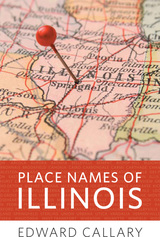 Place Names of Illinois
Edward Callary
University of Illinois Press, 2007 This extensive guide shows how the history and culture of Illinois are embedded in the names of its towns, cities, and other geographical features. Edward Callary unearths the origins of names of nearly three thousand Illinois communities and the circumstances surrounding their naming and renaming. Organized alphabetically, the entries are concise, engaging, and full of fascinating detail revealing the rich ethnic history of the state, the impact of industrialization and the coming of the railroads, and insight into local politics and personalities. Many entries also provide information on local pronunciation, the name’s etymology, and the community’s location, all set in historical and cultural context. A general introduction locates Illinois place names in the context of general patterns of place naming in the United States. An extremely useful reference for scholars of American history, geography, language, and culture, Place Names of Illinois also offers intriguing browsing material for the inquisitive reader and the curious traveler.
 Place Names of Southwest Peloponnesus: Register and Indexes
Demetrius J. Georgacas and William A. McDonald
University of Minnesota Press, 1969 Place Names of Southwest Peloponnesus was first published in 1969. Minnesota Archive Editions uses digital technology to make long-unavailable books once again accessible, and are published unaltered from the original University of Minnesota Press editions. This work contains listings, in Greek, of nearly 10,000 place names collected in approximately 300 settlements of regions in Peloponnesus, the southern peninsula of Greece. In their introduction the authors point out that the present-day toponyms reflect historical and linguistic developments through the ages and thus provide important source material for scholarly studies. Inhabitants of the region whose language was ancient Greek, Koine Greek, Byzantine Greek, South Slavic, Frankish, Venetian, Albanian, Turkish, or Neo-Greek have all left discernible traces in the local place names. The book will be useful not only to specialists in onomastics and linguistics but also to historians, archaeologists, geographers, and other researchers in Greek and comparative studies.
Place Names of Wisconsin
Edward Callary
University of Wisconsin Press, 2016 The colorful history and culture of Wisconsin are reflected in its place names, from those created by Native Americans, French explorers, and diverse European settlers to more recent appellations commemorating political figures, postmasters, and landowners. Organized alphabetically for easy reference, Edward Callary’s concise entries reveal the stories behind such intriguing names as Fussville, Misha Mokwa, Couderay, and Thiry Daems. Fun to read and packed with information, Place Names of Wisconsin is a must-have for anyone interested in Wisconsin and Midwest history, language, geography, and culture—or anyone who simply wonders “why did they name it that?”
A Place of Belonging: Five Founding Women of Fairbanks, Alaska
Phyllis Demuth Movius
University of Alaska Press, 2009 Alaska has always attracted people from varied backgrounds. In A Place of Belonging, Phyllis Movius introduces us to five women who settled in Fairbanks between 1903 and 1923 and who typify the disparate population that has long enriched Alaska. The women’s daily lives and personal stories are woven together in these biographical portraits, drawn from the women’s letters, memoirs, personal papers, club records, their own oral histories and published writings. Enriched by many never-before-published historical photos, Movius’s research gives us a unique inroad into life on the frontier.
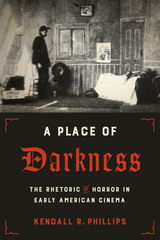 A Place of Darkness: The Rhetoric of Horror in Early American Cinema
By Kendall R. Phillips
University of Texas Press, 2018 Horror is one of the most enduringly popular genres in cinema. The term “horror film” was coined in 1931 between the premiere of Dracula and the release of Frankenstein, but monsters, ghosts, demons, and supernatural and horrific themes have been popular with American audiences since the emergence of novelty kinematographic attractions in the late 1890s. A Place of Darkness illuminates the prehistory of the horror genre by tracing the way horrific elements and stories were portrayed in films prior to the introduction of the term “horror film.” Using a rhetorical approach that examines not only early films but also the promotional materials for them and critical responses to them, Kendall R. Phillips argues that the portrayal of horrific elements was enmeshed in broader social tensions around the emergence of American identity and, in turn, American cinema. He shows how early cinema linked monsters, ghosts, witches, and magicians with Old World superstitions and beliefs, in contrast to an American way of thinking that was pragmatic, reasonable, scientific, and progressive. Throughout the teens and twenties, Phillips finds, supernatural elements were almost always explained away as some hysterical mistake, humorous prank, or nefarious plot. The Great Depression of the 1930s, however, constituted a substantial upheaval in the system of American certainty and opened a space for the reemergence of Old World gothic within American popular discourse in the form of the horror genre, which has terrified and thrilled fans ever since.
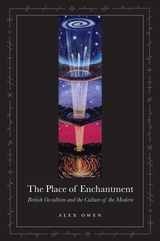 The Place of Enchantment: British Occultism and the Culture of the Modern
Alex Owen
University of Chicago Press, 2004 By the end of the nineteenth century, Victorians were seeking rational explanations for the world in which they lived. The radical ideas of Charles Darwin had shaken traditional religious beliefs. Sigmund Freud was developing his innovative models of the conscious and unconscious mind. And anthropologist James George Frazer was subjecting magic, myth, and ritual to systematic inquiry. Why, then, in this quintessentially modern moment, did late-Victorian and Edwardian men and women become absorbed by metaphysical quests, heterodox spiritual encounters, and occult experimentation? In answering this question for the first time, The Place of Enchantment breaks new ground in its consideration of the role of occultism in British culture prior to World War I. Rescuing occultism from its status as an "irrational indulgence" and situating it at the center of British intellectual life, Owen argues that an involvement with the occult was a leitmotif of the intellectual avant-garde. Carefully placing a serious engagement with esotericism squarely alongside revolutionary understandings of rationality and consciousness, Owen demonstrates how a newly psychologized magic operated in conjunction with the developing patterns of modern life. She details such fascinating examples of occult practice as the sex magic of Aleister Crowley, the pharmacological experimentation of W. B. Yeats, and complex forms of astral clairvoyance as taught in secret and hierarchical magical societies like the Hermetic Order of the Golden Dawn. Through a remarkable blend of theoretical discussion and intellectual history, Owen has produced a work that moves far beyond a consideration of occultists and their world. Bearing directly on our understanding of modernity, her conclusions will force us to rethink the place of the irrational in modern culture. “An intelligent, well-argued and richly detailed work of cultural history that offers a substantial contribution to our understanding of Britain.”—Nick Freeman, Washington Times
 The Place of Families: Fostering Capacity, Equality, and Responsibility
Linda C. McClain
Harvard University Press, 2006 In this bold new book, Linda McClain offers a liberal and feminist theory of the relationships between family life and politics--a topic dominated by conservative thinkers. McClain agrees that stable family lives are vital to forming persons into capable, responsible, self-governing citizens. But what are the public values at stake when we think about families, and what sorts of families should government recognize and promote?
Arguing that family life helps create the virtues and character required for citizenship, McClain shows that the connection between family self-government and democratic self-government does not require the deep-laid gender inequality that has historically accompanied it. Examining controversial issues in family law and policy--among them, the governmental promotion of heterosexual marriage and the denial of marriage to same-sex couples, the regulation of family life through welfare policy, and constitutional rights to reproductive freedom--McClain argues for a political theory of the family that embraces equality, defends rights as facilitating responsibility, and supports families in ways that respect men's and women's capacities for self-government.
The Place of Law
Austin Sarat, Lawrence Douglas, and Martha Merrill Umphrey, Editors
University of Michigan Press, 2003 It has long been standard practice in legal studies to identify the place of law within the social order. And yet, as The Place of Law suggests, the meaning of the concept of "the place of law" is not self-evident.
This book helps us see how the law defines territory and attempts to keep things in place; it shows how law can be, and is, used to create particular kinds of places -- differentiating, for example, individual property from public land. And it looks at place as a metaphor that organizes the way we see the world. This important new book urges us to ask about the usefulness of metaphors of place in the design of legal regulation.
 The Place of Narrative: Mural Decoration in Italian Churches, 431-1600
Marilyn Aronberg Lavin
University of Chicago Press, 1990 Looking at more than two hundred Italian medieval and Renaissance mural cycles, Lavin examines—with the aid of computer technology—the "rearranged" chronologies of familiar religious stories found therein.
"Like many masterpieces, Lavin's book builds upon a simple idea . . . it is possible to do a computer analysis of . . . visual narratives. . . . This is the first computer-based study of the visual arts of which I am aware that illustrates how those technologies can utterly transform the study of old master art. An extremely important book, one likely to become the most influential recent study of art of this period, The Place of Narrative is also a beautiful artifact."—David Carrier, Leonardo
"Covering over a millennium and dealing with the whole of Italy, Lavin makes pioneering use of new methodology employing a computer database . . . [and] novel terminology to describe the disposition of scenes of church and chapel walls. . . . We should recognize this as a book of high seriousness which reaches out into new areas and which will fruitfully stimulate much thought on a neglected subject of very considerable significance."—Julian Gardner, Burlington Magazine
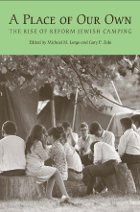 A Place of Our Own: The Rise of Reform Jewish Camping
Edited by Michael M. Lorge and Gary P. Zola
University of Alabama Press, 2006 The history of educational summer camps in American Reform Judaism
The history of educational summer camps in American Reform Judaism. Reform Judaism is not the only religious community in America to make the summer camp experience a vital part of a faith community's effort to impart its values and beliefs to its adolescents, but perhaps no group relied more on summer camp as an adjunct to home and community for this purpose. Summer camp became an important part of Reform group identity, a bulwark against the attraction of assimilation into the greater society and mere nominal Judaism.
These essays, which commemorate the fiftieth anniversary of the founding of the first Reform Jewish educational camp in the United States (Olin-Sang-Ruby Union Institute [OSRUI], in Oconomowoc, Wisconsin) cover a wide range of topics related to both the Reform Judaism movement and the development of the Reform Jewish camping system in the United States. Donald M. Splansky’s chapter on “Prayer at Reform Jewish Camps” documents changes in prayer services that took place both at OSRUI and in the Reform movement in general; Michael Zeldin’s “Making the Magic in Reform Jewish Summer Camps” describes the educational philosophies employed at many camps and analyzes their effectiveness; and Jonathan D. Sarna’s “The Crucial Decade in Jewish
A Place of Placelessness: Hekeng People's Heritage
Renyu Wang
Leiden University Press, 2017 Tulou, the traditional fortified multifamily dwellings prevalent in southern Fujian, China, are the focus of this three-pronged biography of environments in the Hekeng River Valley. This book explores every aspect of the historical settlement environments surrounding a tulou, incorporating oral histories and interviews to create a complete picture of the cultural, architectural, agricultural, and economic influences that build up these lineage societies. Highlighted also are the tensions between political systems and families in keeping these heritage sites alive.
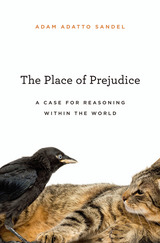 The Place of Prejudice: A Case for Reasoning within the World
Adam Adatto Sandel
Harvard University Press, 2014 Today we associate prejudice with ignorance and bigotry and consider it a source of injustice. So how can prejudice have a legitimate place in moral and political judgment? In this ambitious work, Adam Sandel shows that prejudice, properly understood, is not an unfortunate obstacle to clear thinking but an essential aspect of it. The aspiration to reason without preconceptions, he argues, is misguided.
Ranging across philosophy from Aristotle to Heidegger and Gadamer, Sandel demonstrates that we inherit our "prejudice against prejudice" from the Enlightenment. By detaching reason from habit and common opinion, thinkers such as Bacon, Descartes, and Kant invented prejudice--as we understand it today--as an obstacle to freedom and a failure to think for oneself.
The Place of Prejudice presents a powerful challenge to this picture. The attempt to purge understanding of culture and history leads not to truth, Sandel warns, but to shallowness and confusion. A purely detached notion of reason deprives judgment of all perspective, disparages political rhetoric as mere pandering, and denies us the background knowledge we need to interpret literature, law, and the past. In a clear, eloquent voice, Sandel presents instead a compelling case for reasoning within the world.
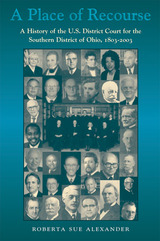 A Place of Recourse: A History of the U.S. District Court for the Southern District of Ohio, 1803–2003
Roberta Sue Alexander
Ohio University Press, 2005 The first history of a federal district court in a midwestern state, A Place of Recourse explains a district court’s function and how its mission has evolved. The court has grown from an obscure institution adjudicating minor debt and land disputes to one that plays a central role in the political, economic, and social lives of southern Ohioans.
In tracing the court’s development, Alexander explores the central issues confronting the district court judges during each historical era. She describes how this court in a non-slave state responded to fugitive slave laws and how a court whose jurisdiction included a major coal-mining region responded to striking workers and the unionization movement. The book also documents judicial responses to Prohibition, New Deal legislation, crime, mass tort litigation, and racial desegregation.
The history of a court is also the history of its judges. Accordingly, Alexander provides historical insight on current and past judges. She details behind-the-scenes maneuvers in judicial appointments and also the creativity some judges displayed on the bench—such as Judge Leavitt, who adopted admiralty law to deal with the problems of river traffic.
A Place of Recourse demonstrates that, at least in the Southern District of Ohio, the federal district court has played the role its creators hoped it would—upholding federal law even when the citizens of the region actively opposed such enforcement.
A Place Of Sense: Essays In Search Of Midwest
Michael Martone
University of Iowa Press, 1988 Collected here are essays by Louise Erdrich, Michael Rosen, Gary Comstock, Mary Swander and Jane Staw, David Hamilton, Janet Kauffman, Douglas Bauer, and Michael Martone. Sixteen black-and-white photographs by David Plowden illustrate the sweeping territory covered in the essays. Together they bring a new understanding of the moods, emotions, people, and places that form the Midwest, proving it to be as complex and unordinarily beautiful as it is modest.
 The Place of Stone Monuments: Context, Use, and Meaning in Mesoamerica’s Preclassic Transition
Julia Guernsey
Harvard University Press, 2010 This volume considers the significance of stone monuments in Preclassic Mesoamerica, focusing on the period following the precocious appearance of monumental sculpture at the Olmec site of San Lorenzo and preceding the rise of the Classic polities in the Maya region and Central Mexico.
By quite literally “placing” sculptures in their cultural, historical, social, political, religious, and cognitive contexts, the seventeen contributors utilize archaeological and art historical methods to understand the origins, growth, and spread of civilization in Middle America. They present abundant new data and new ways of thinking about sculpture and society in Preclassic Mesoamerica, and call into question the traditional dividing line between Preclassic and Classic cultures. They offer not only a fruitful way of rethinking the beginnings of civilization in Mesoamerica, but provide a series of detailed discussions concerning how these beginnings were dynamically visualized through sculptural programming during the Preclassic period.
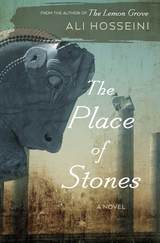 The Place of Stones: A Novel
Ali Hosseini
Northwestern University Press, 2017 Finalist, 2018 John Gardner Fiction prize
The Place of Stones is Ali Hosseini’s newly translated first novel, his second book to appear in English. In it, he paints a vivid portrait of Sangriz, a village in the southern part of Iran where life has been disrupted by industrialization and the revolution of 1979.
Haydar and Jamal are best friends, and their families have always made their living from the land in the foothills of Iran’s Zagros Mountains. Haydar is a dreamer who searches the hills for an ancient treasure called the Black Globe. Jamal is in love with Haydar’s sister, Golandam, and he attempts to accommodate himself to modernization as a way to create a better life for the two of them. The rapacious conversion of farmland to brick factories draws the trio into escalating conflict with the village landlord.
As Jamal, Haydar, and their families confront land reform, industrialization, revolution, and war, their lives are pulled forcefully toward the explosive events that will change them all. In masterfully crafted prose that never sinks into sentimentality, The Place of Stones illuminates how a lost past continues to shape the present.
The Place of the Hidden Moon: Erotic Mysticism in the Vaisnava-Sahajiya Cult of Bengal
Edward C. Dimock Jr.
University of Chicago Press, 1989 The Vaisnava-sahajiya cult that arose in Bengal in the sixteenth century was an intensely emotional attempt to reconcile the sensual and the ascetic. Exploring the history and doctrine of this cult, Edward C. Dimock, Jr., examines the works of numerous poets who are the source of knowledge about this sect. Dimock examines the life of the saint Caitanya, the mad Baul singers, the doctrines of Tantrism, the origins of the figure of Radha, and the worship of Krishna. His study will appeal to students of the history of religion as well as of Indian culture. This edition includes a new Foreword by Wendy Doniger.
"This is a magnificent book—painstakingly researched and gracefully written. . . . Professor Dimock's book is one of the most rewarding and stimulating studies to appear in recent years."—G. Richard Weldon, Journal of Asian Studies
|
|

